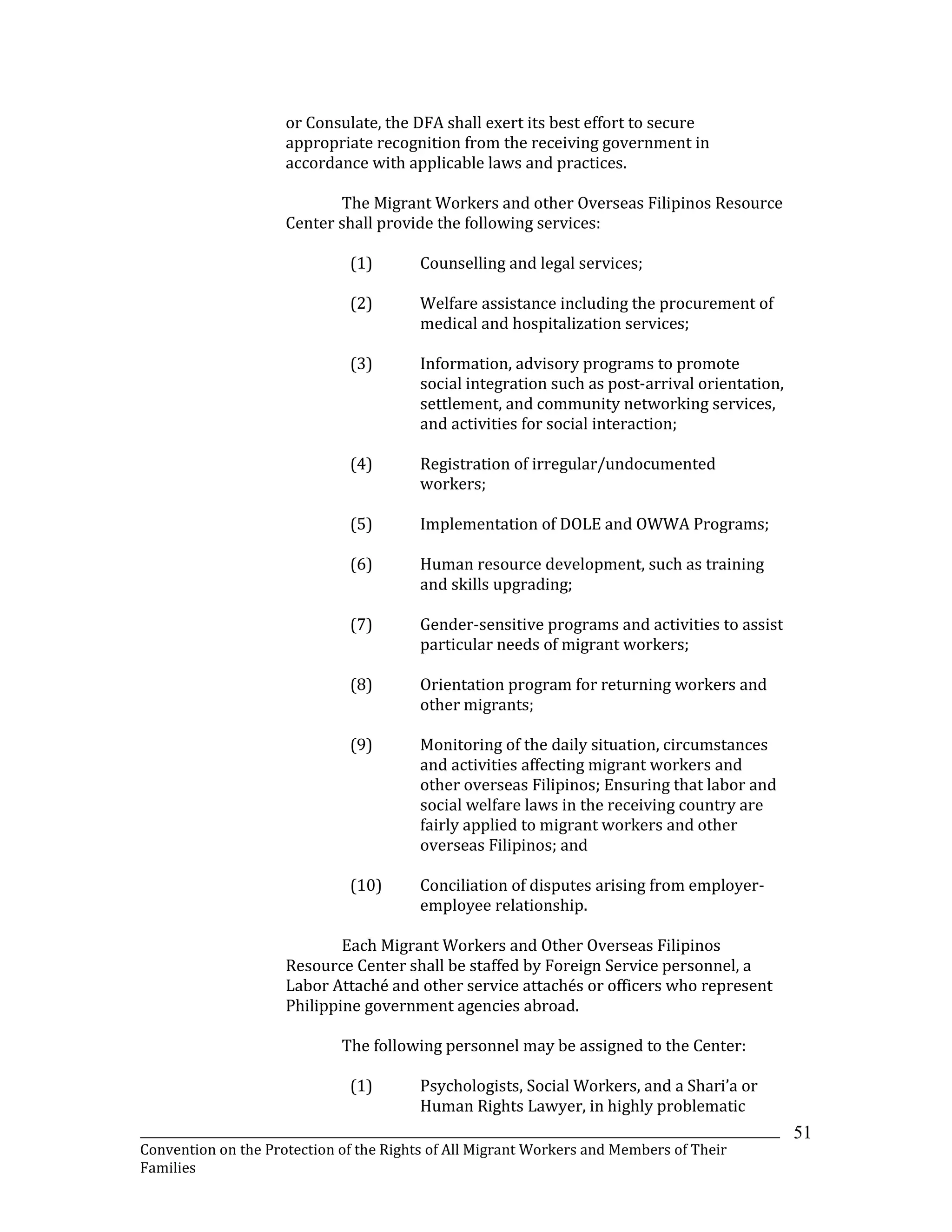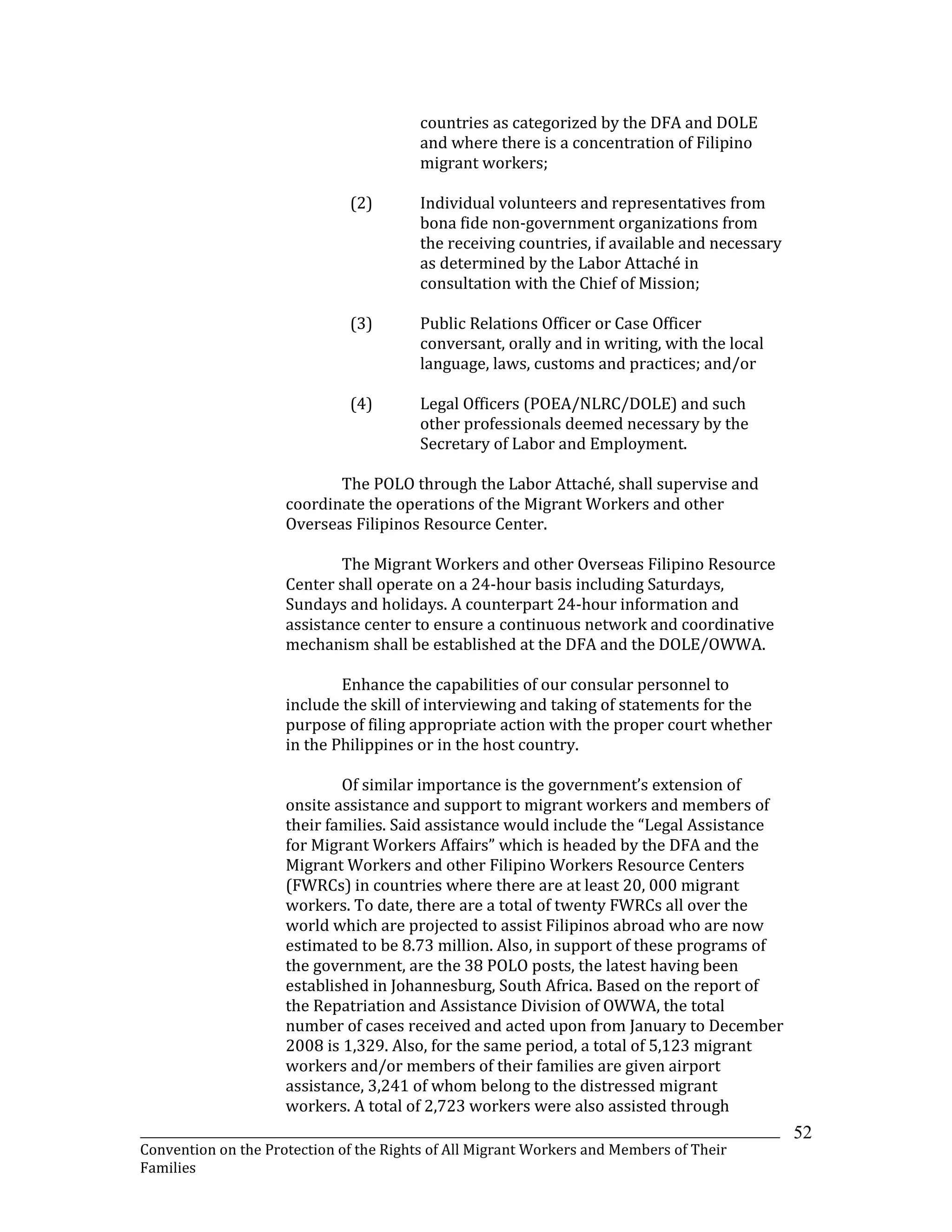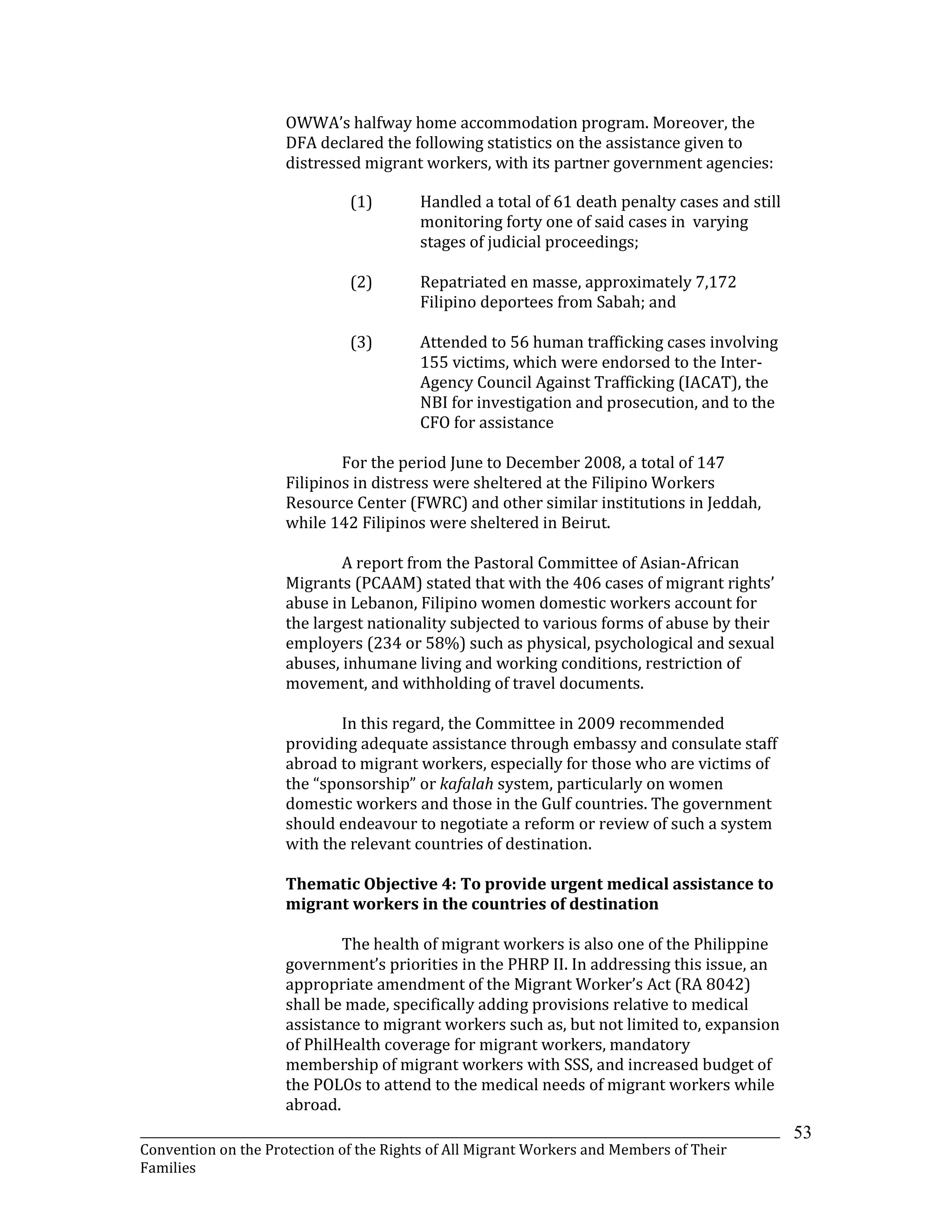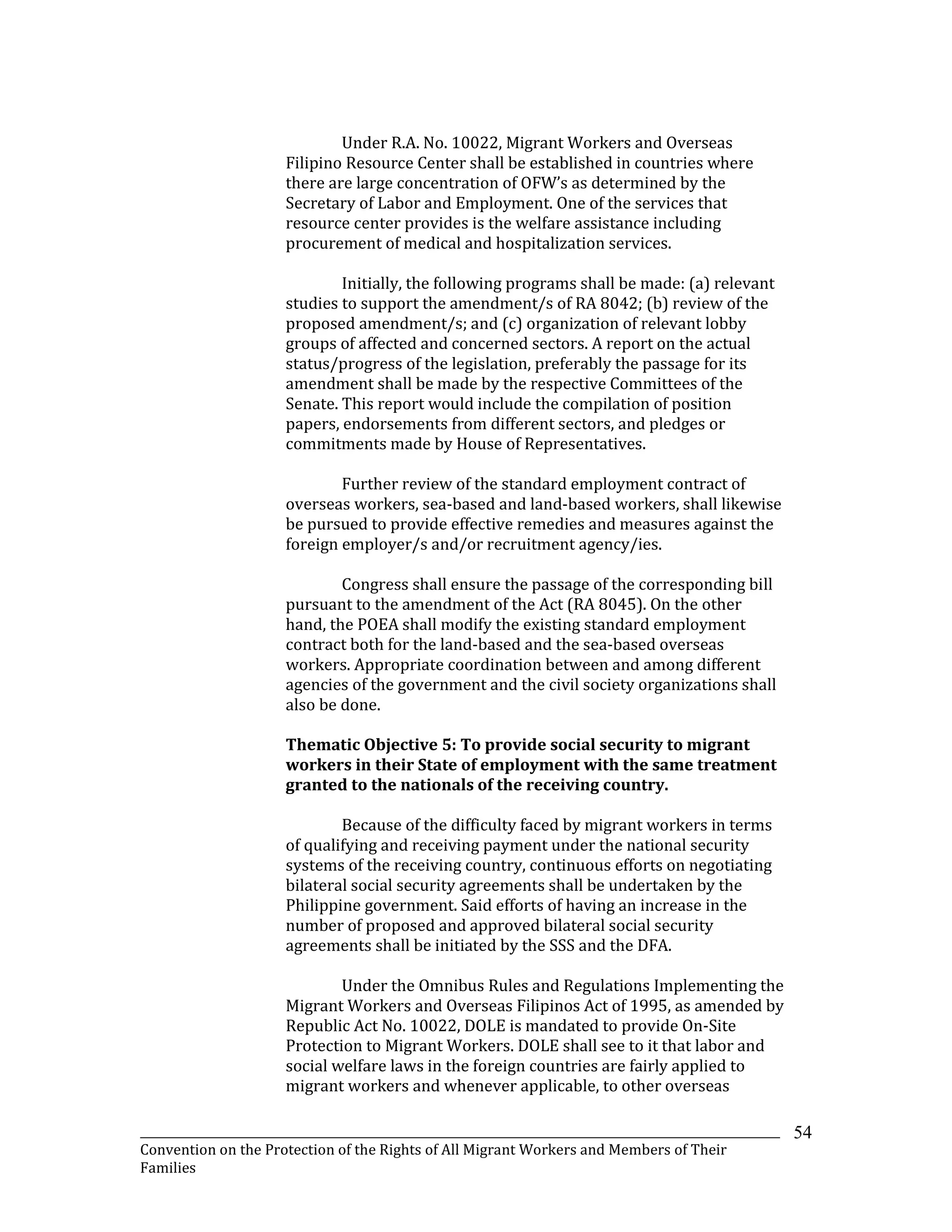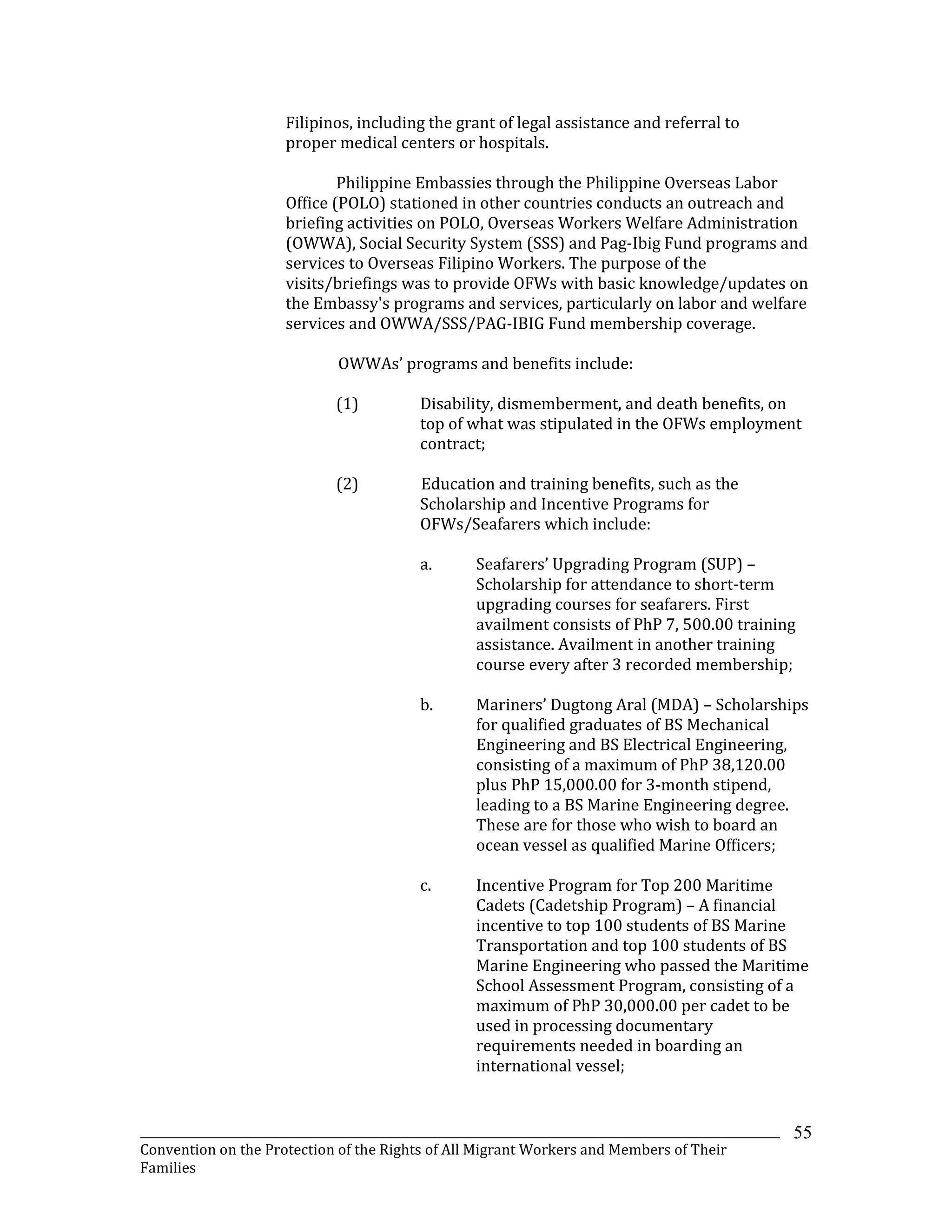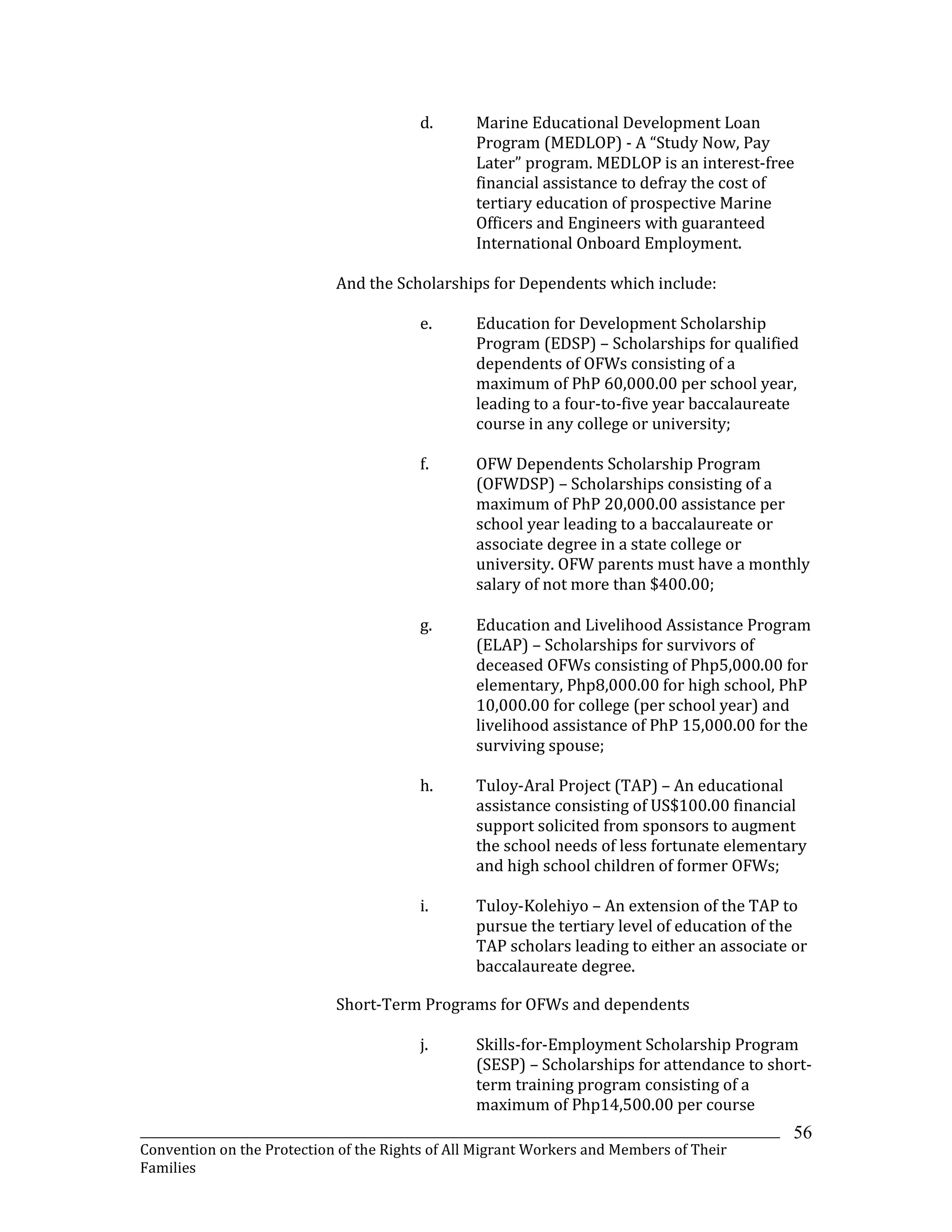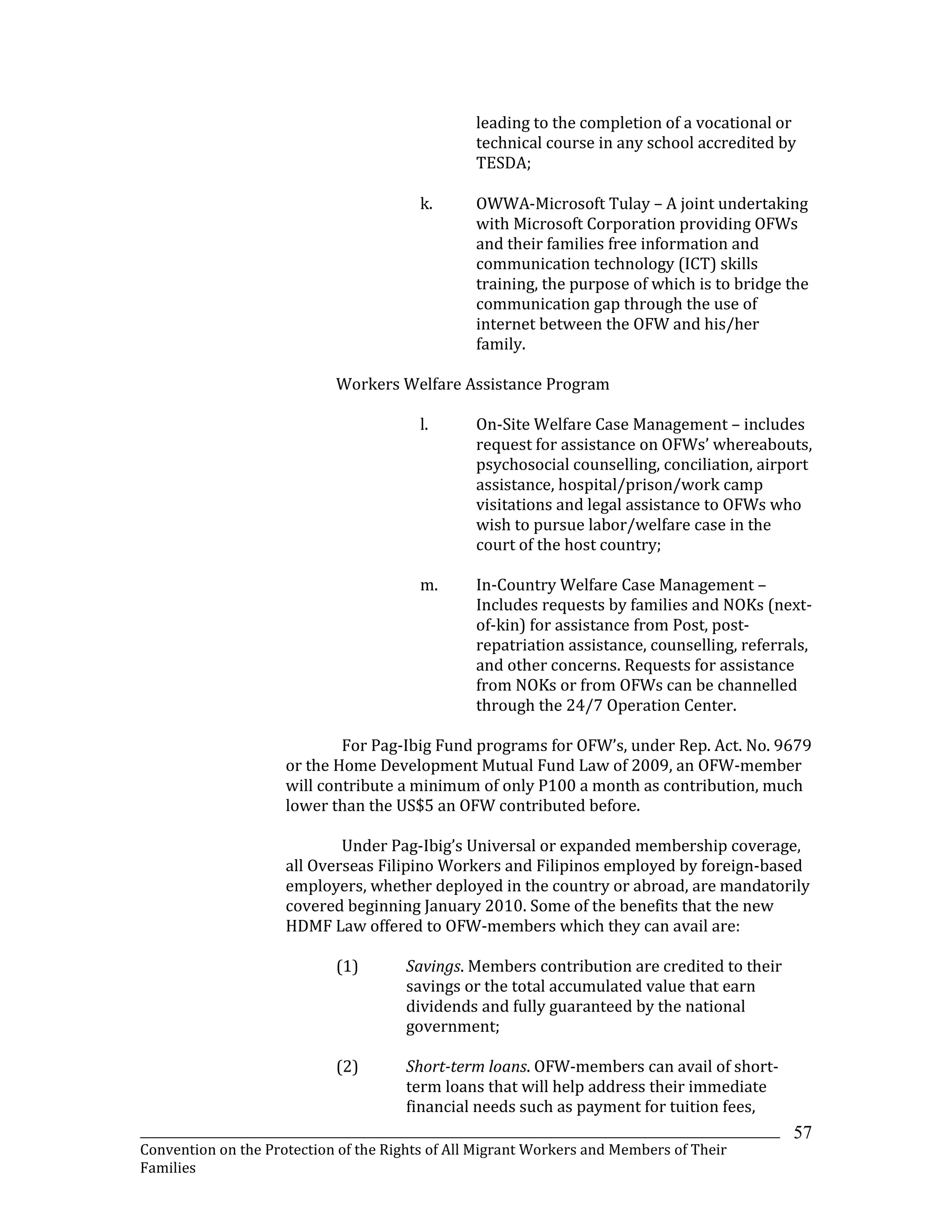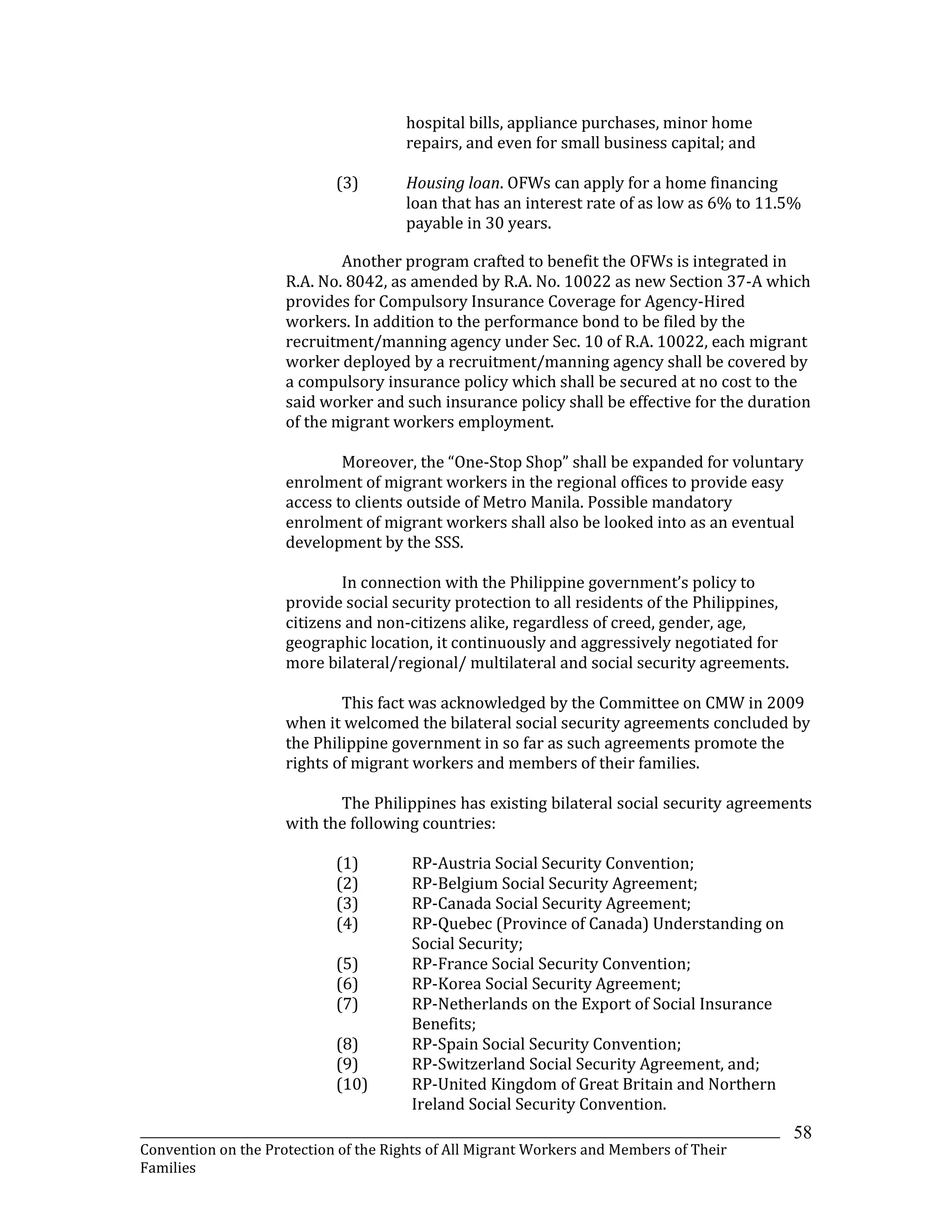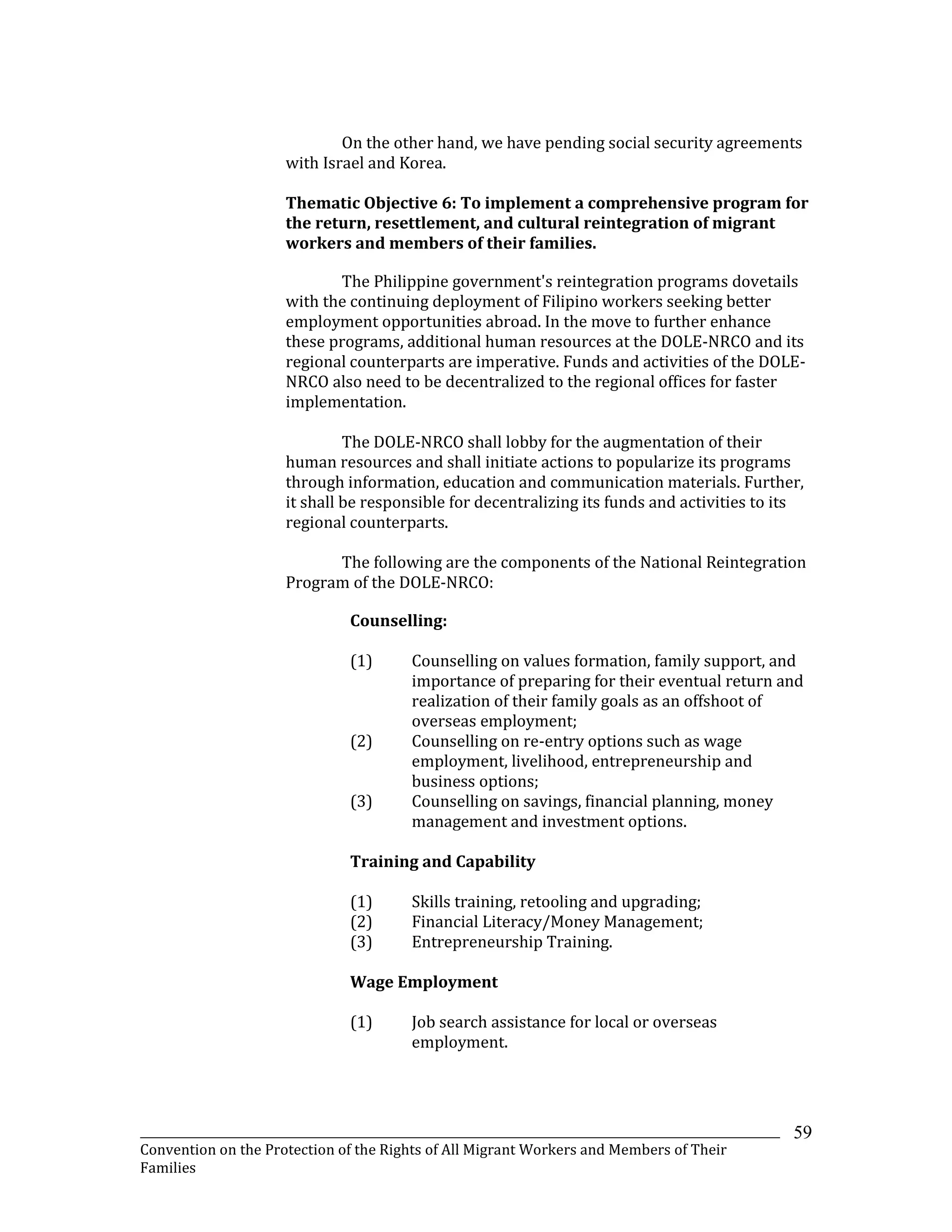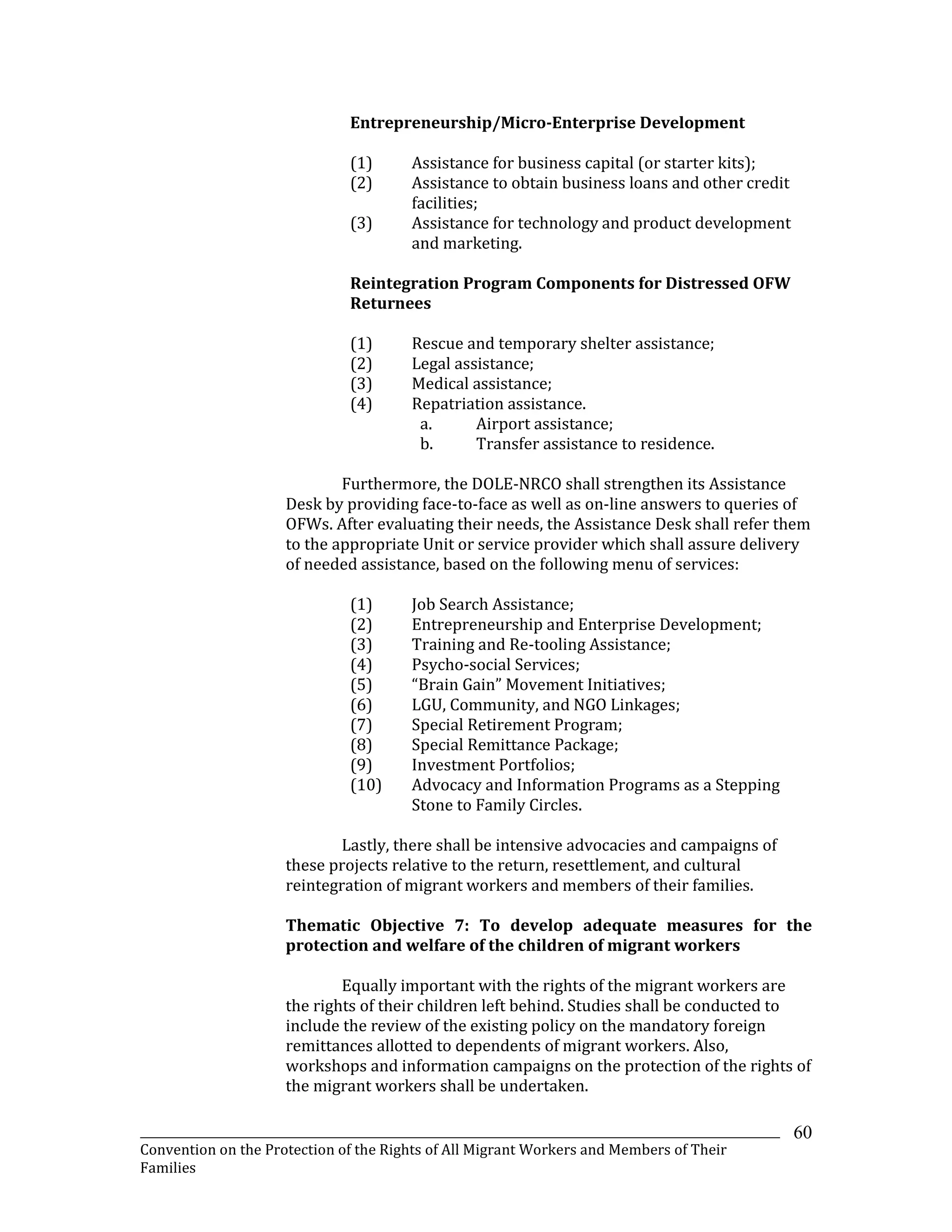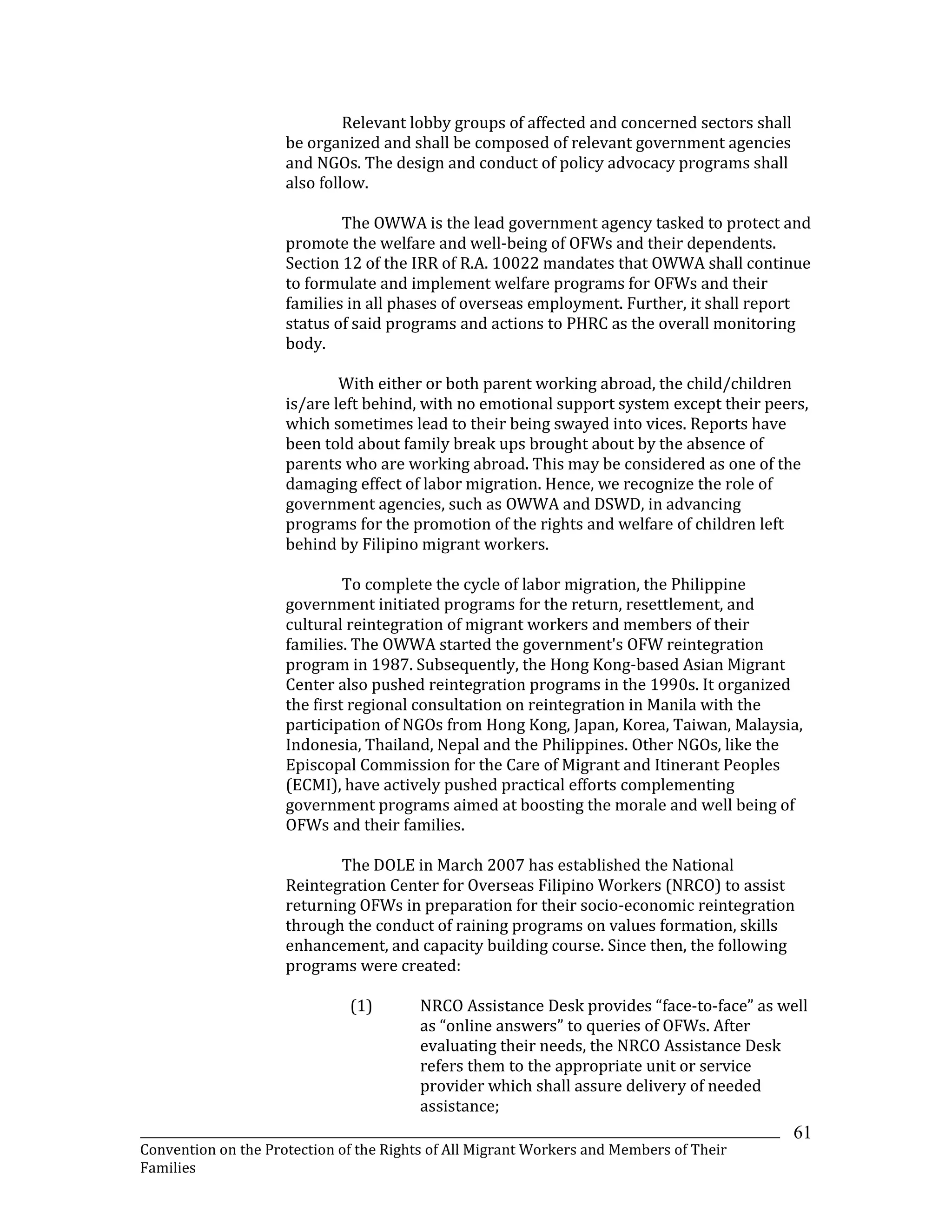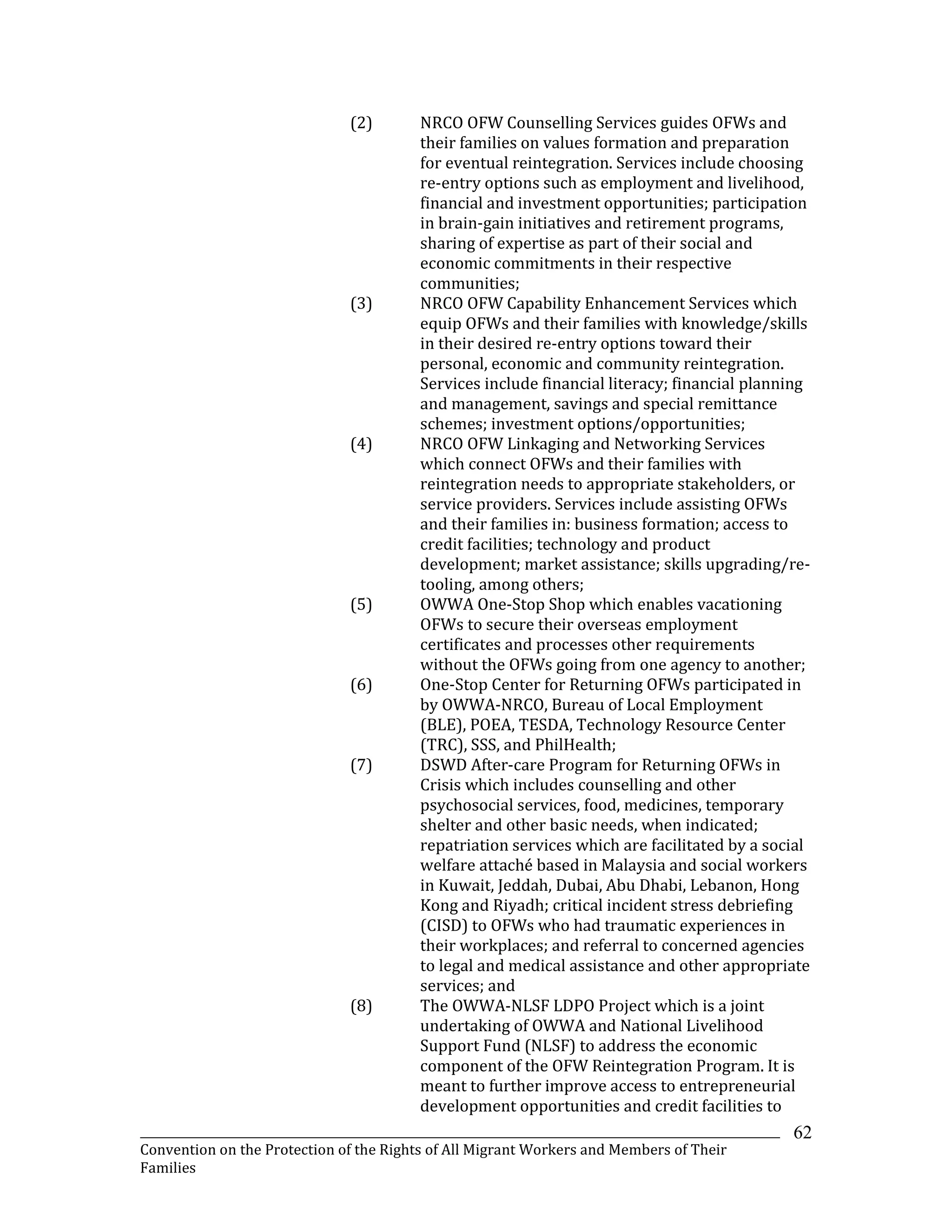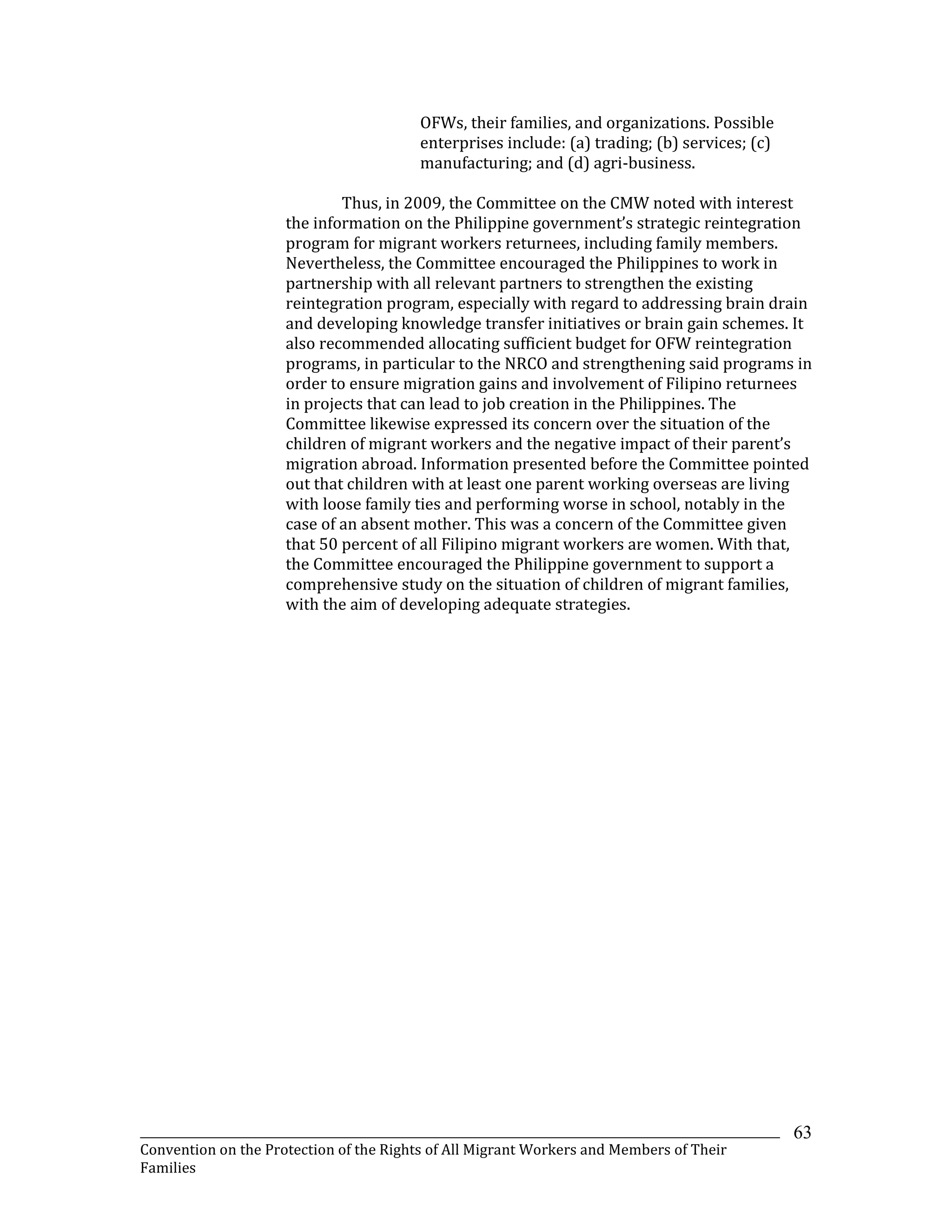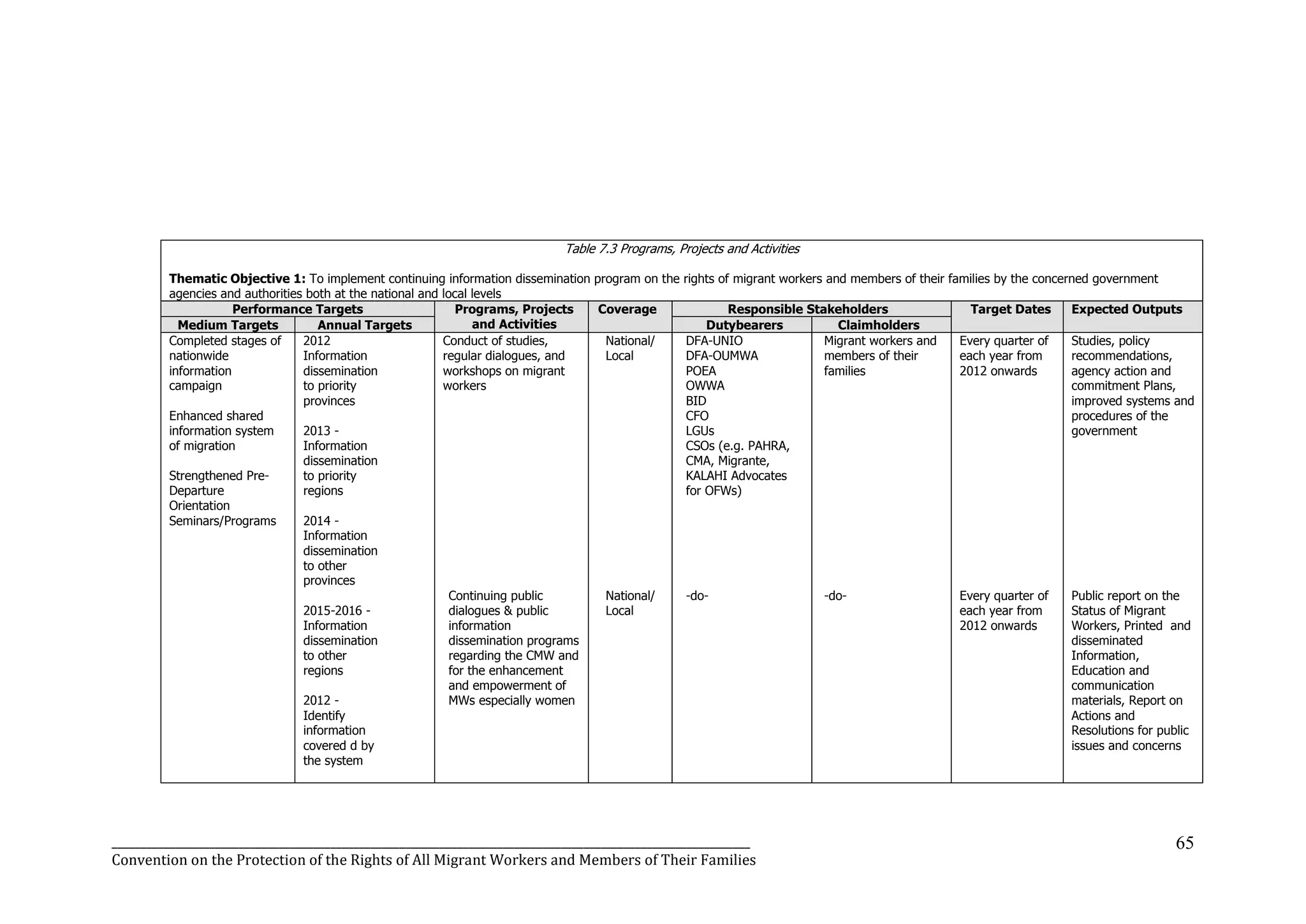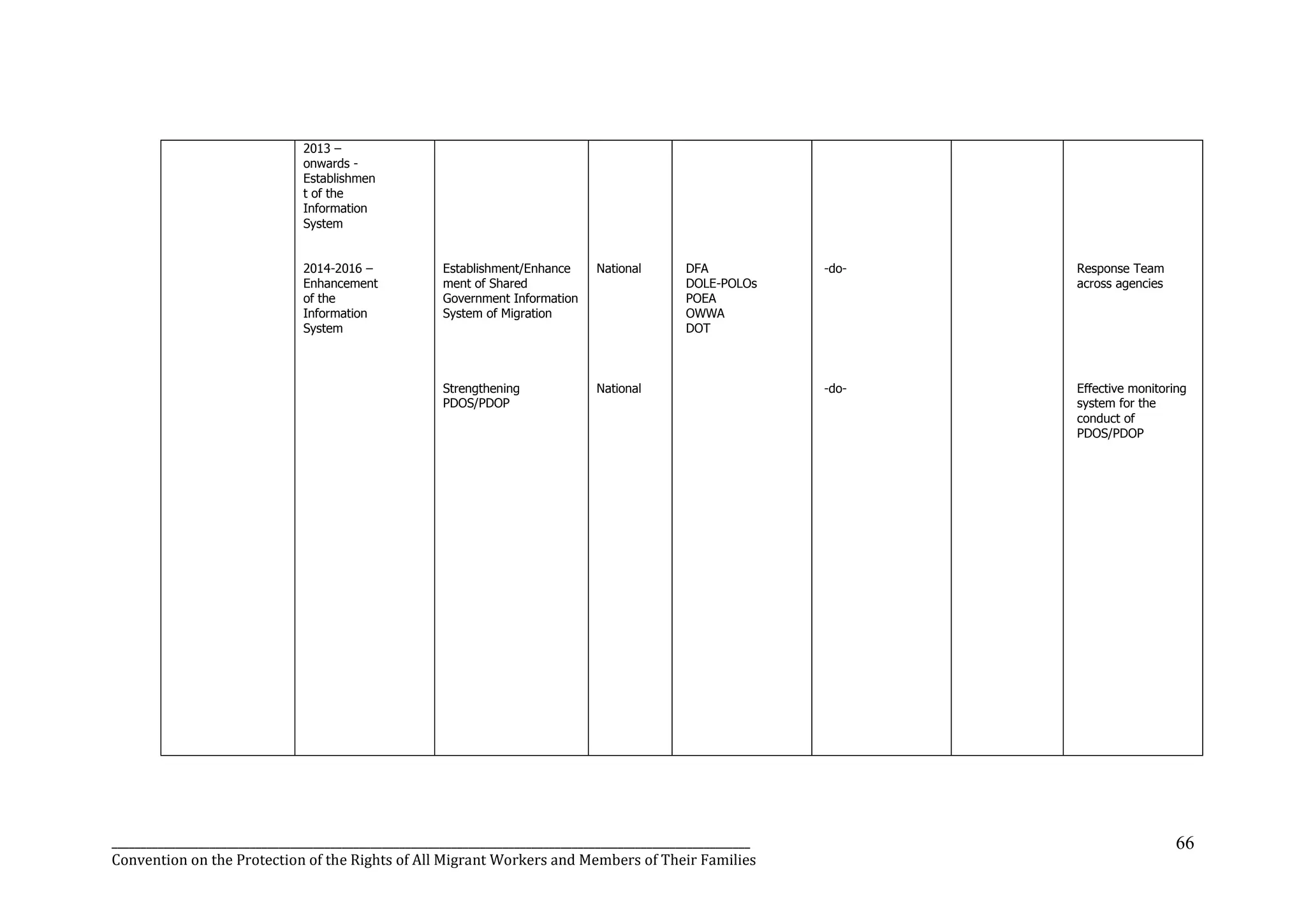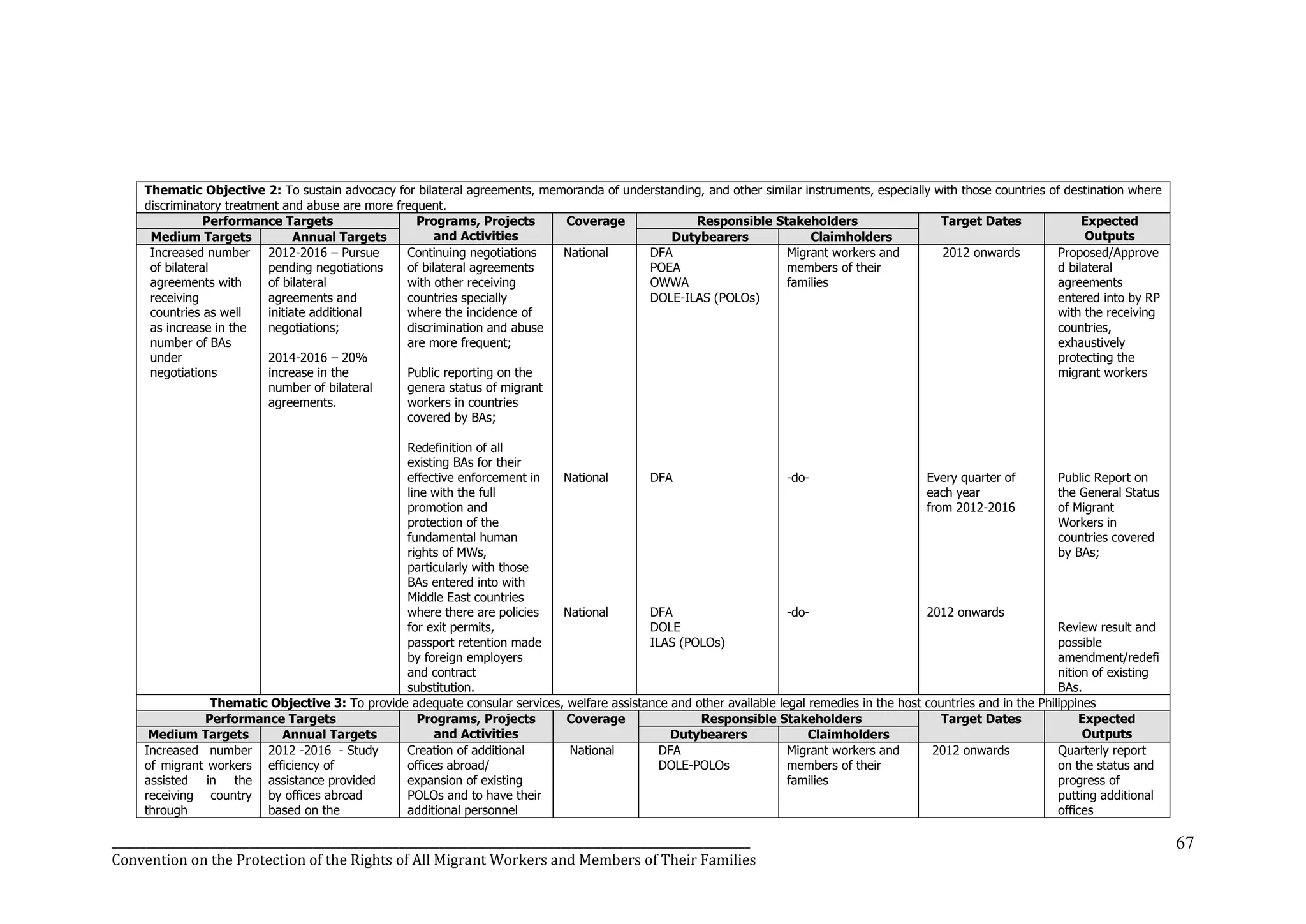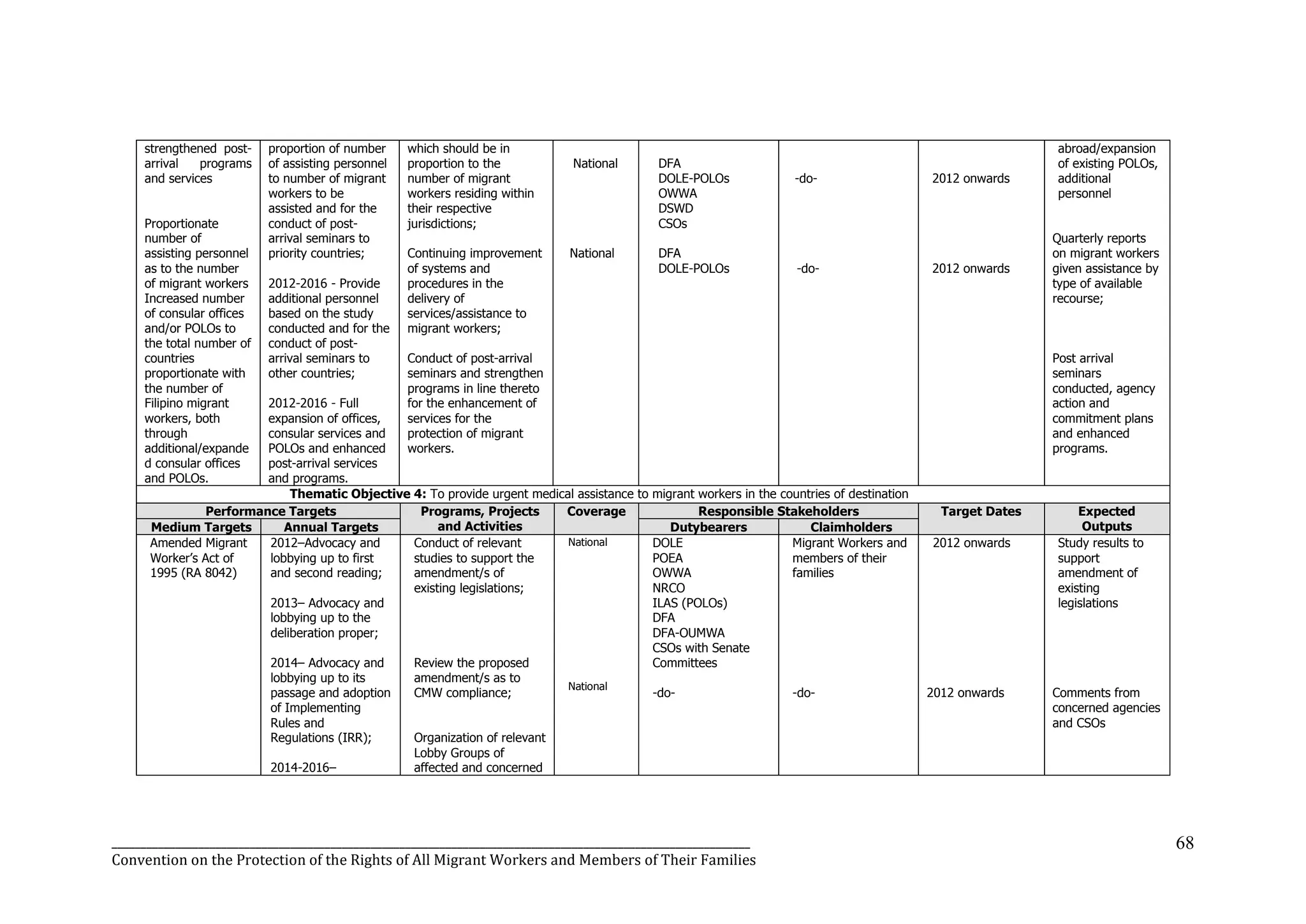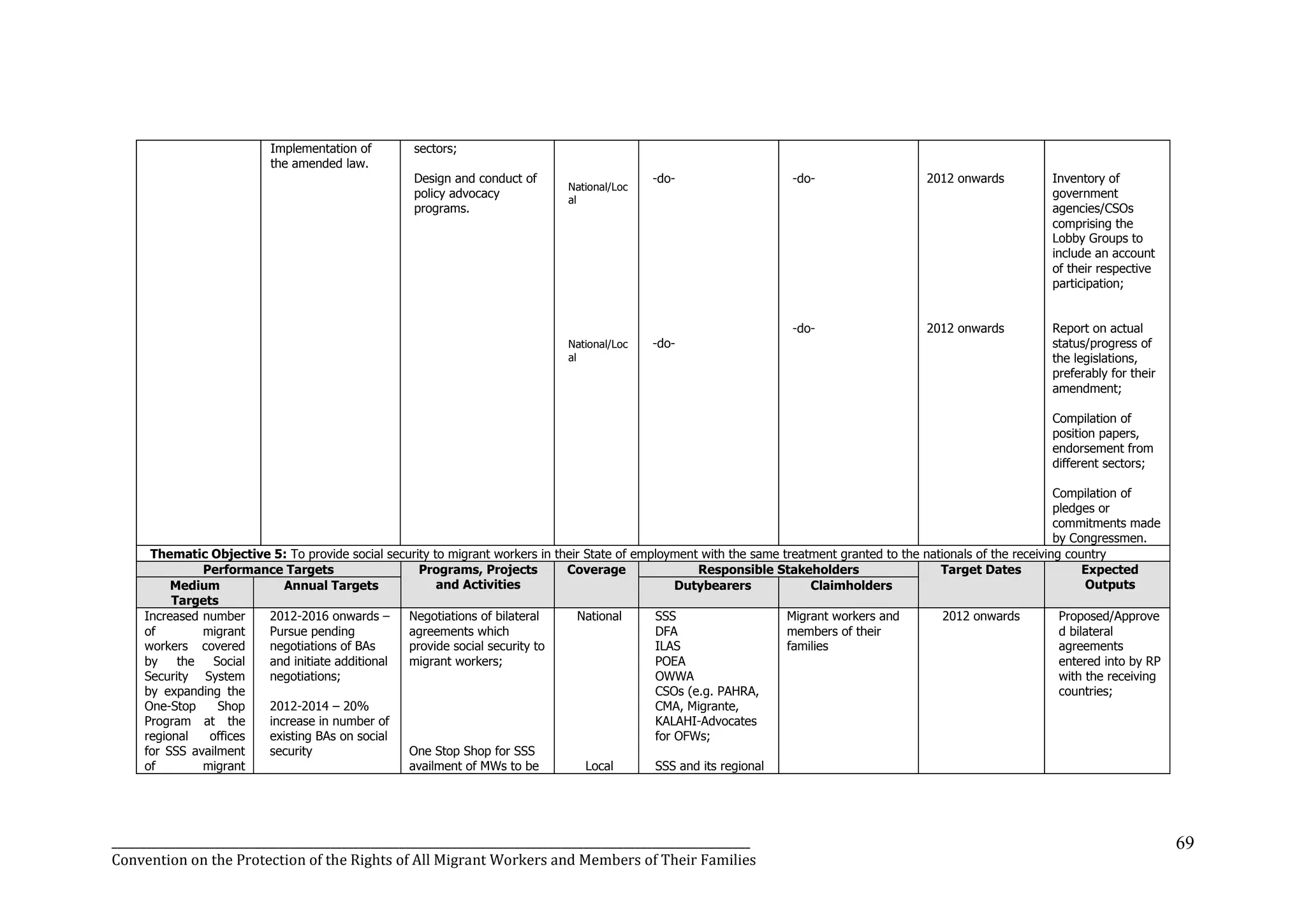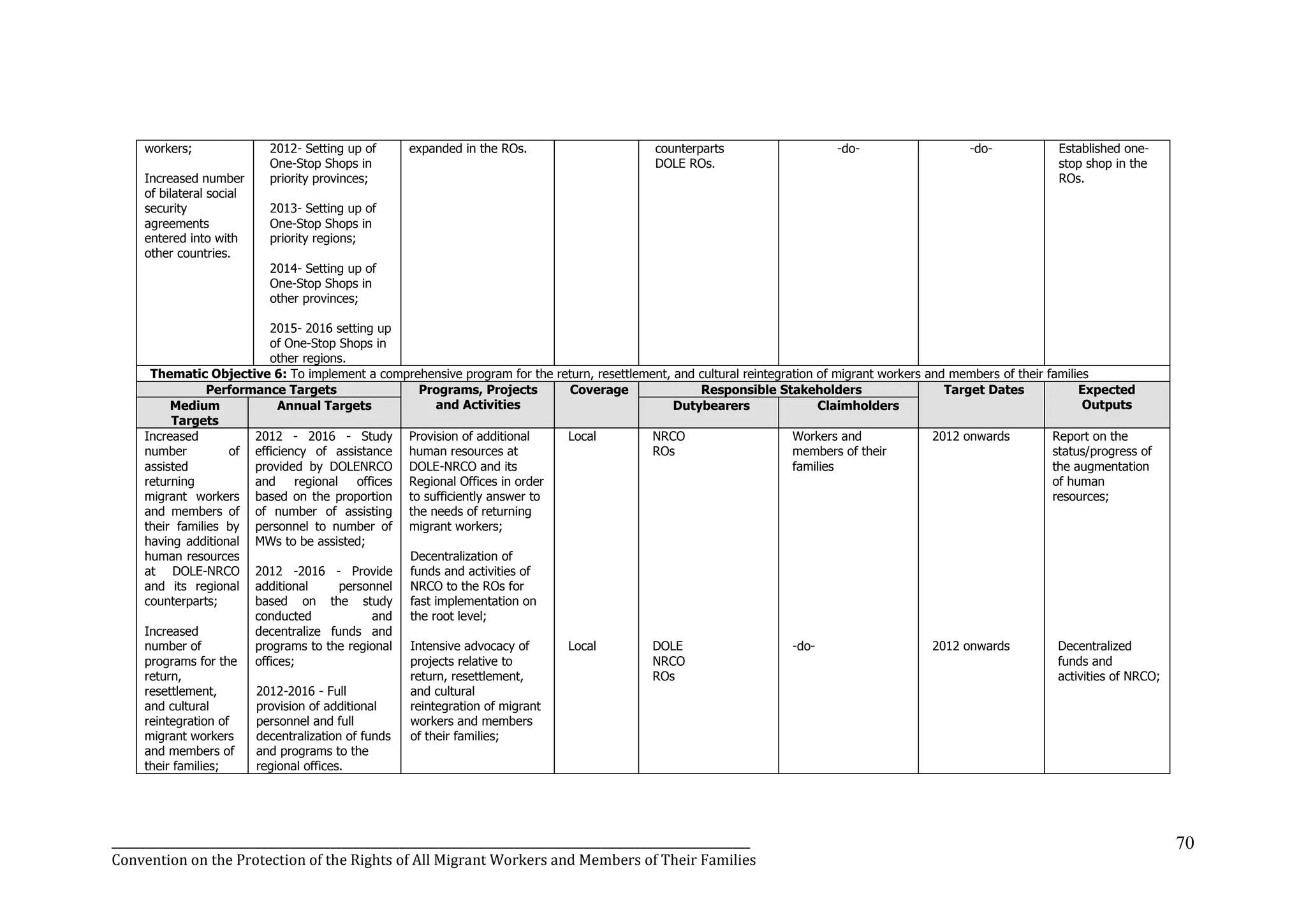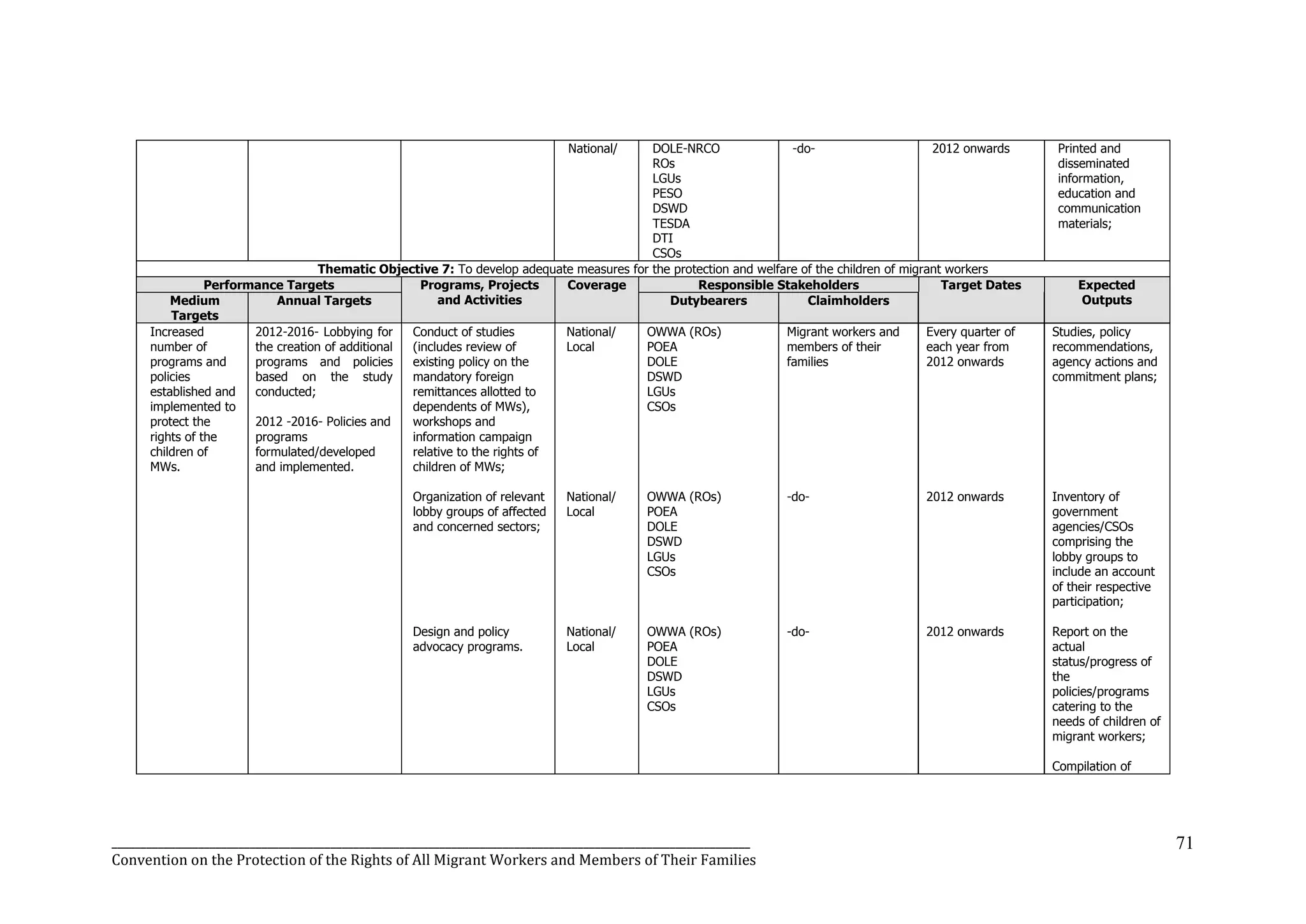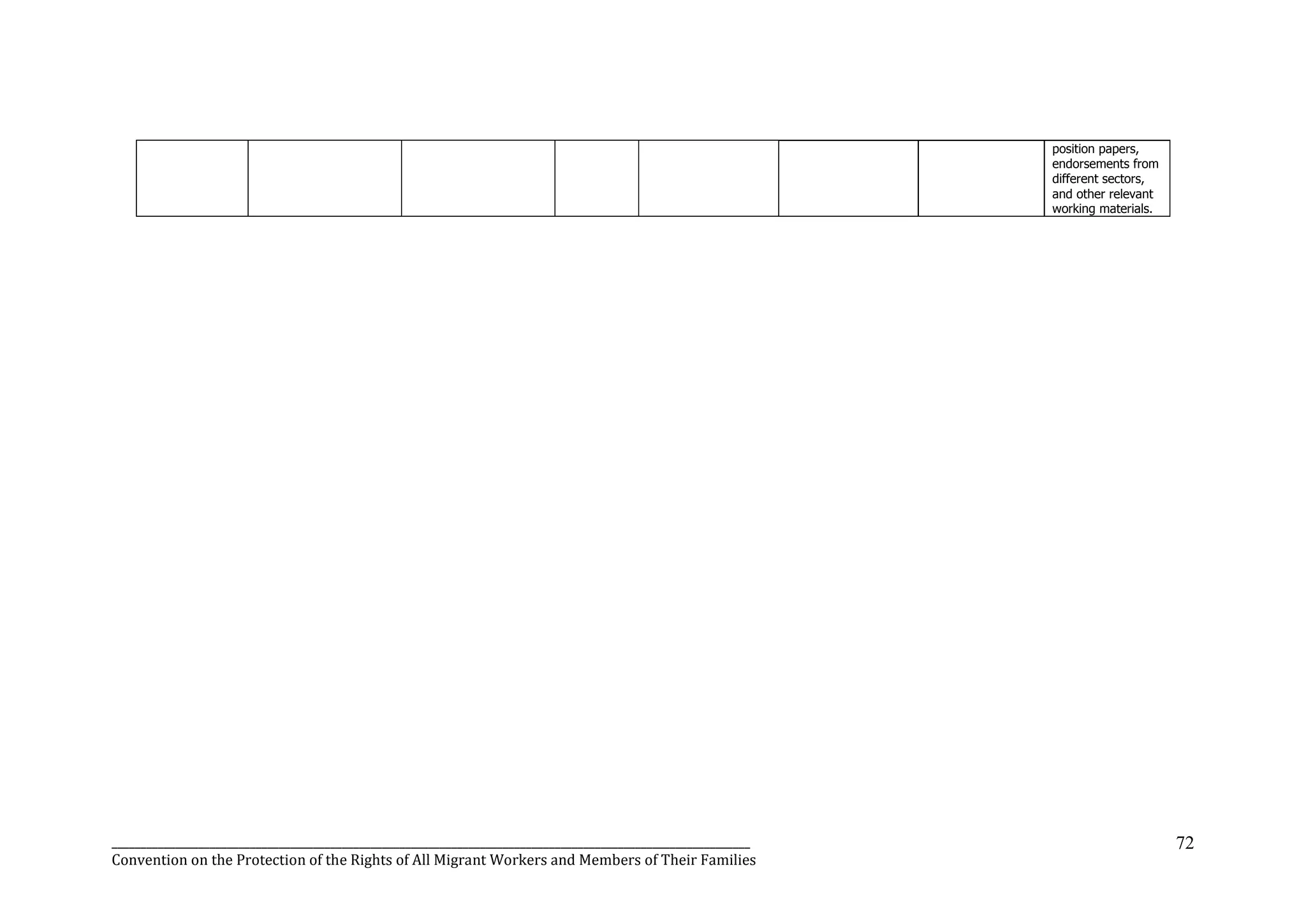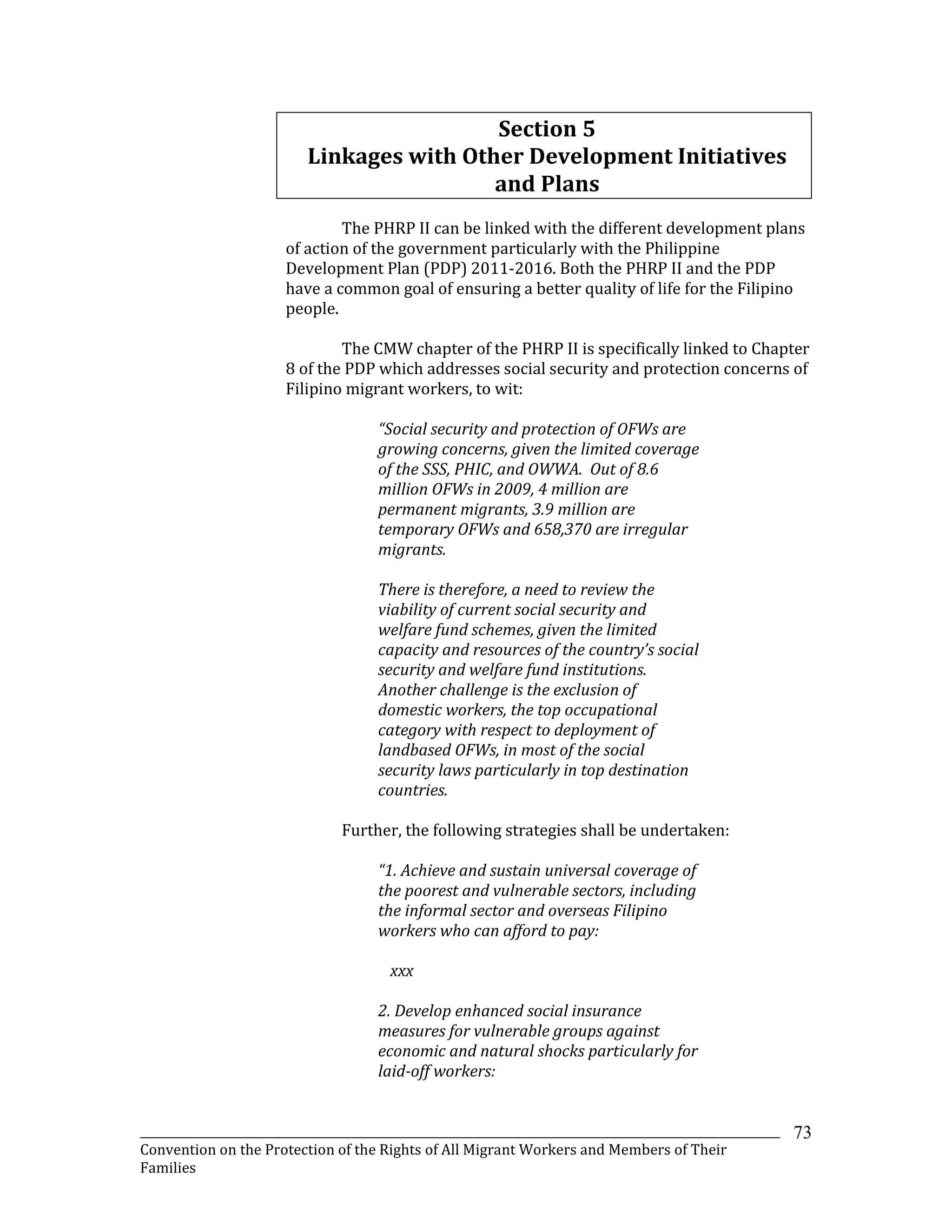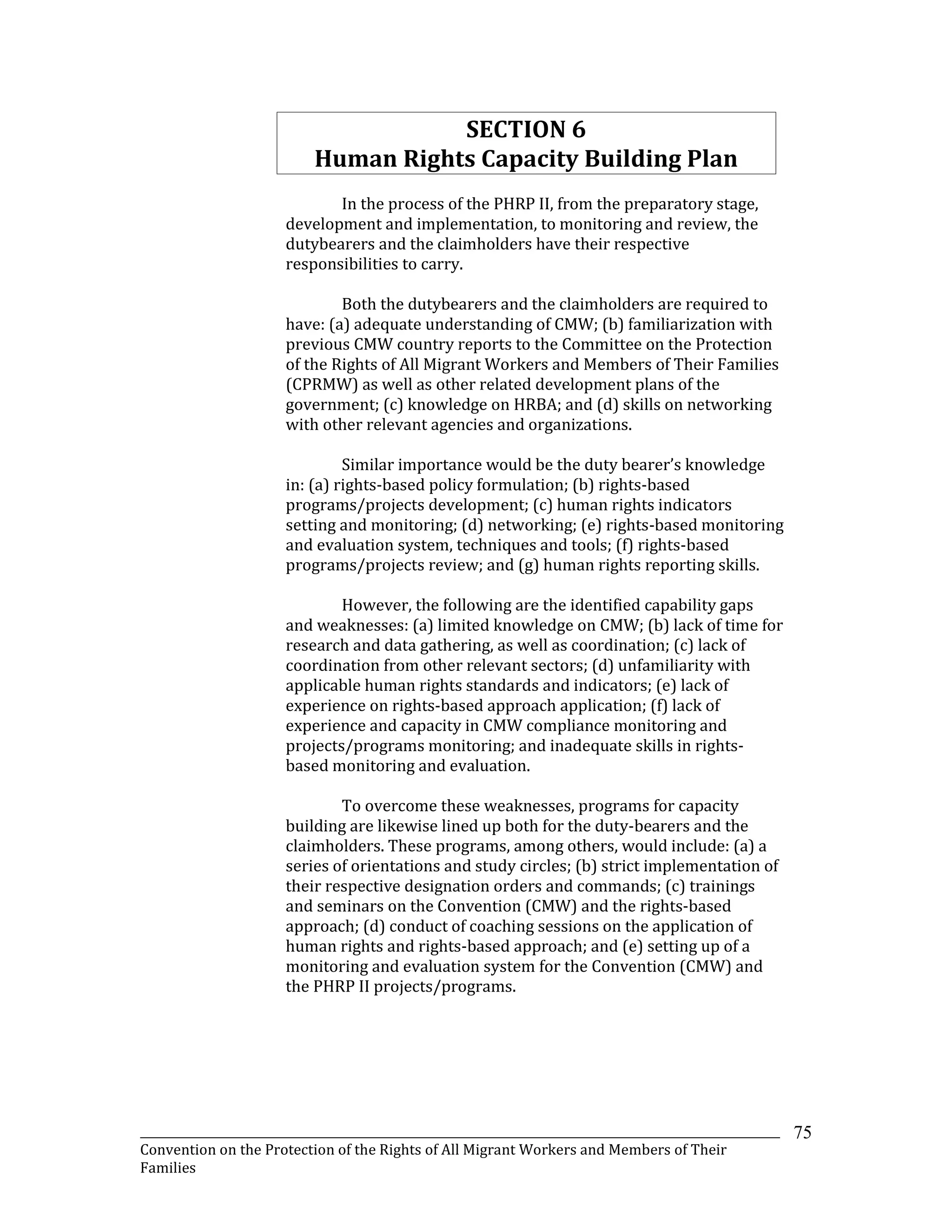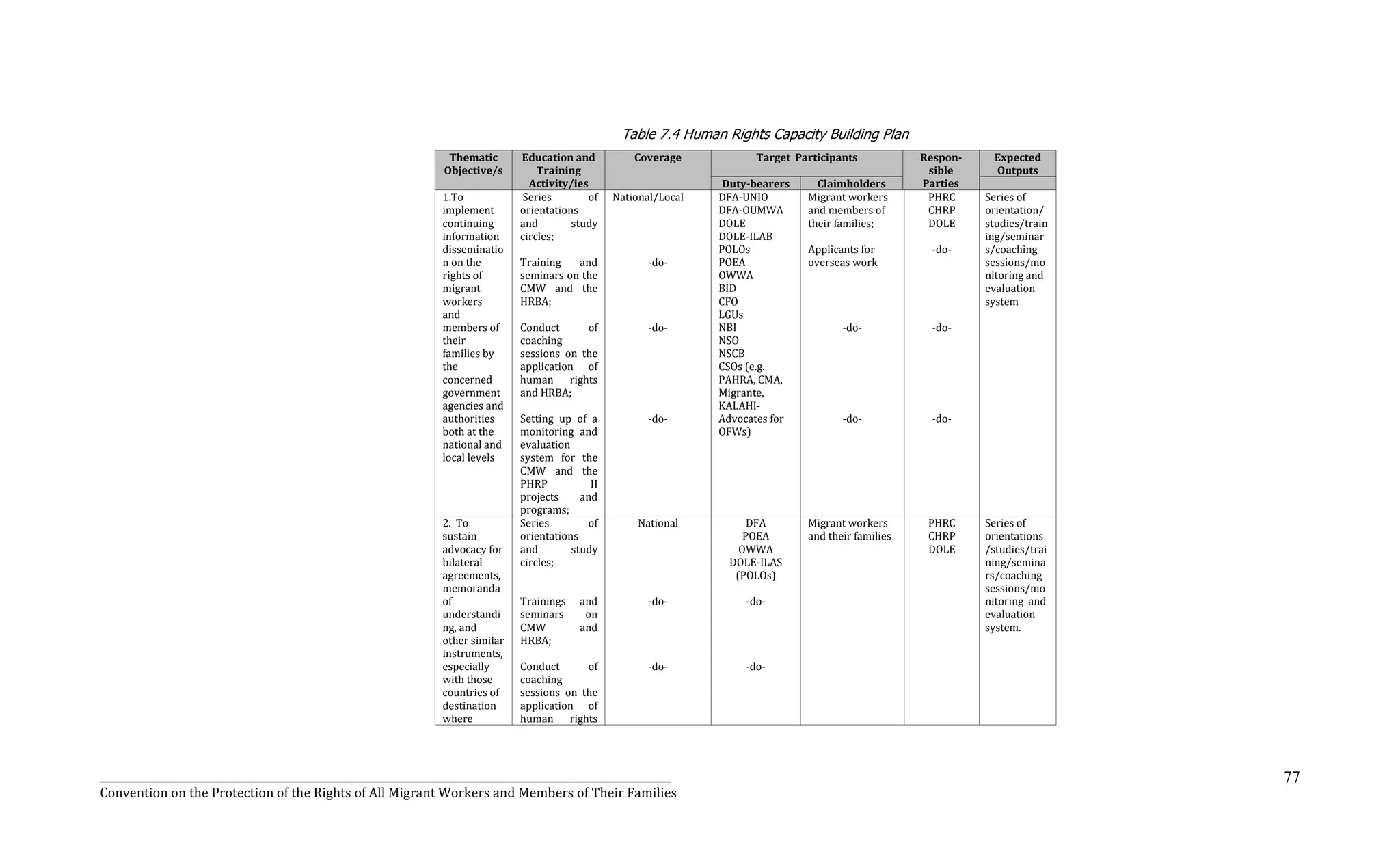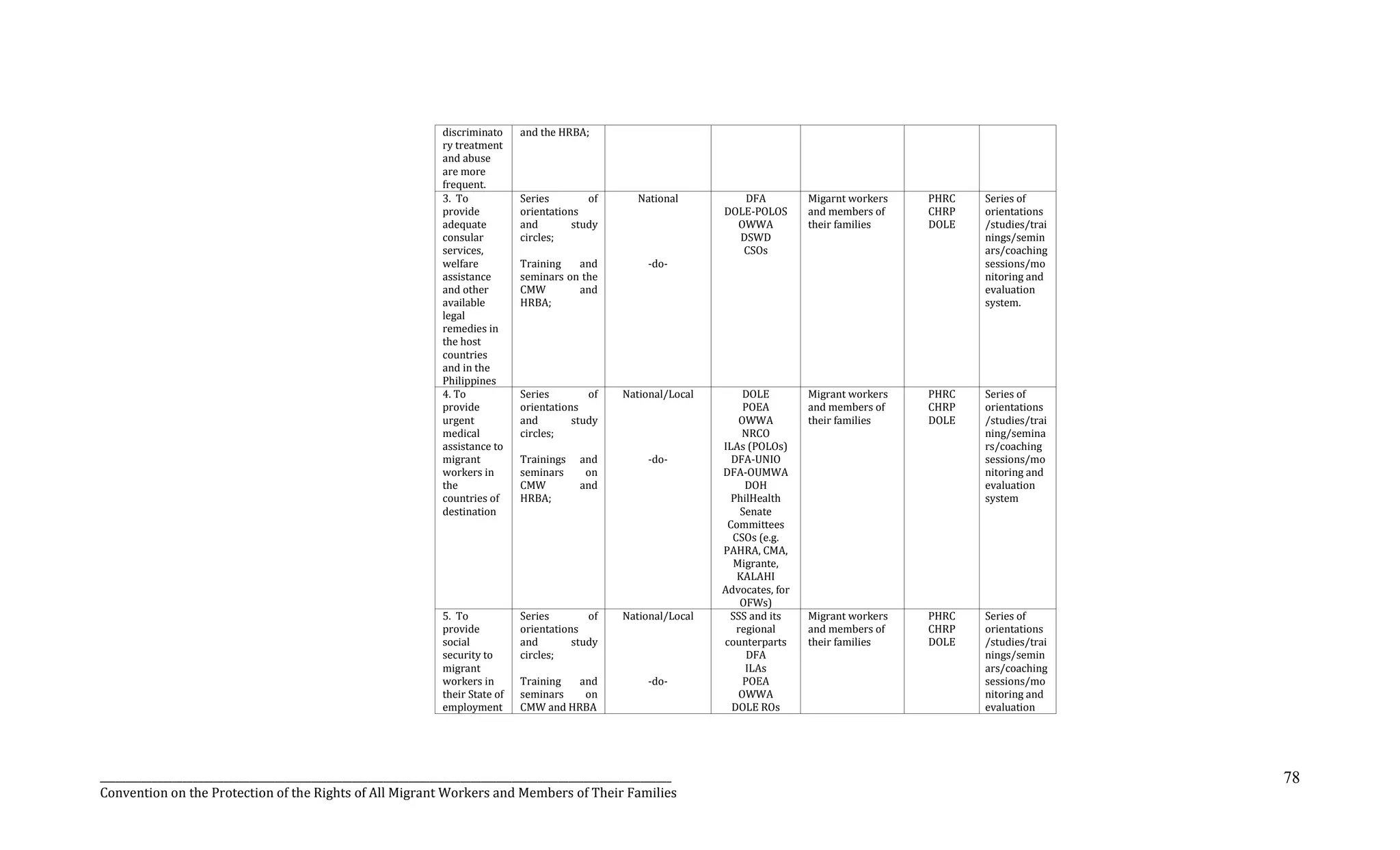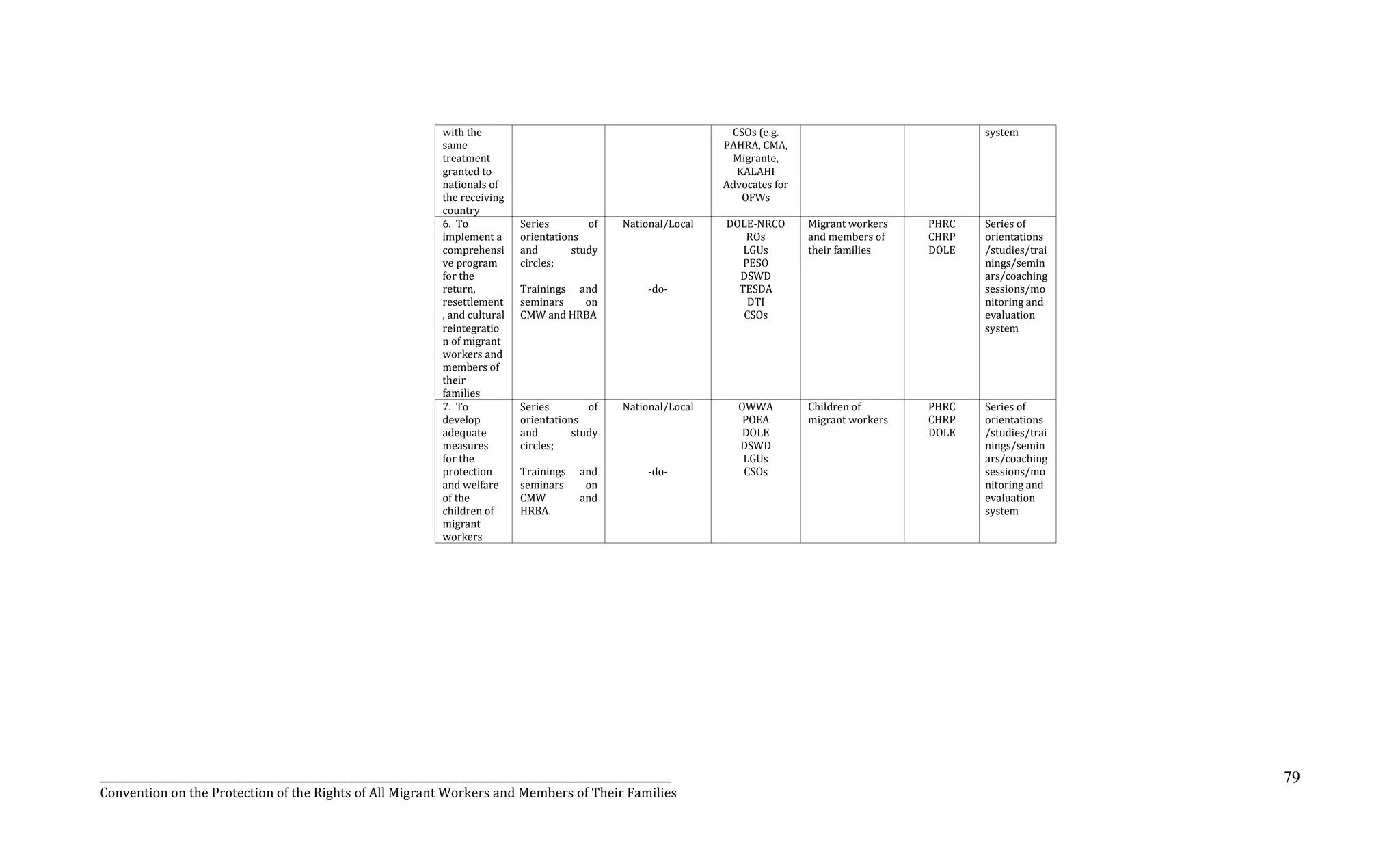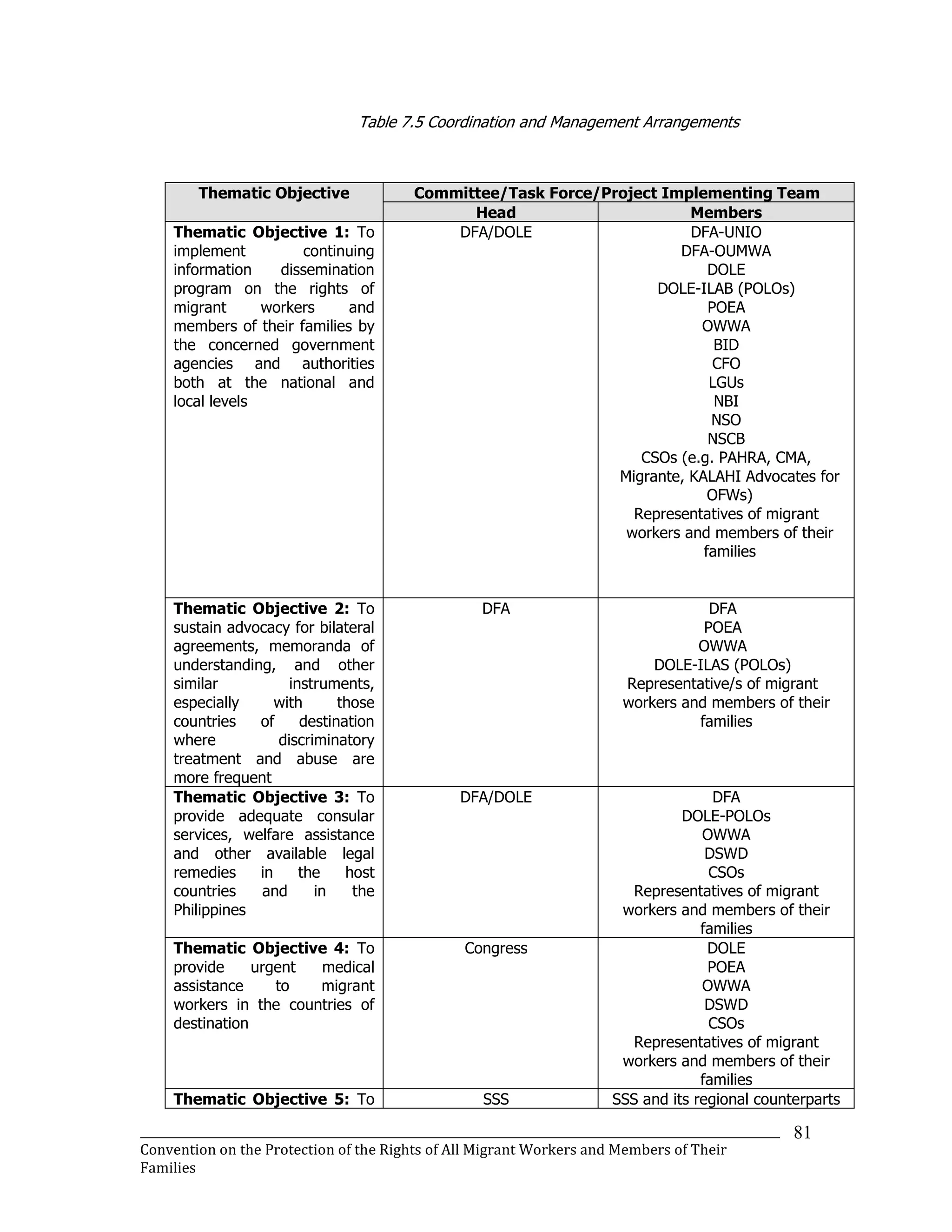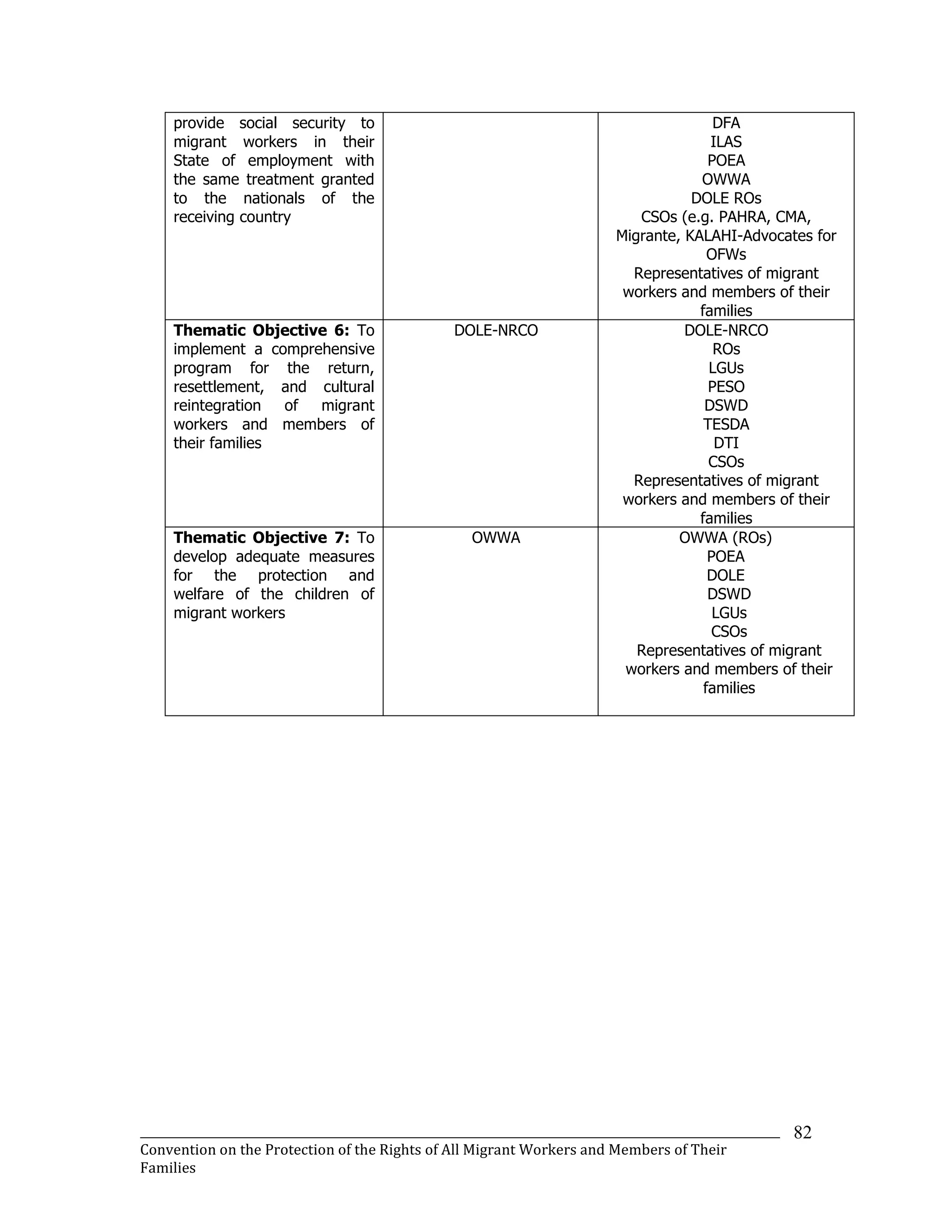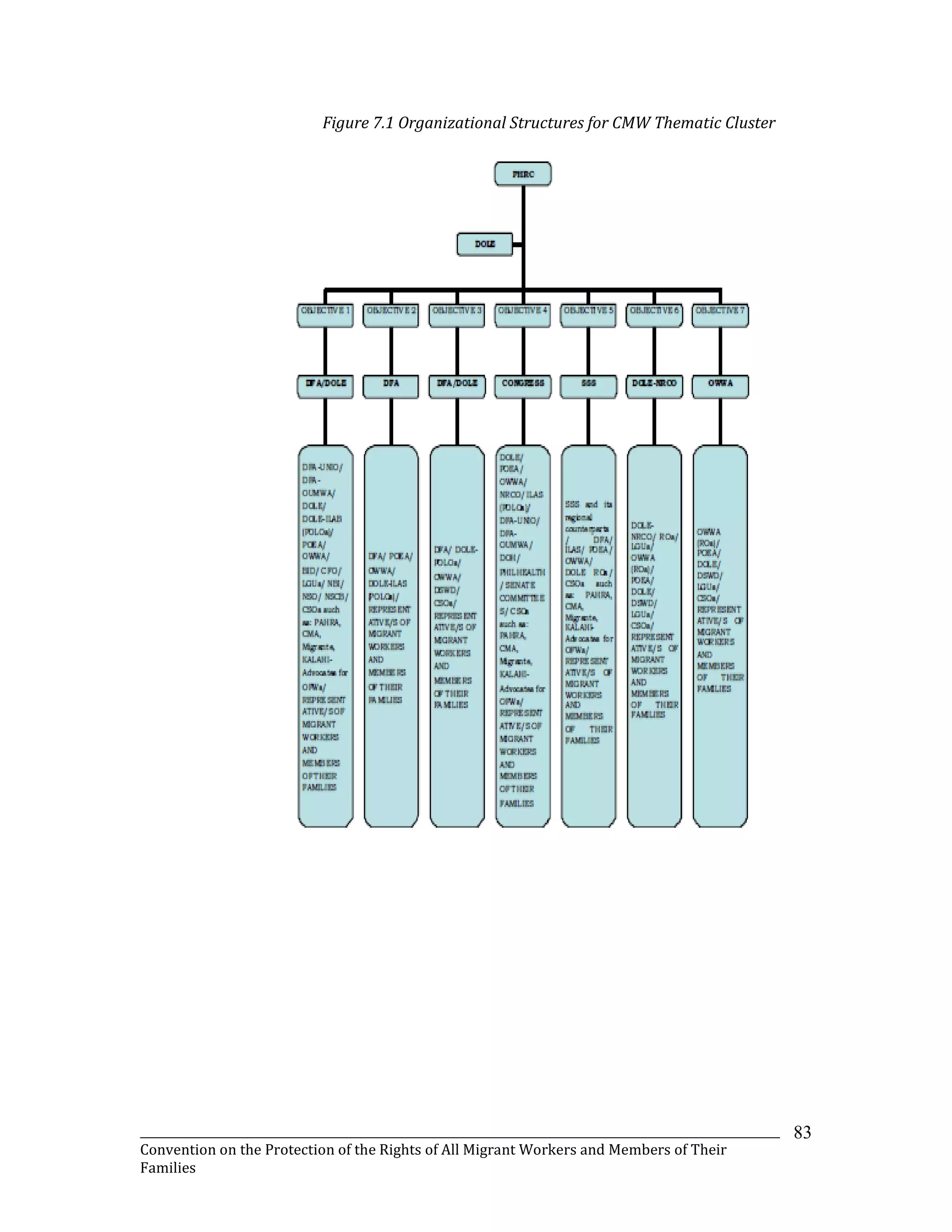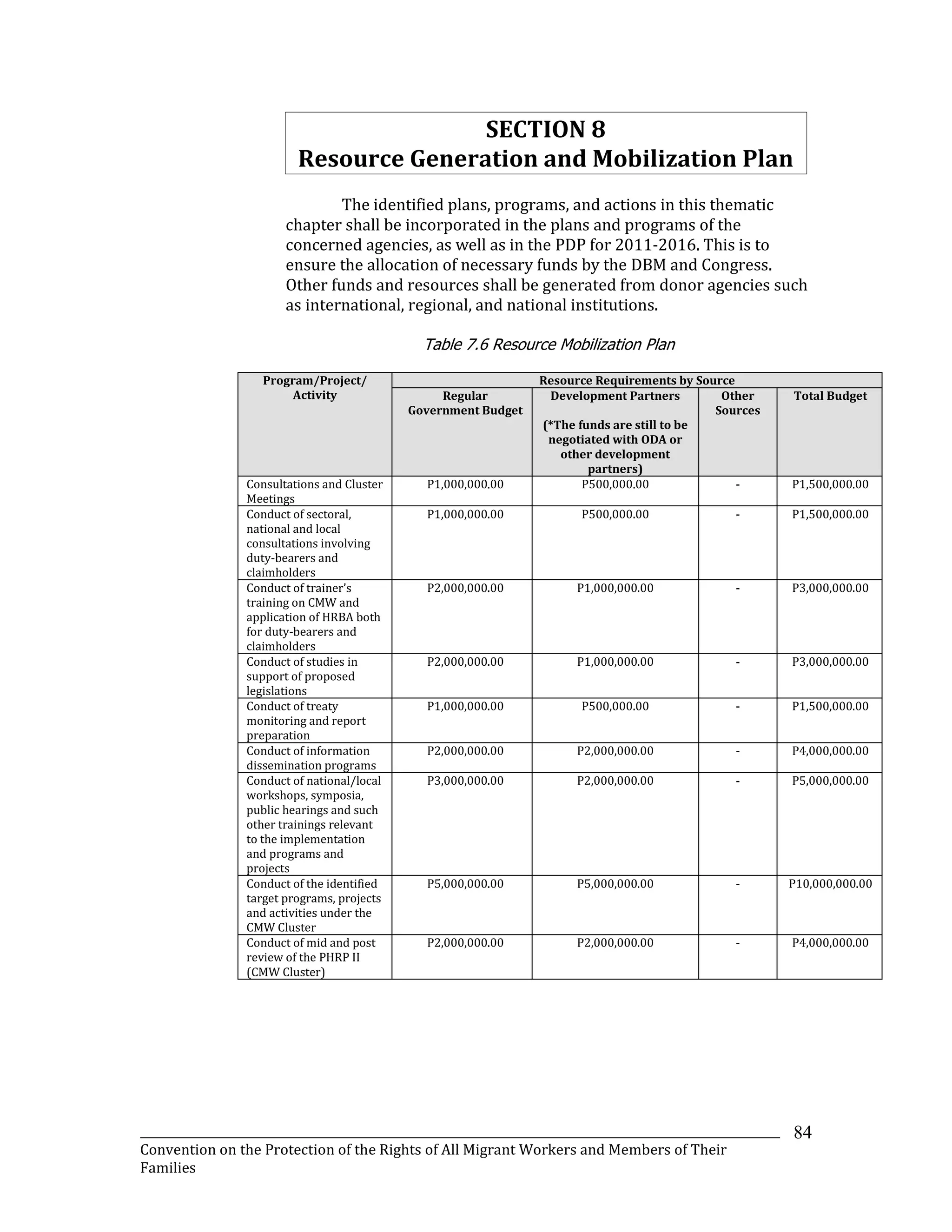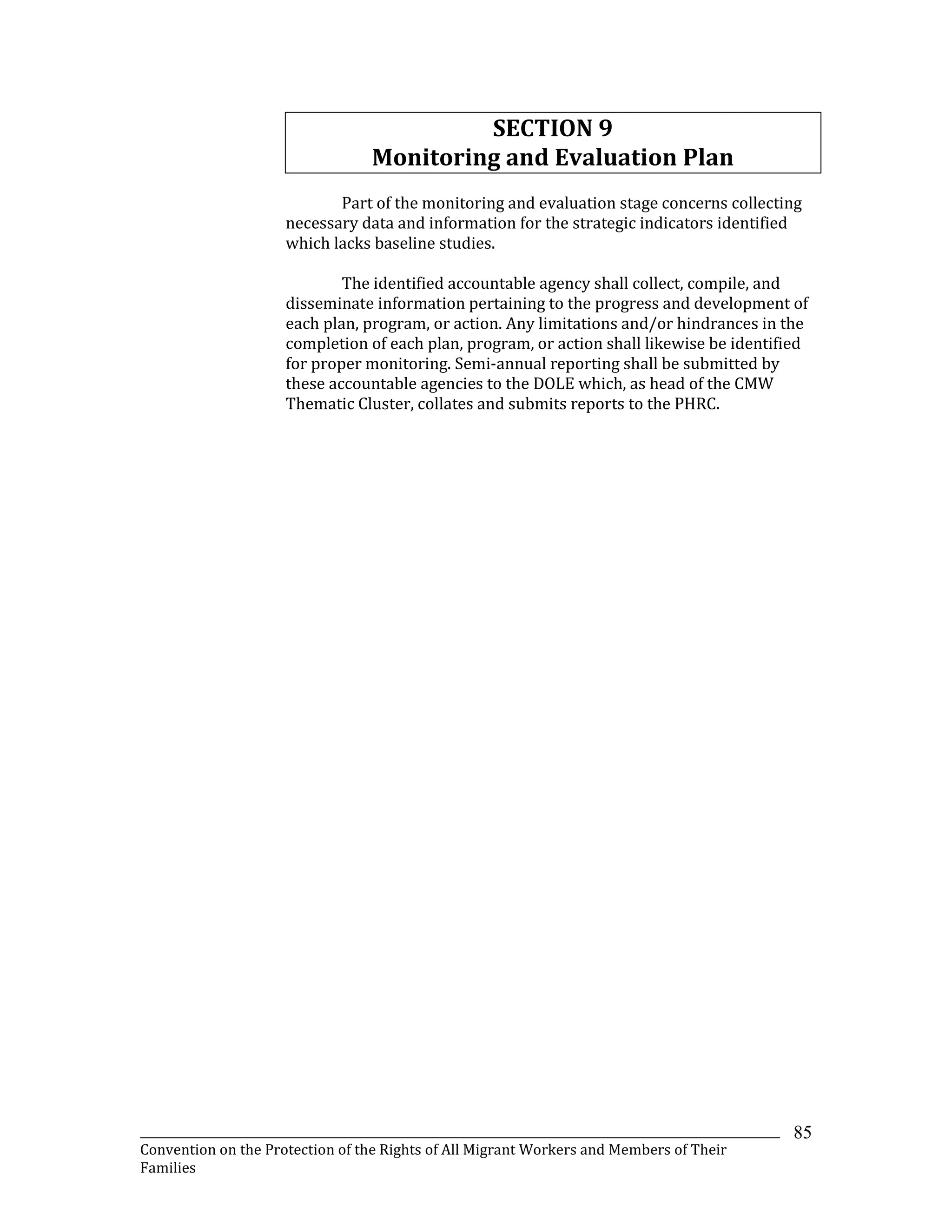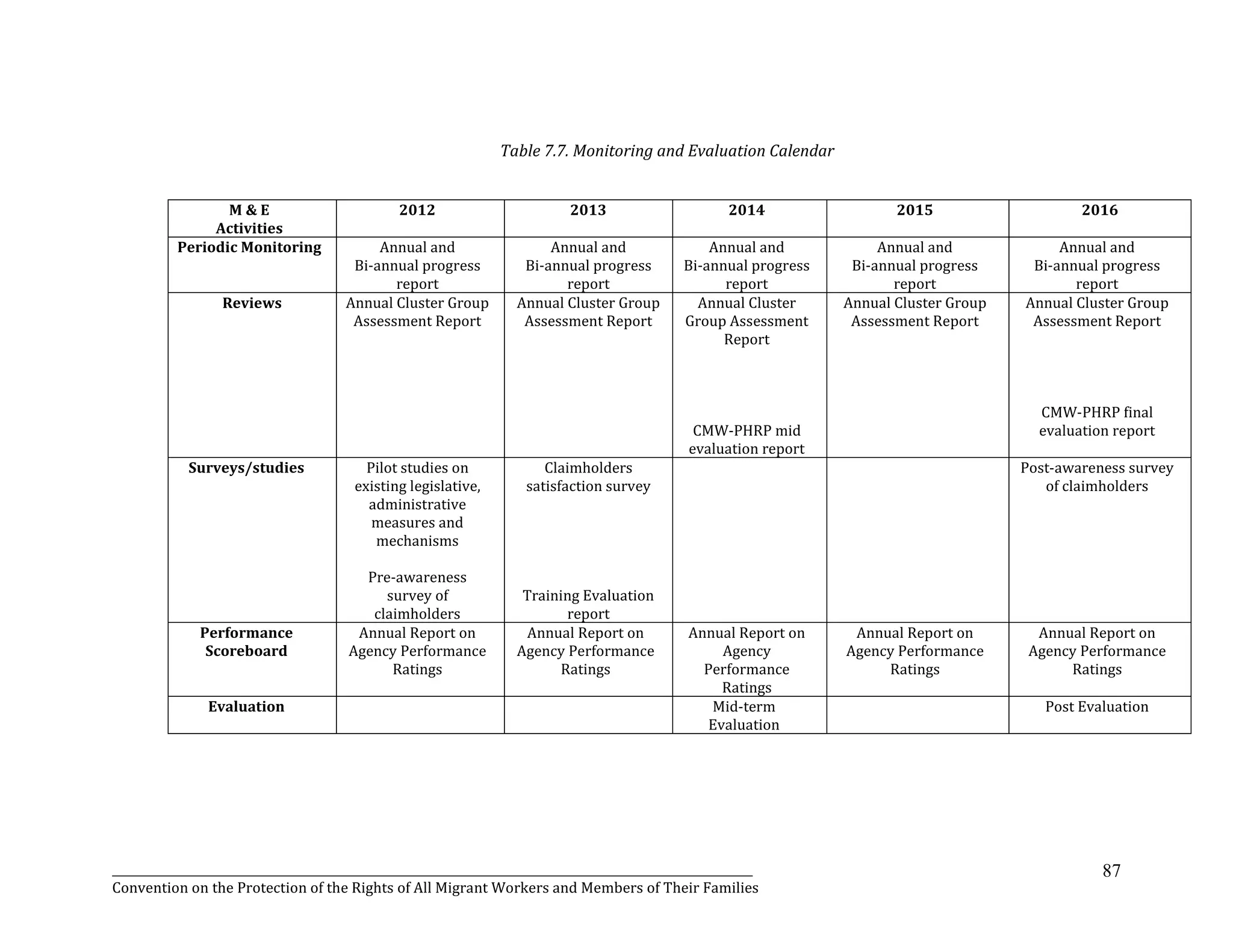The document discusses the Philippines' ratification of the Convention on the Protection of the Rights of All Migrant Workers and Members of Their Families (CMW). It summarizes key points of the CMW and outlines the Philippines' implementation efforts, including enacting national legislation protecting migrant workers, hosting international conferences on migration, and establishing bilateral agreements with destination countries. The main objectives of the Philippines' CMW implementation plan are also listed, focusing on information dissemination, advocacy for bilateral agreements, provision of assistance and remedies, social security, and protection measures.
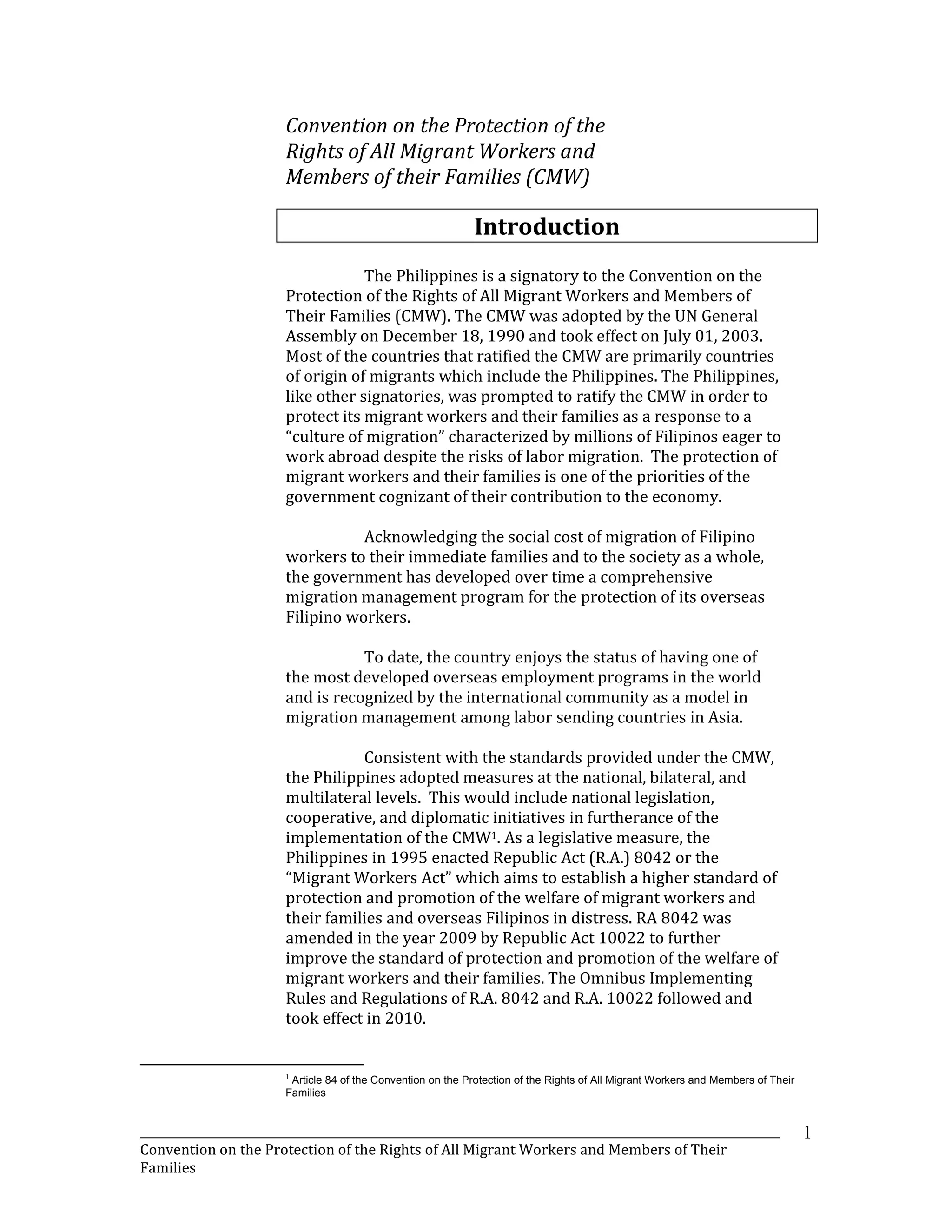
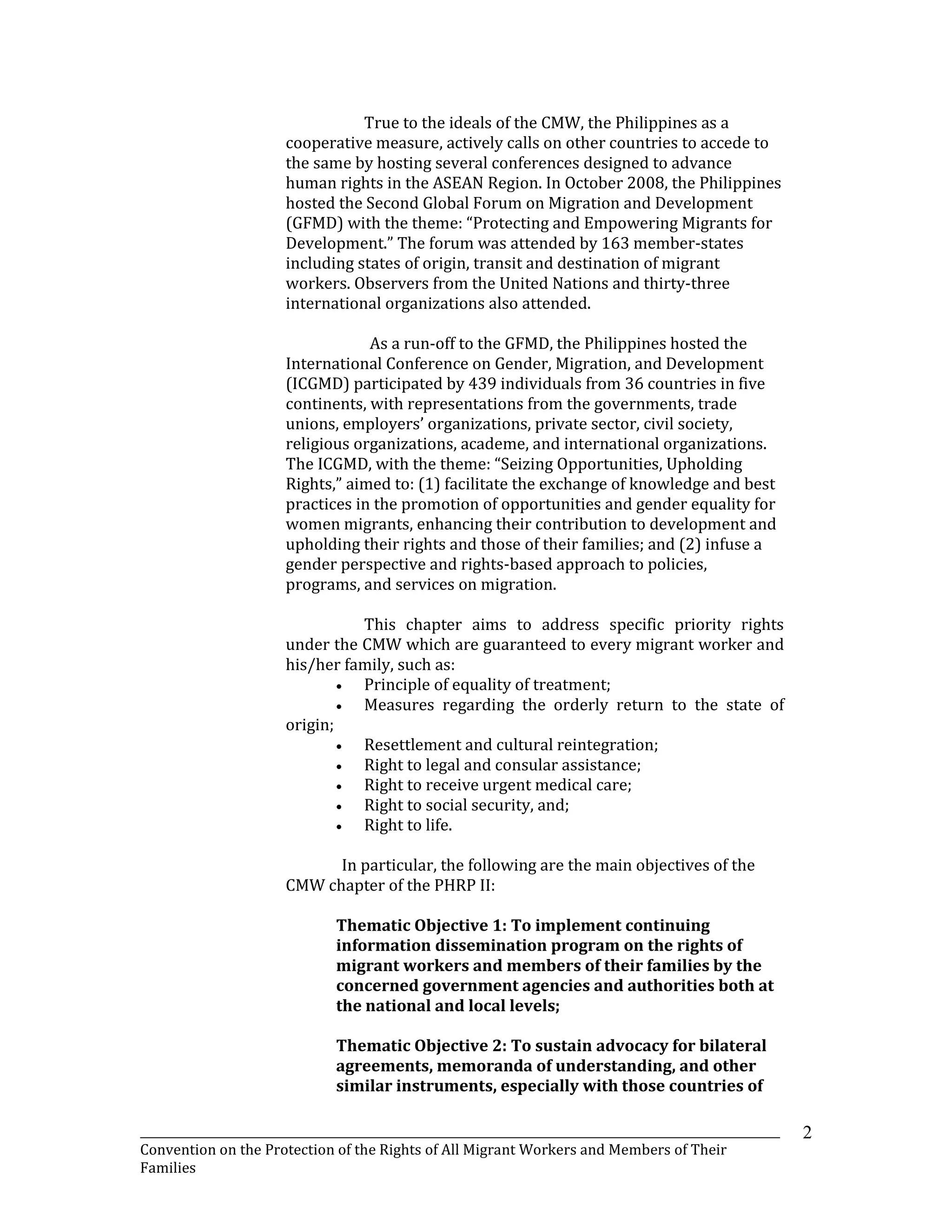

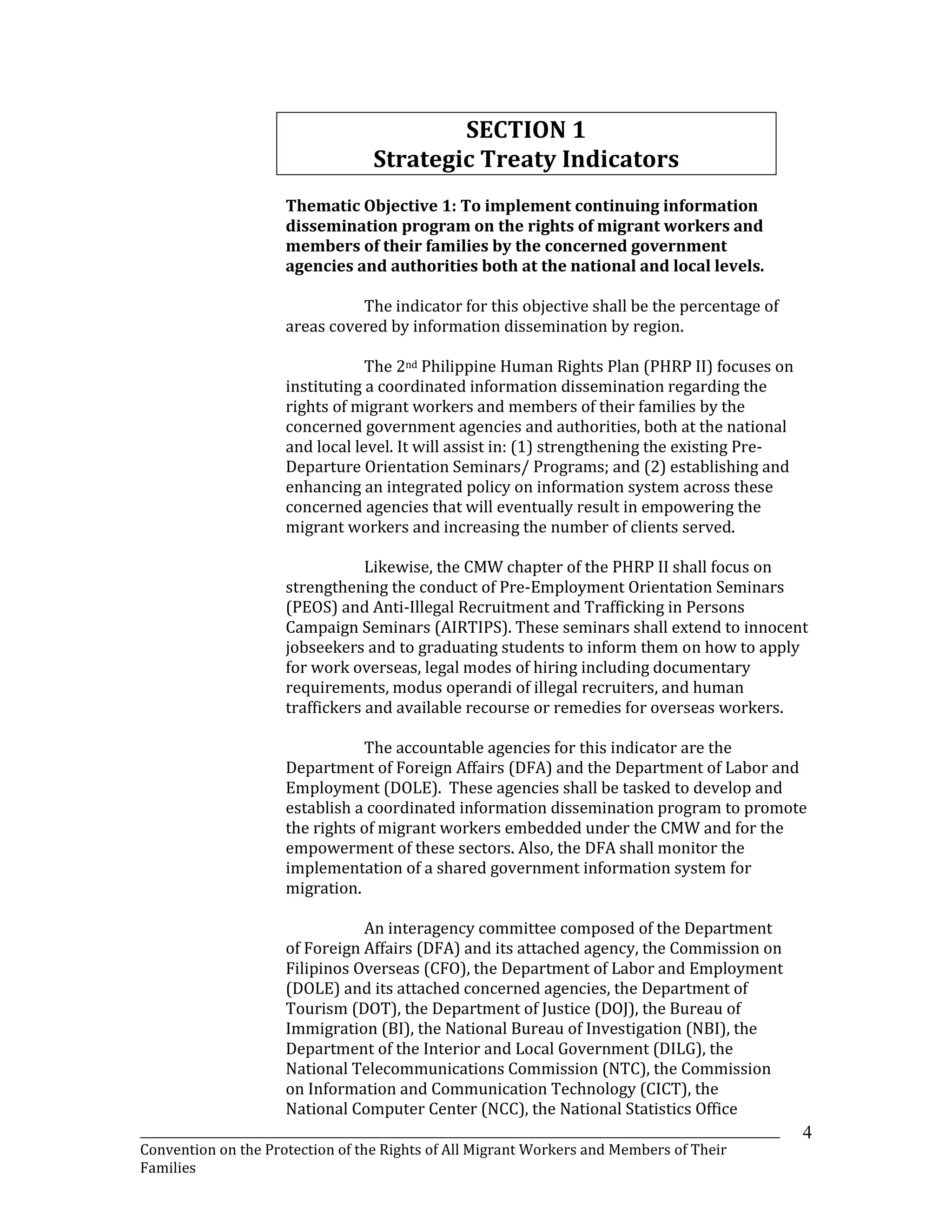
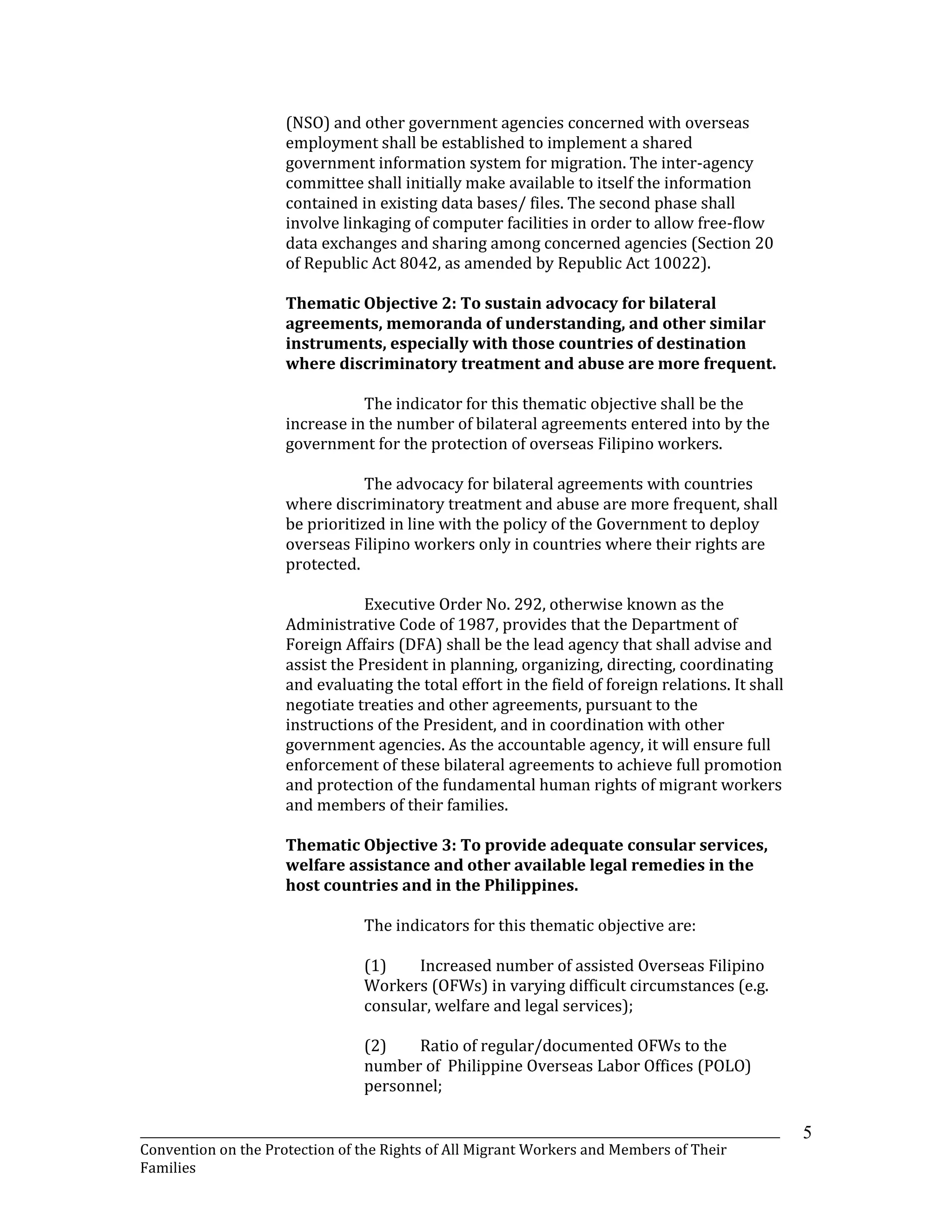
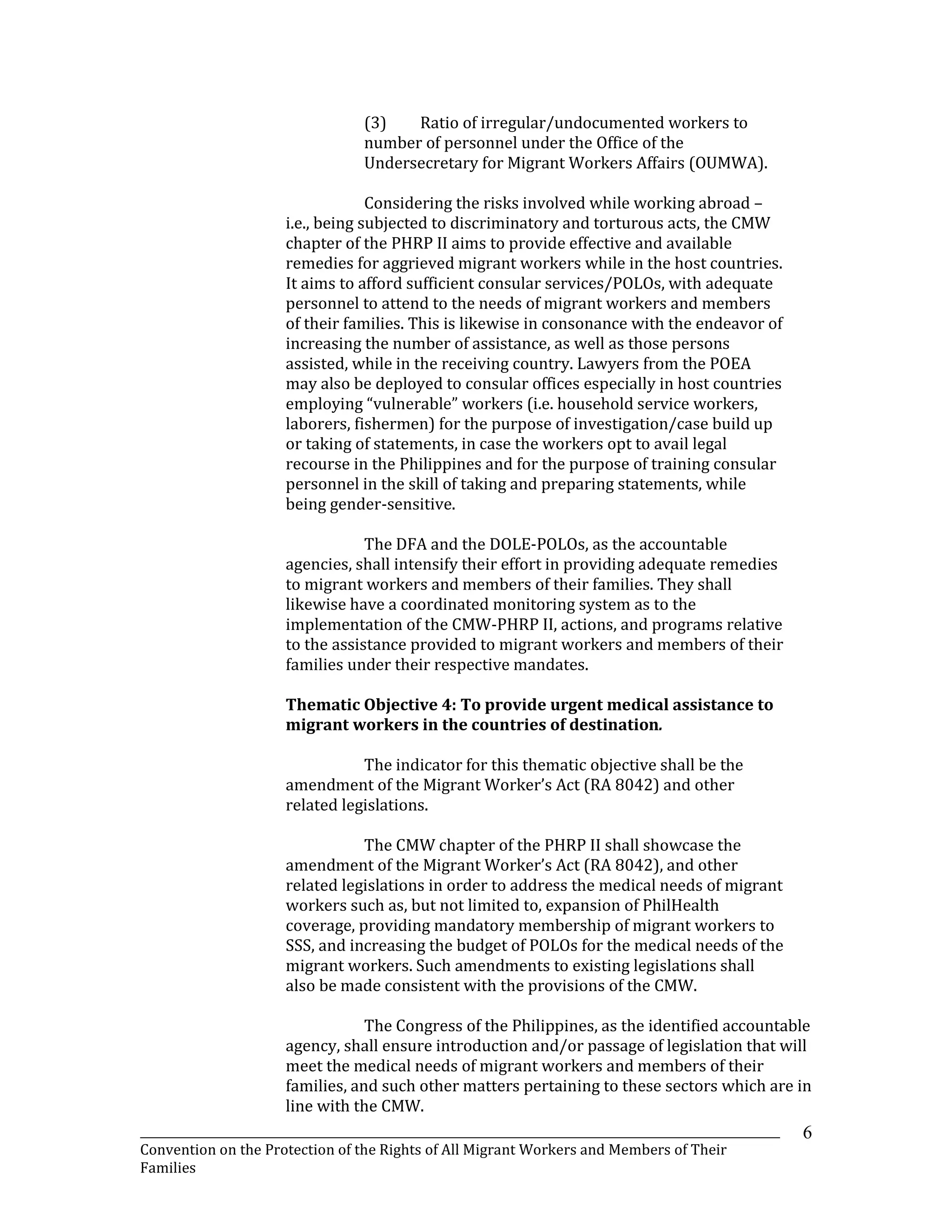
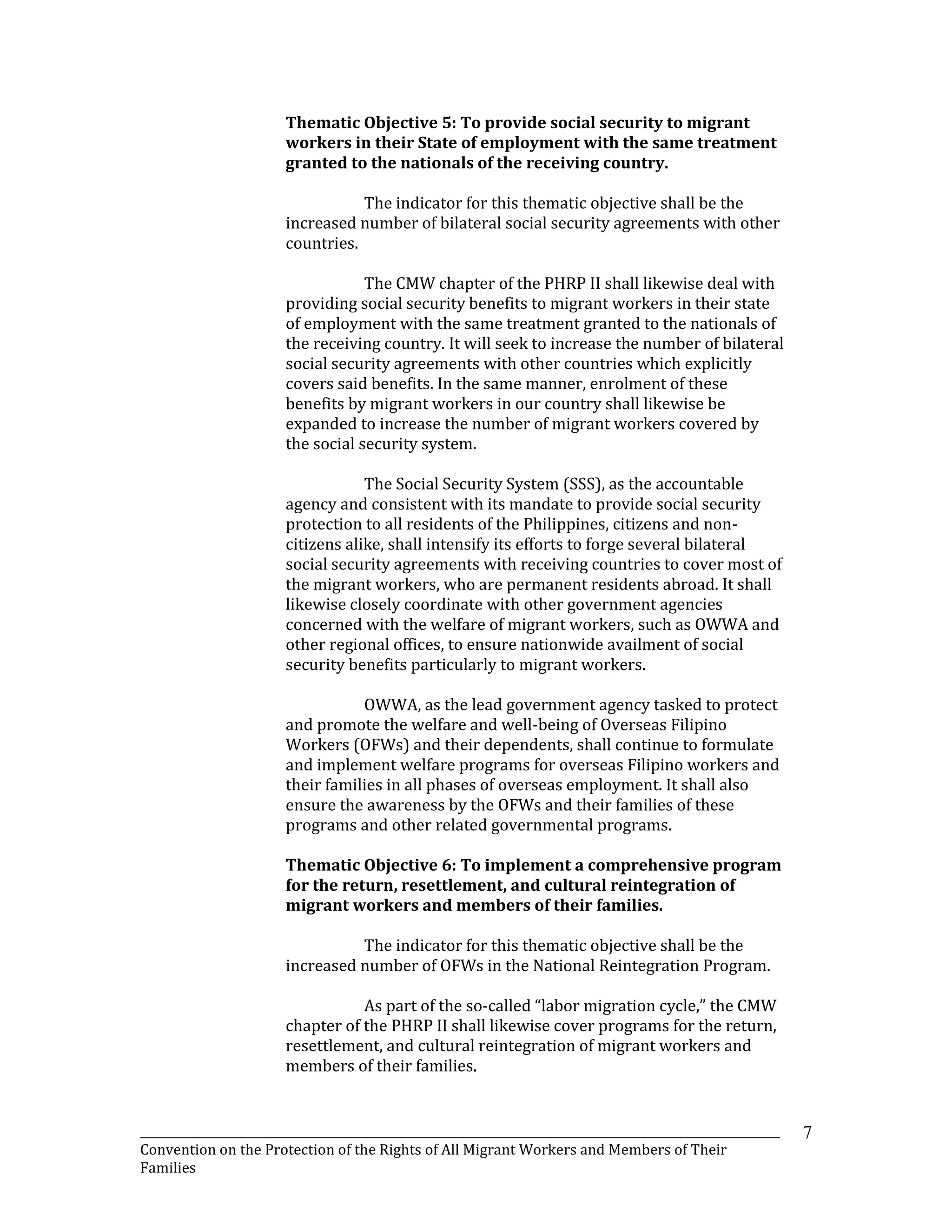
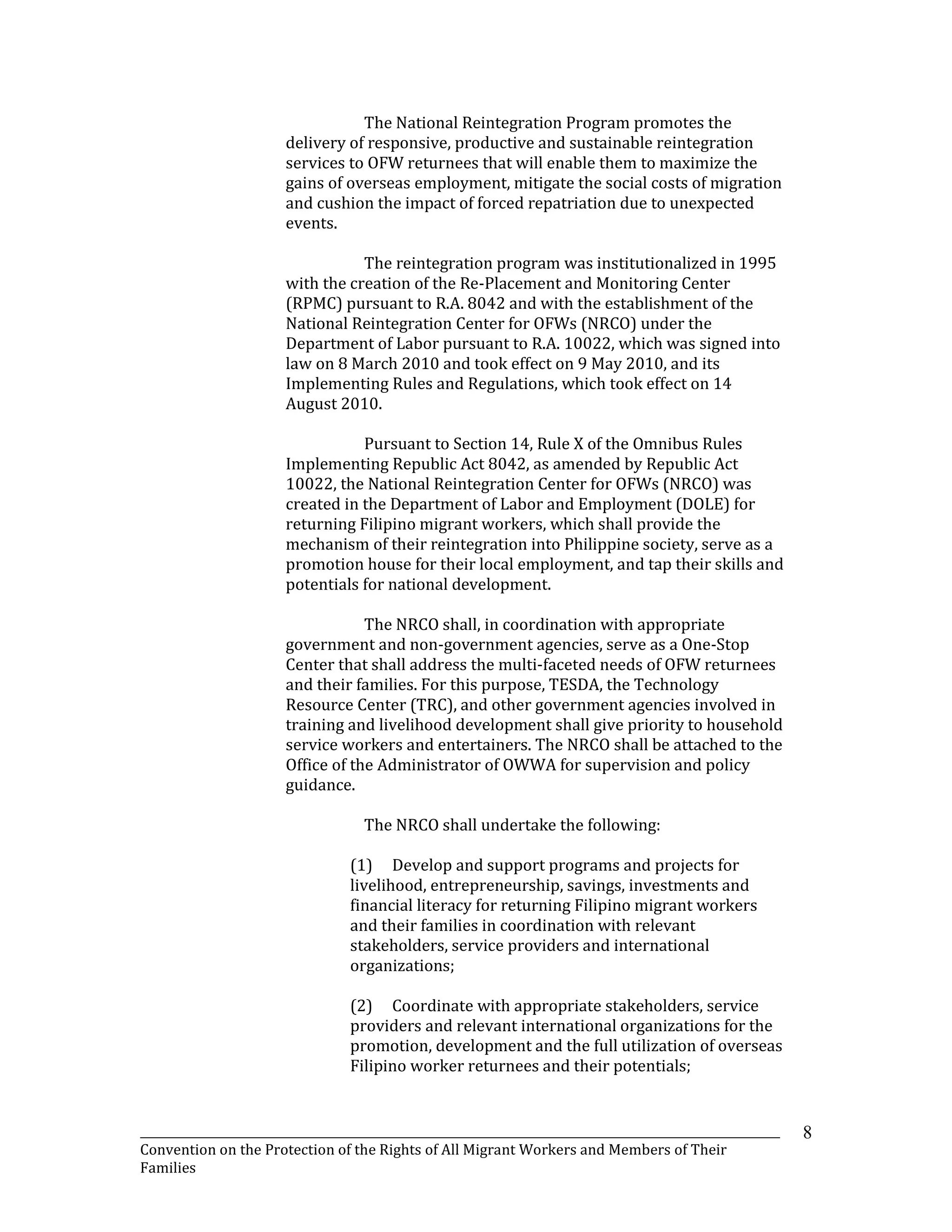
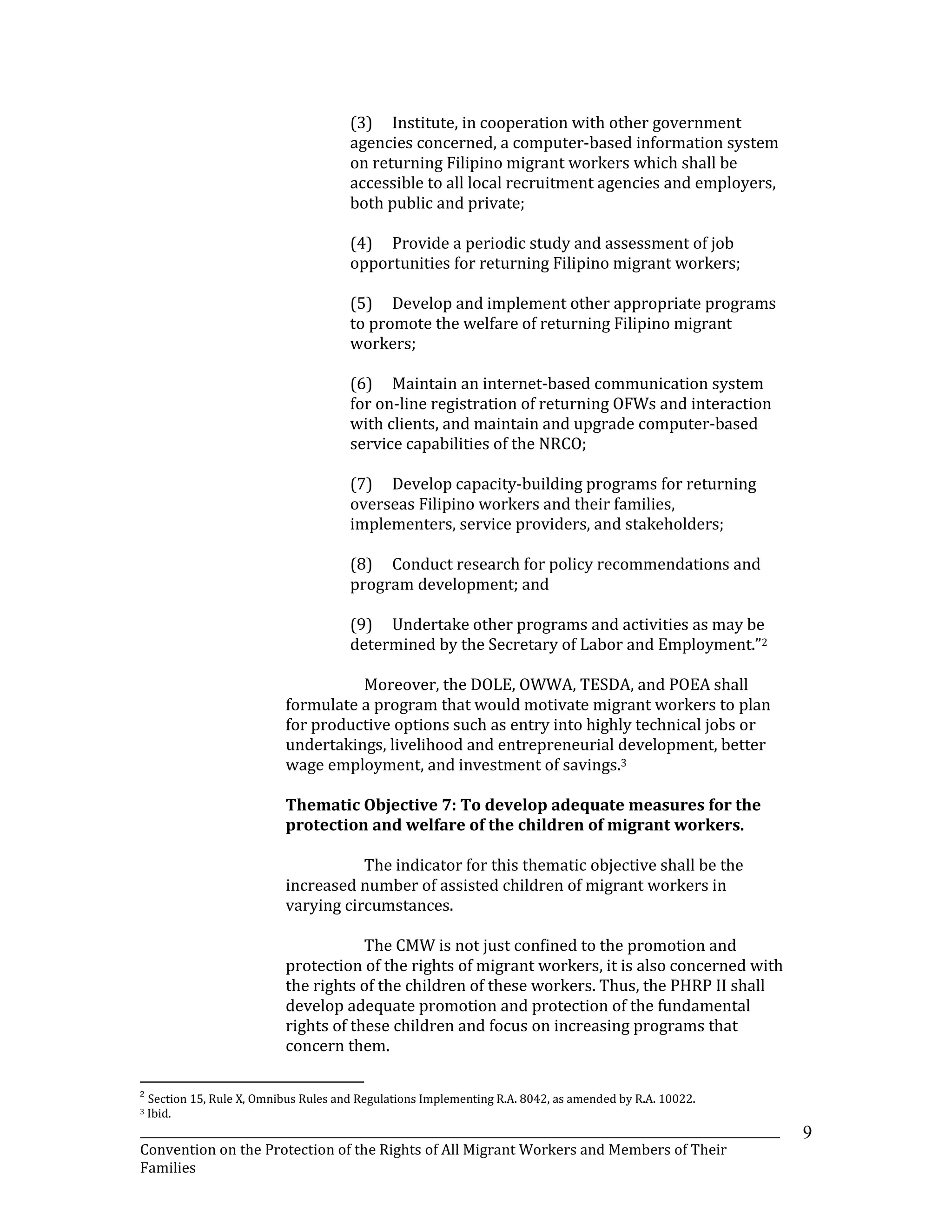

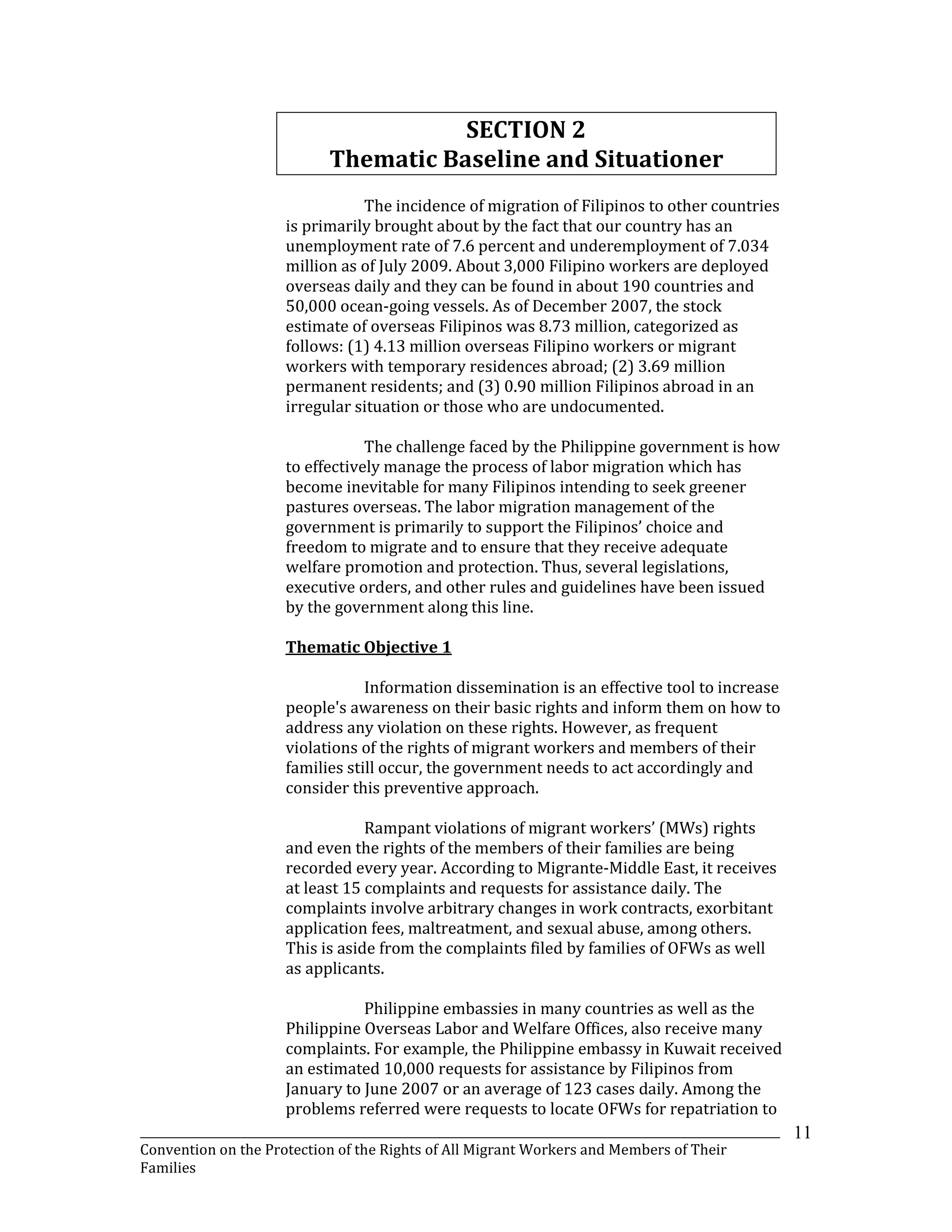
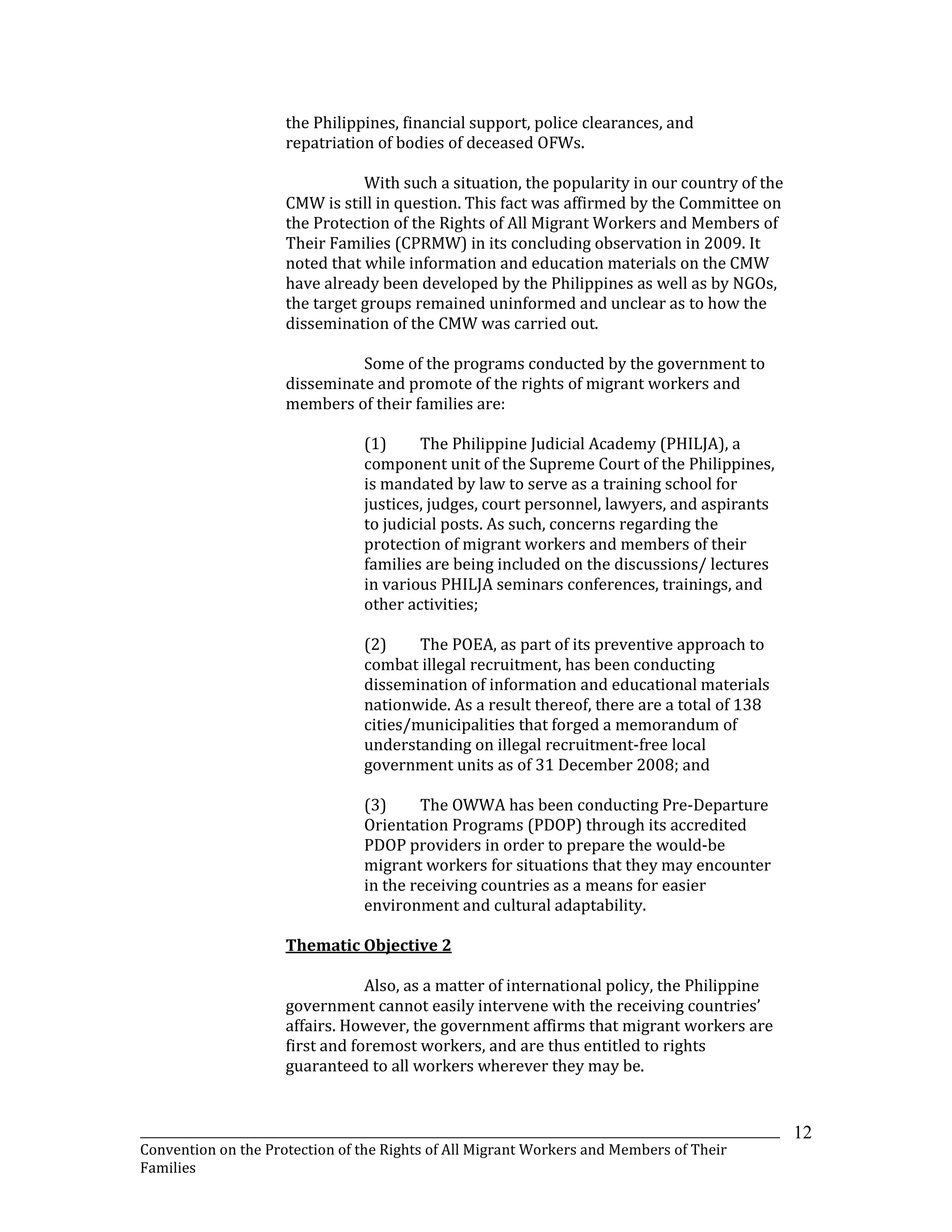


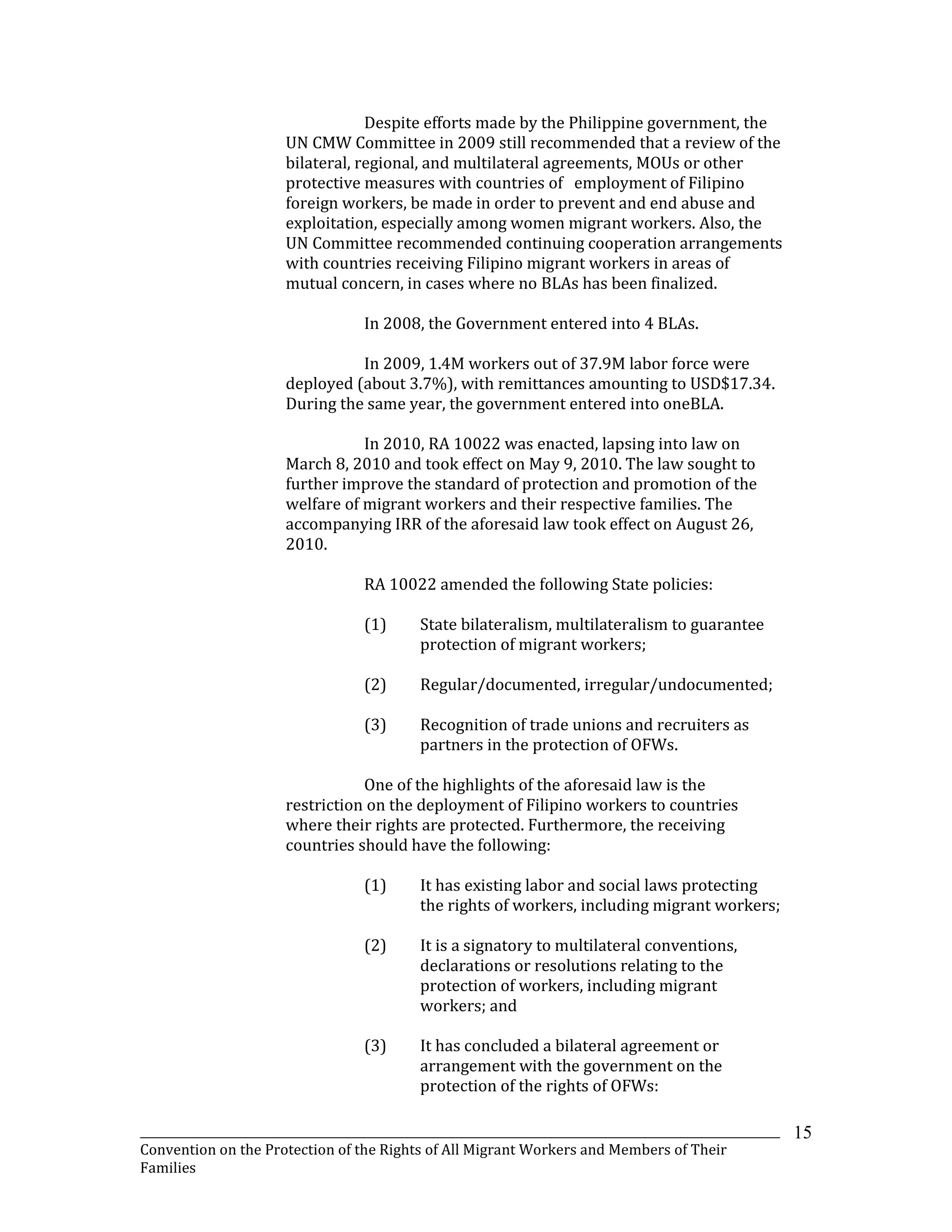
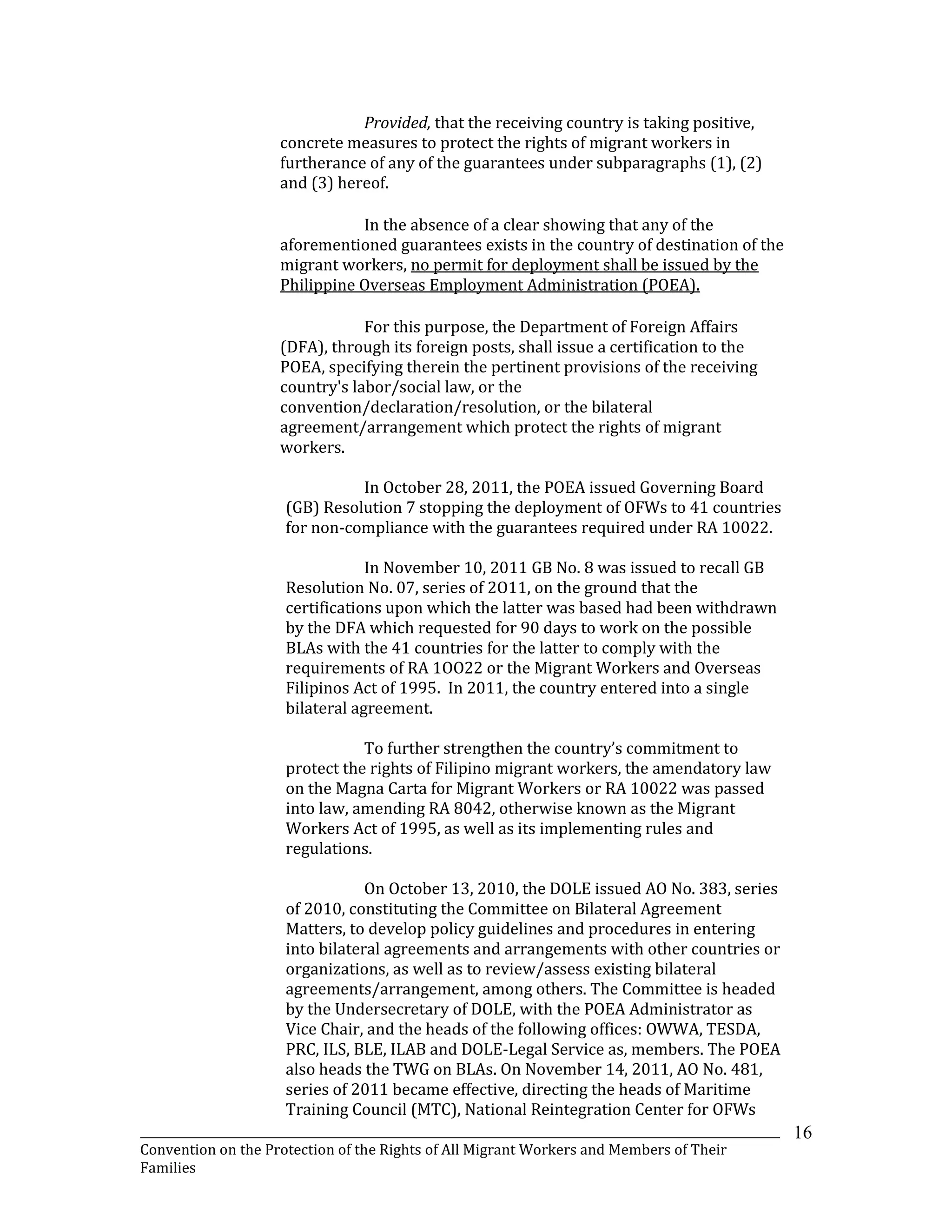
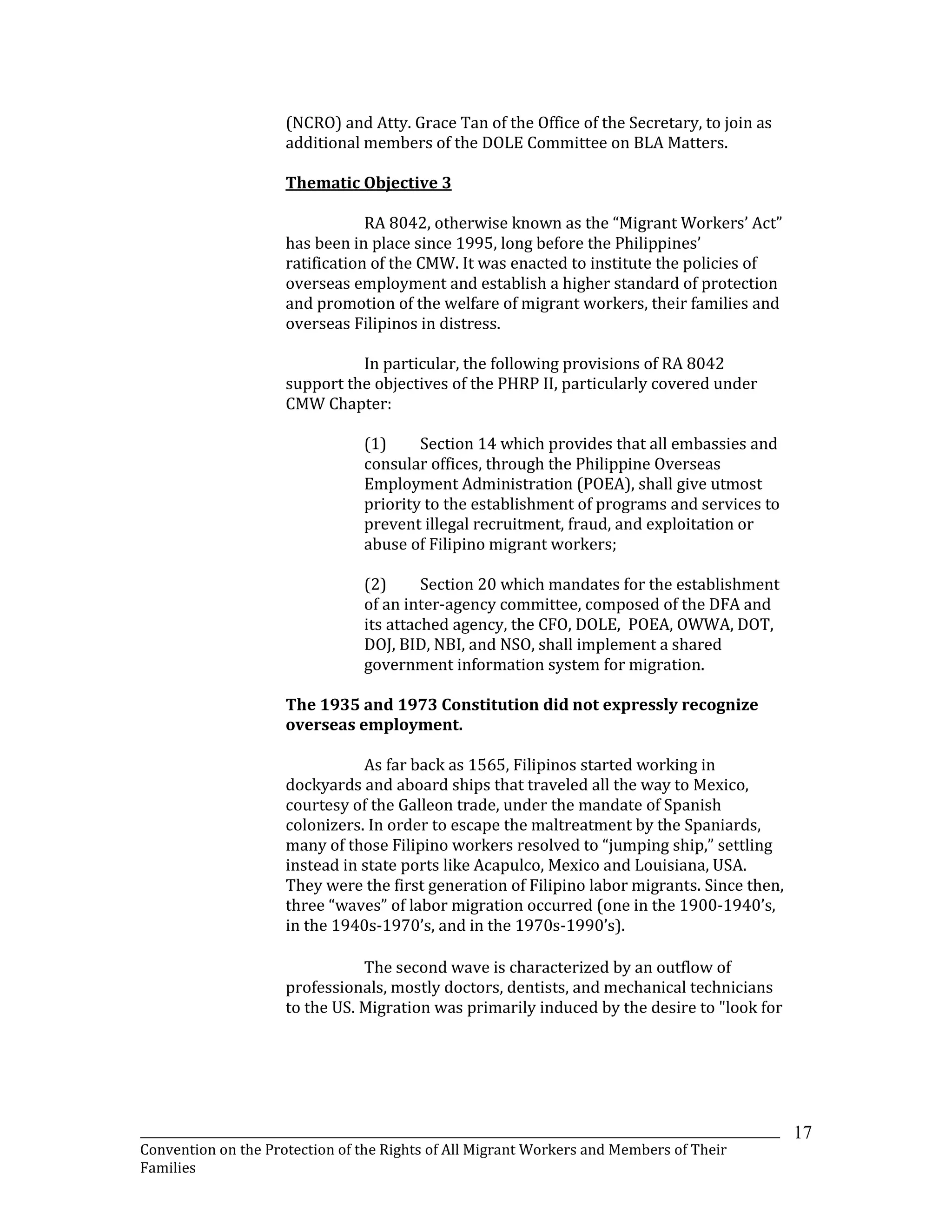
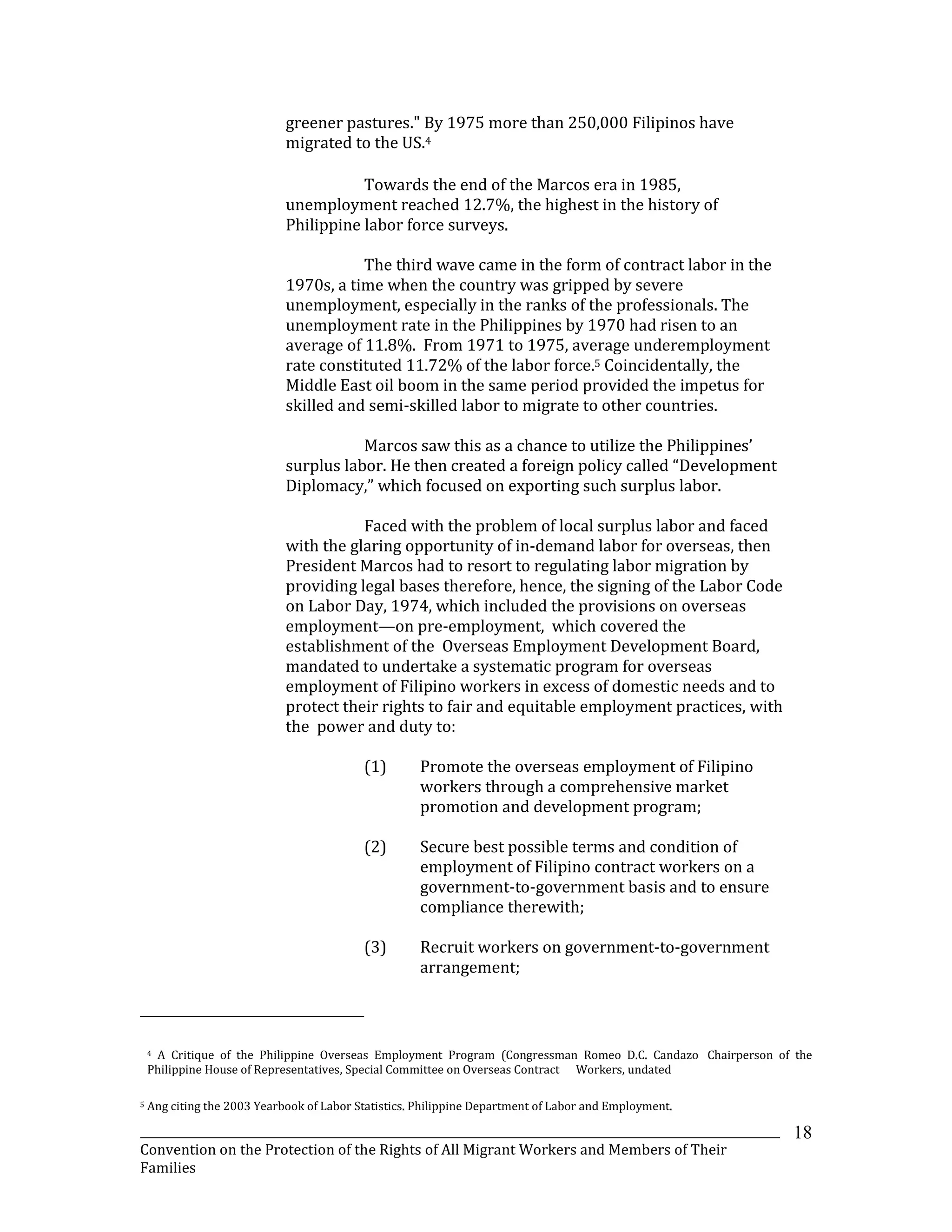
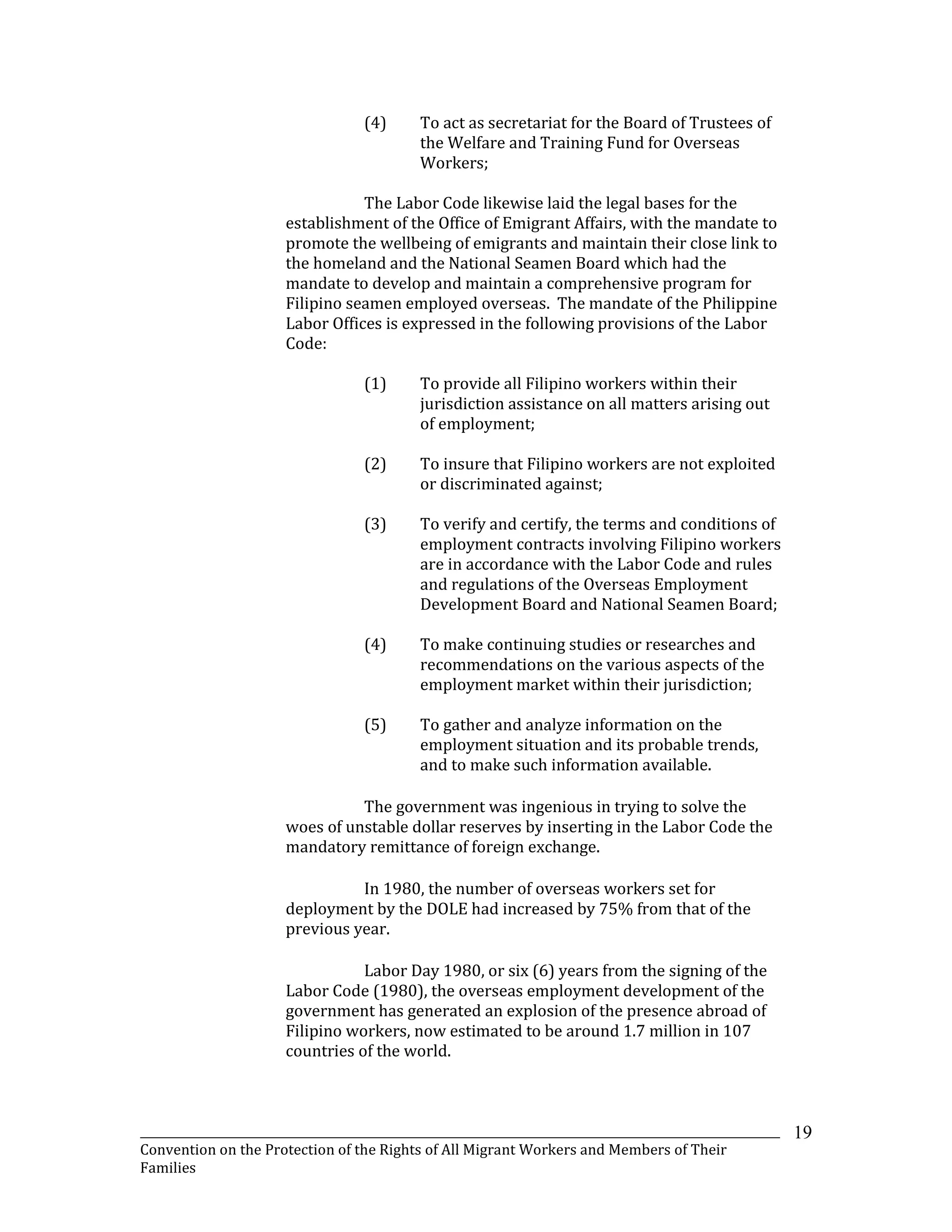
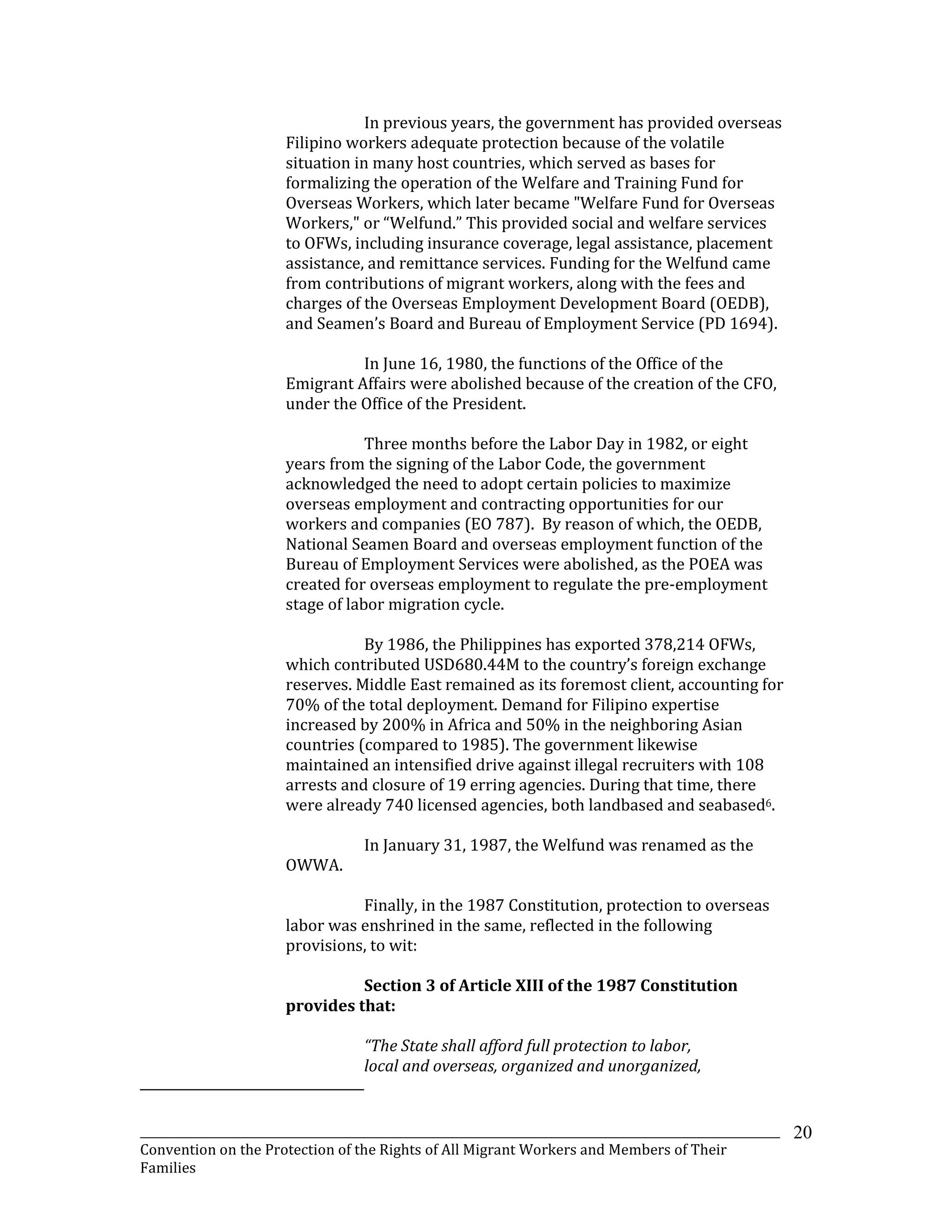
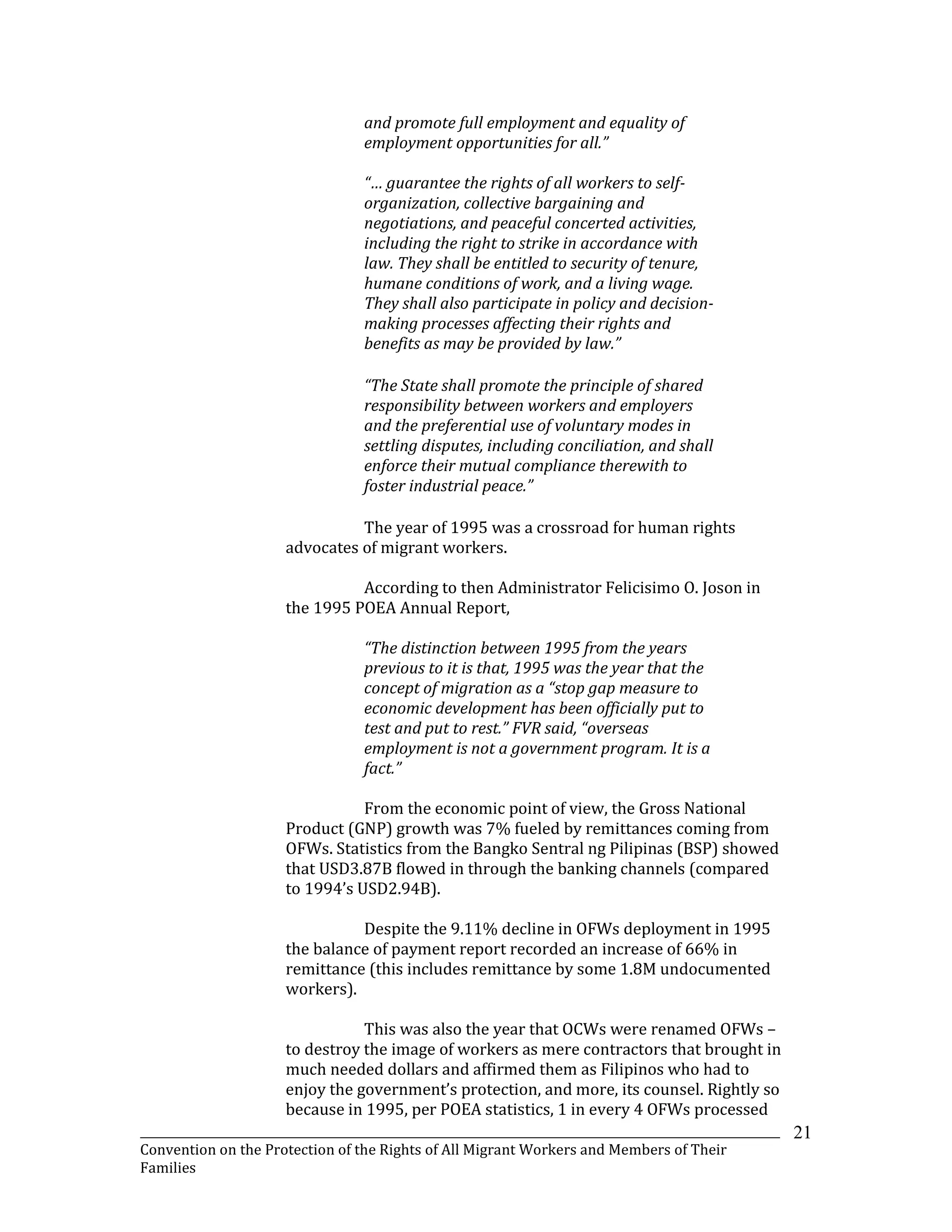
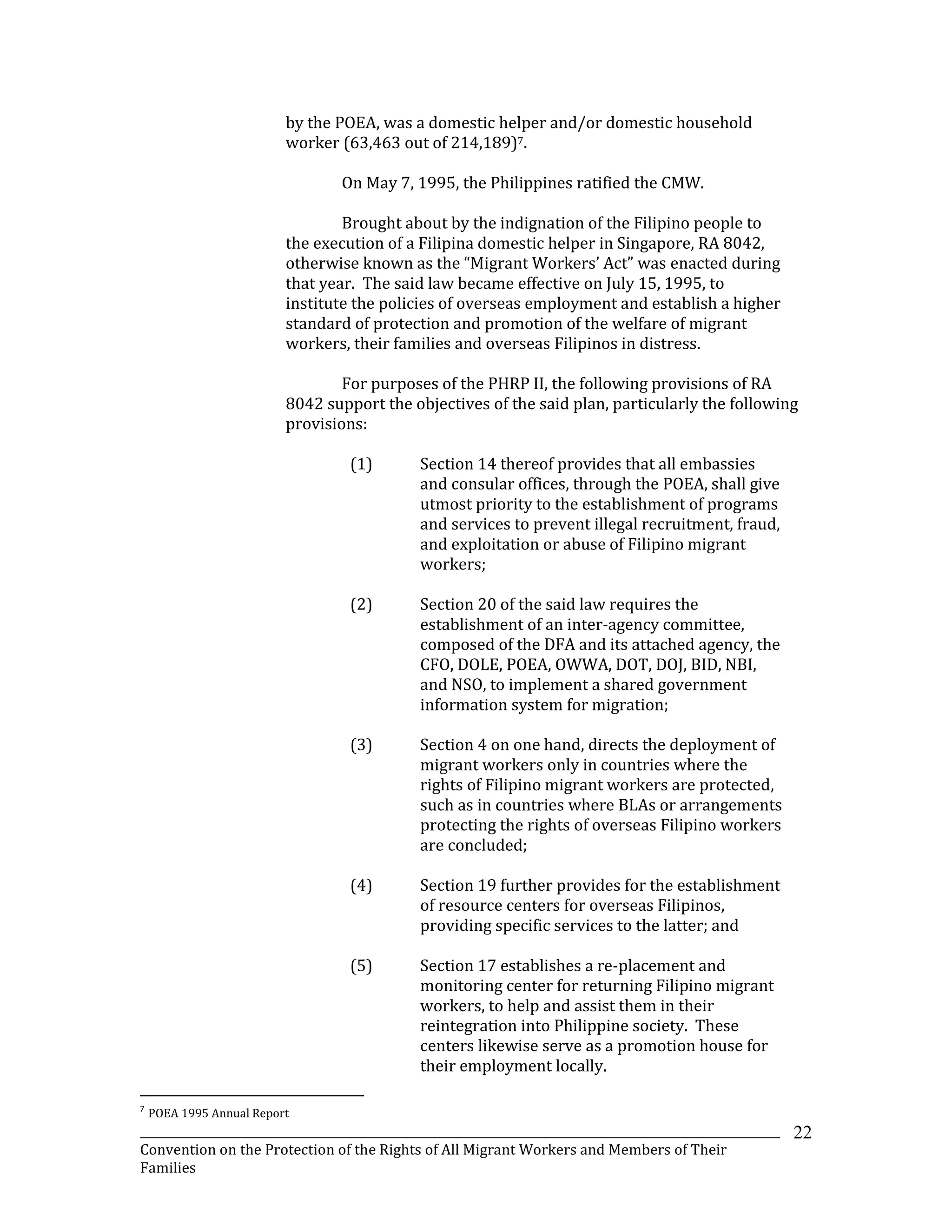

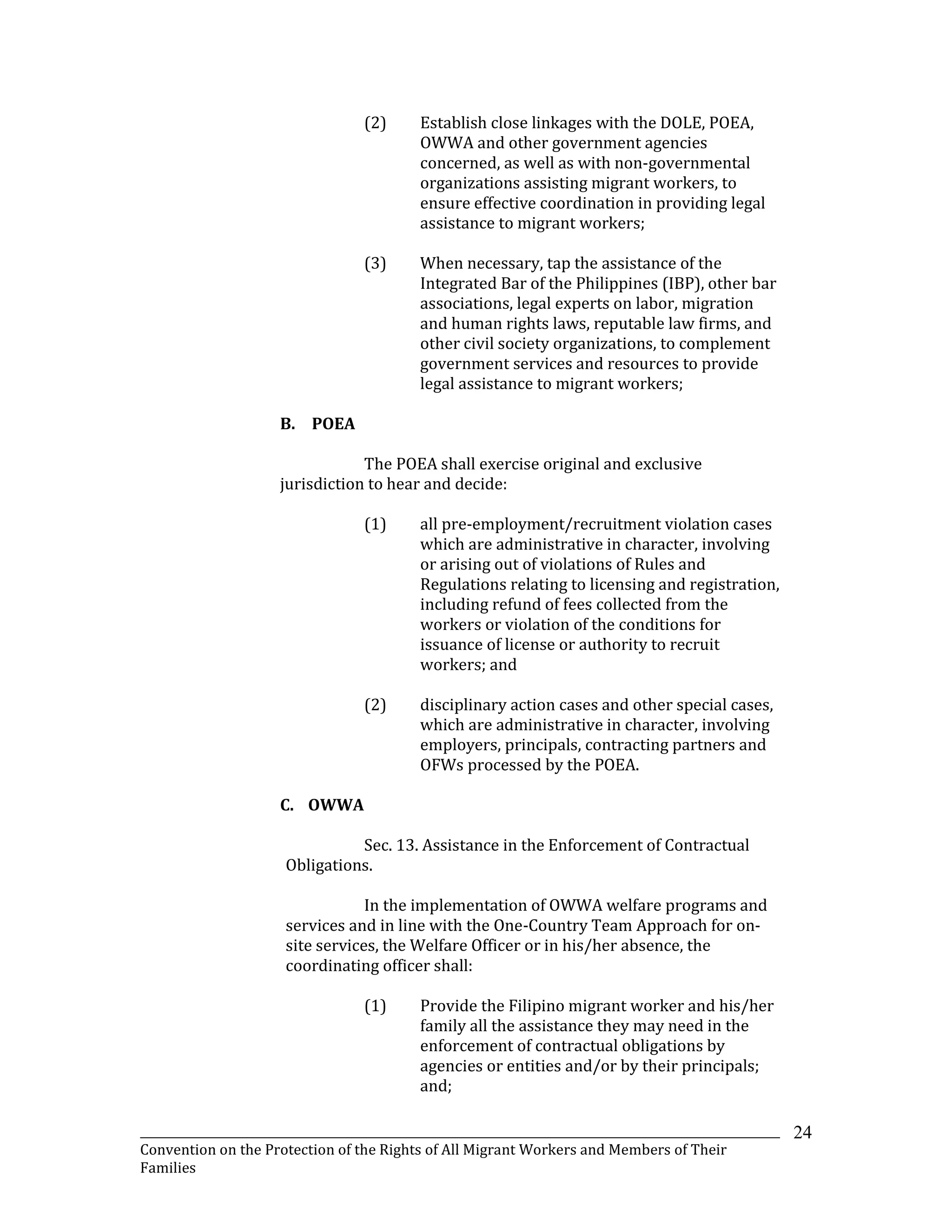

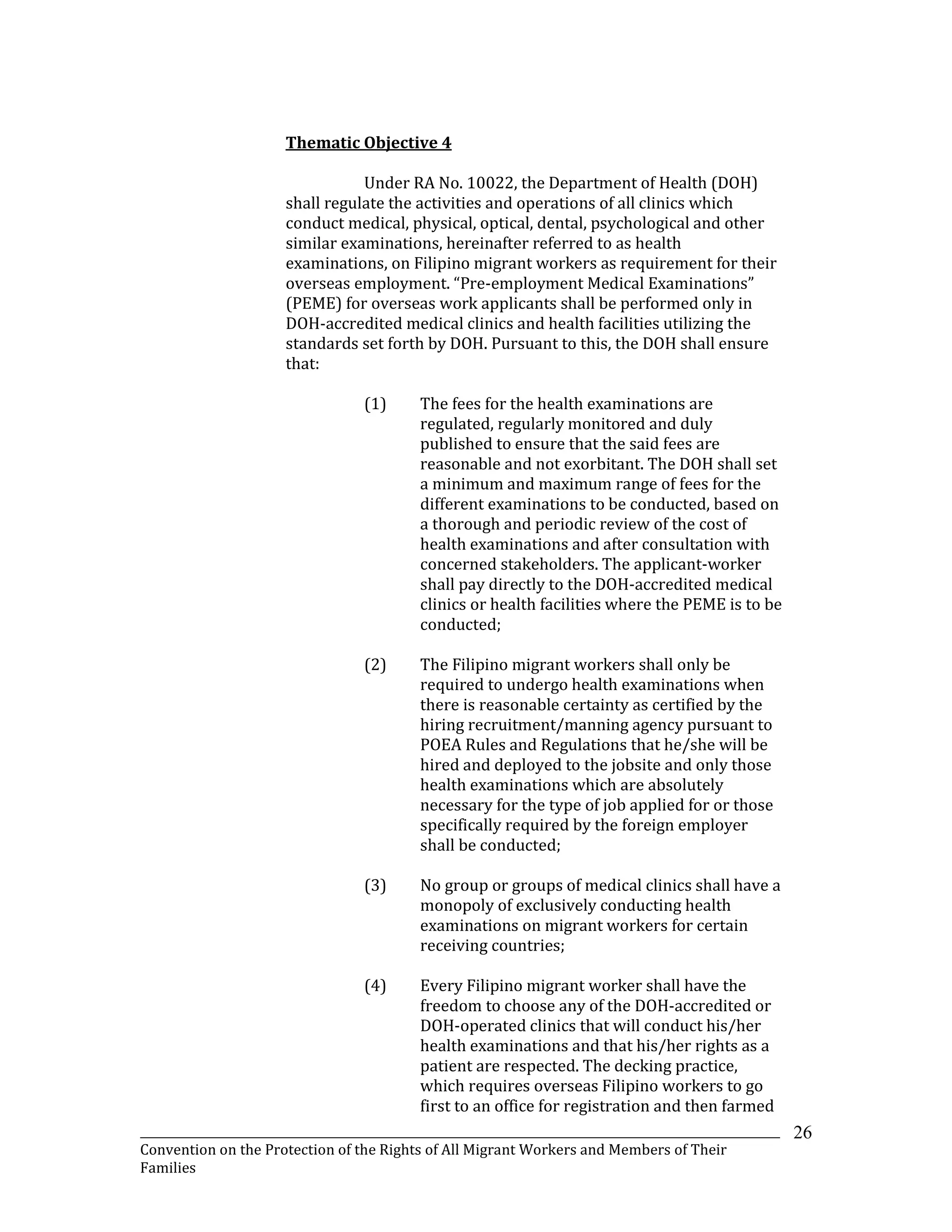
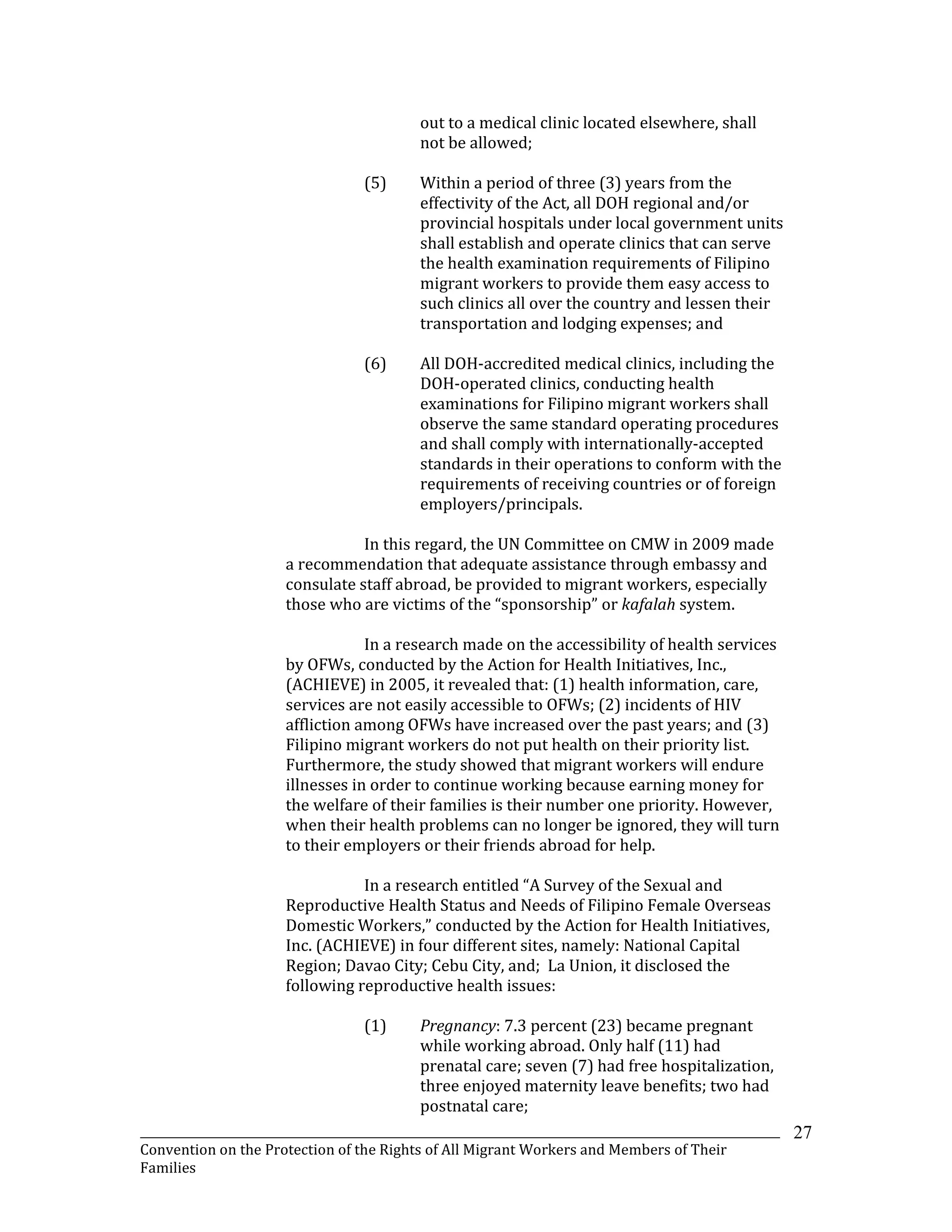
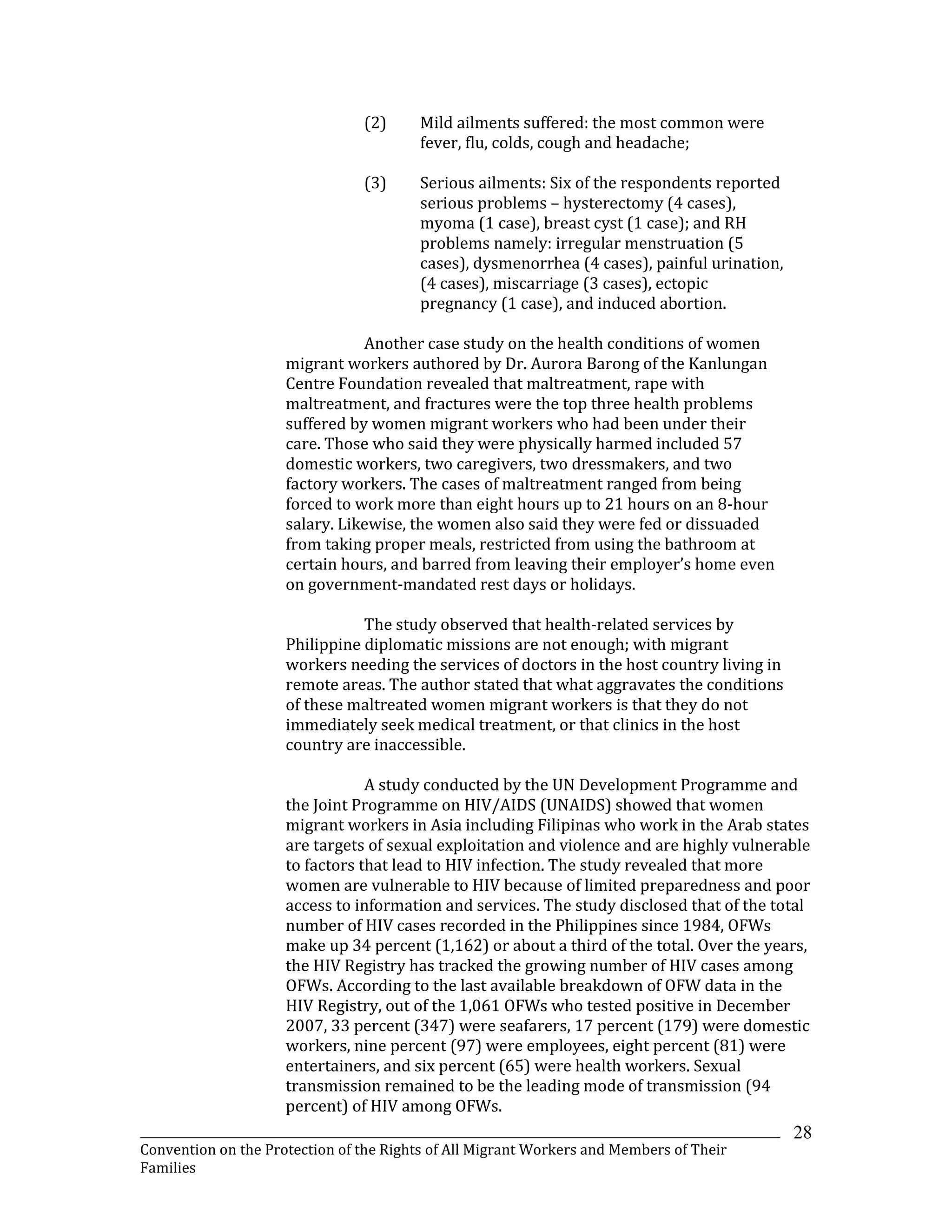

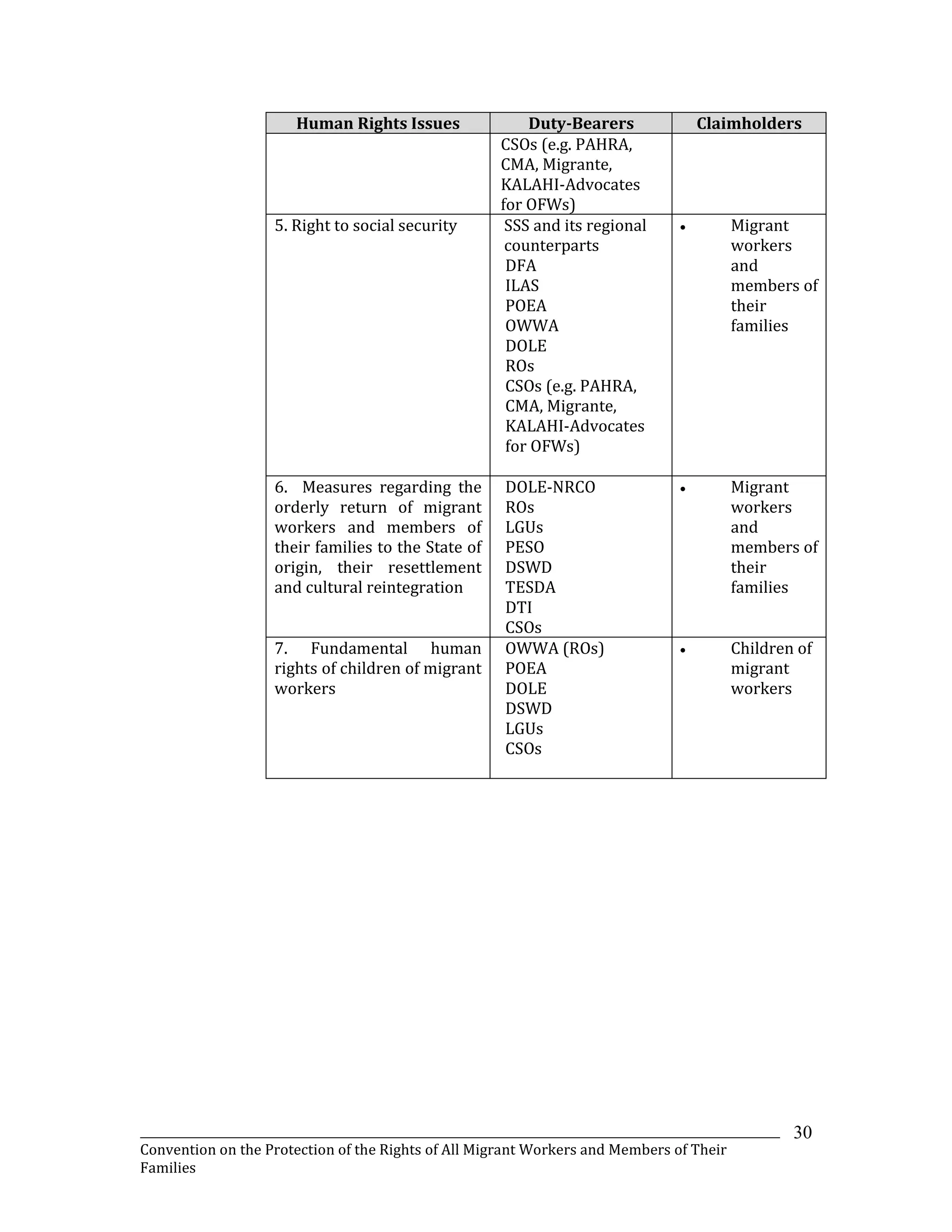
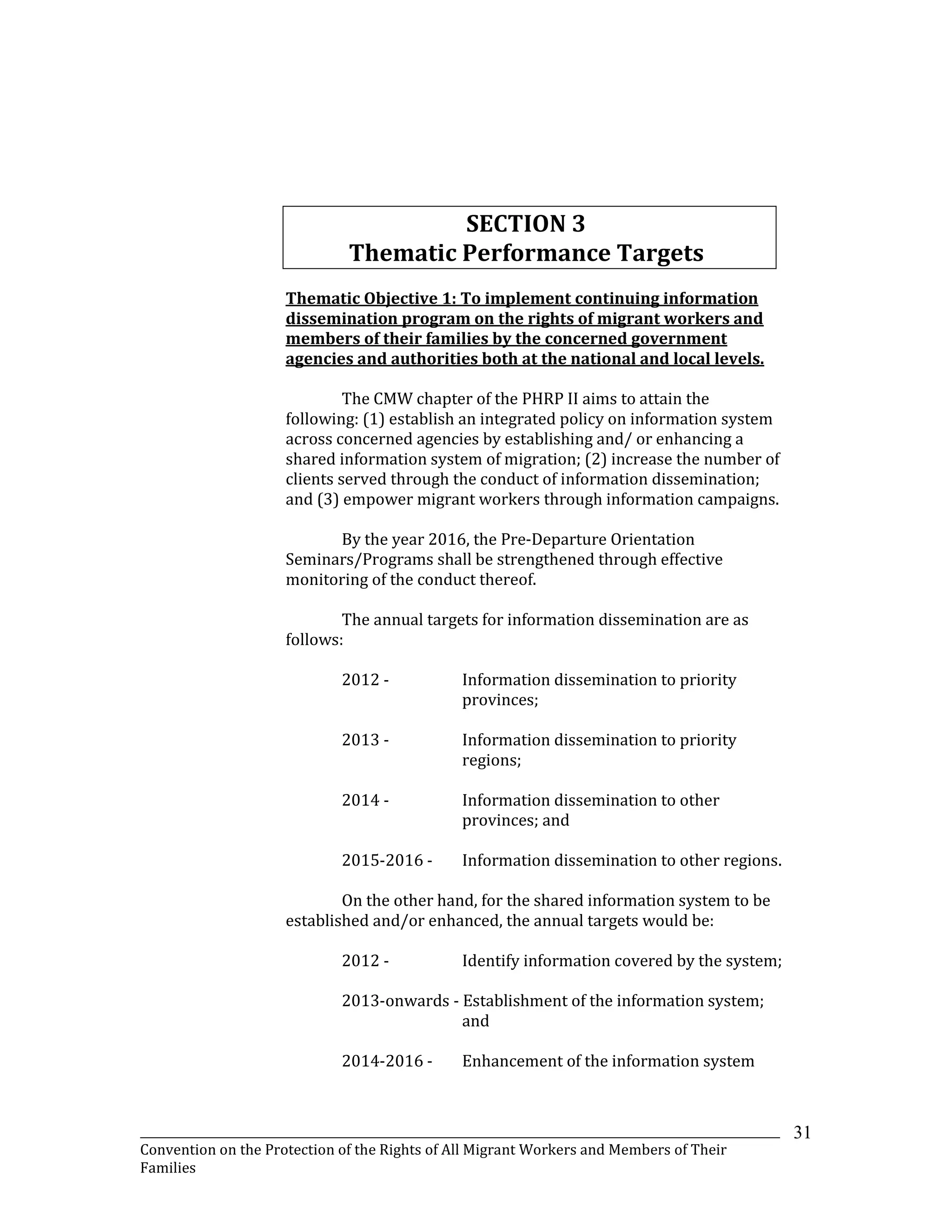
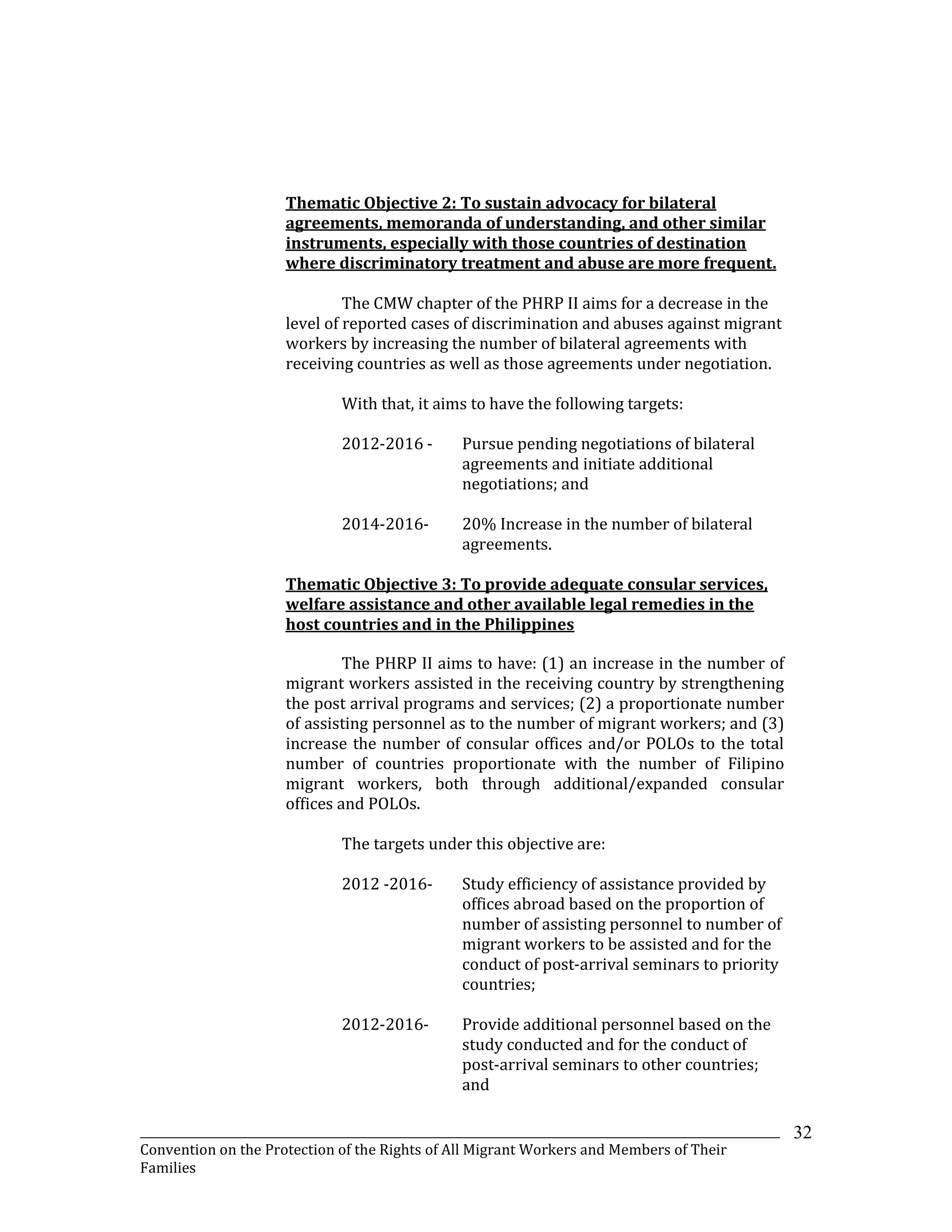
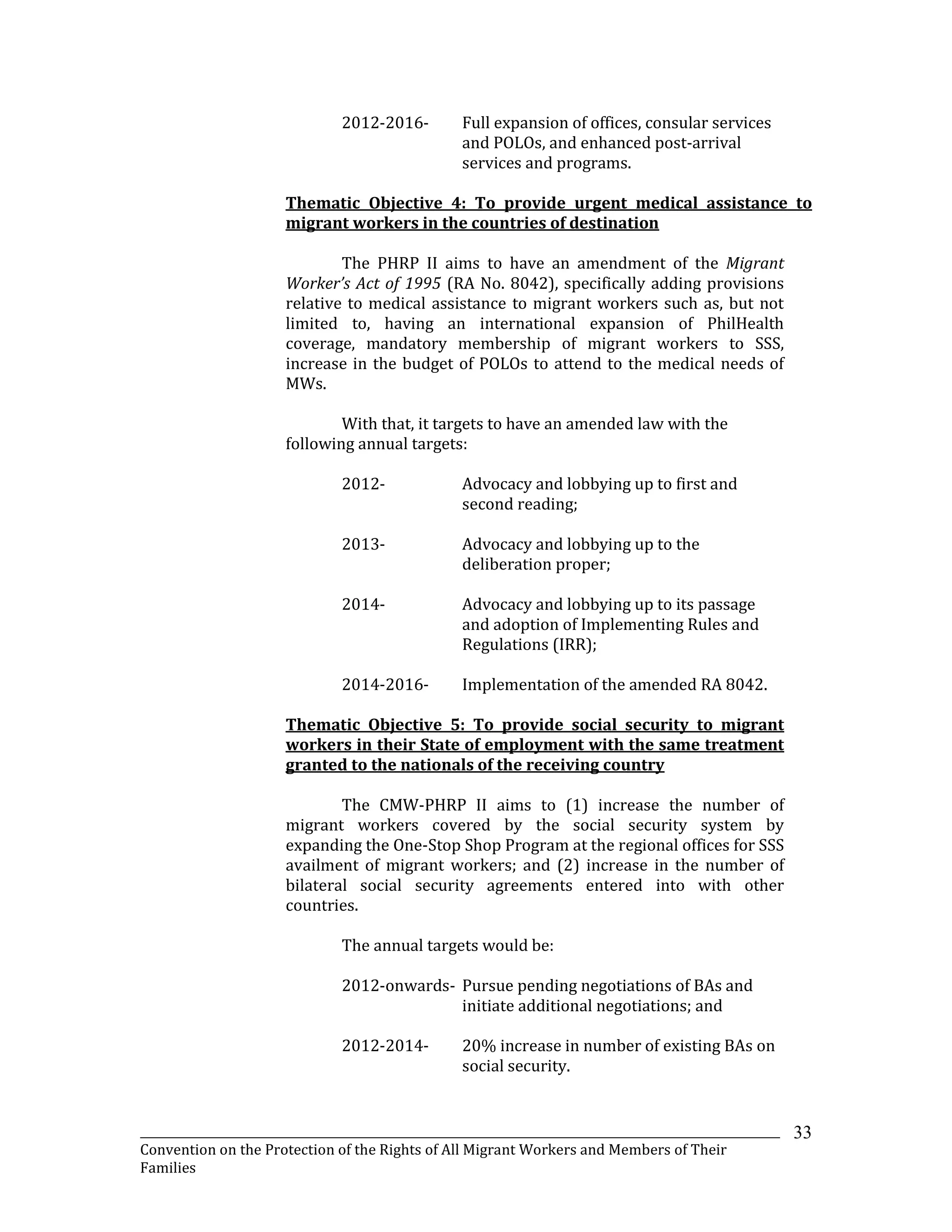
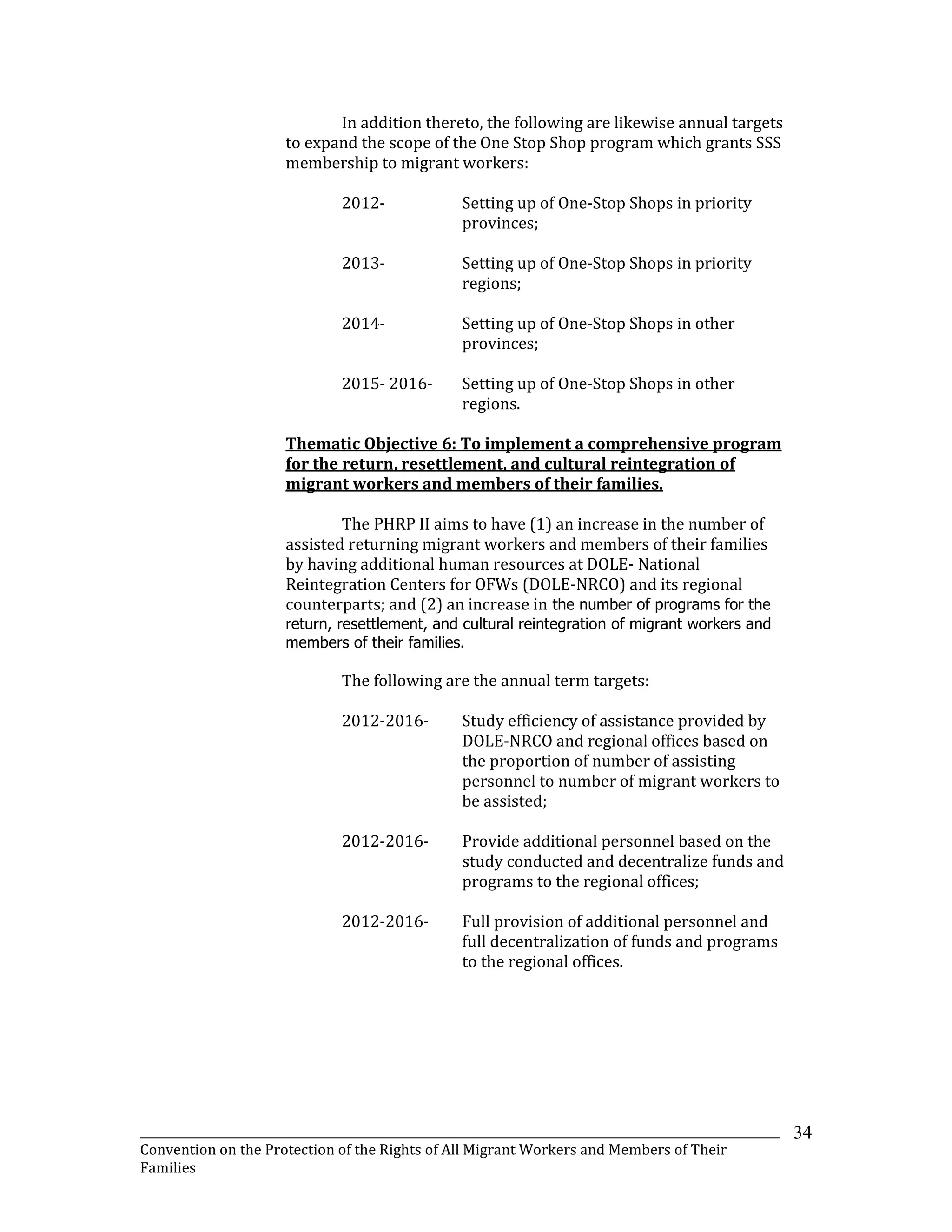
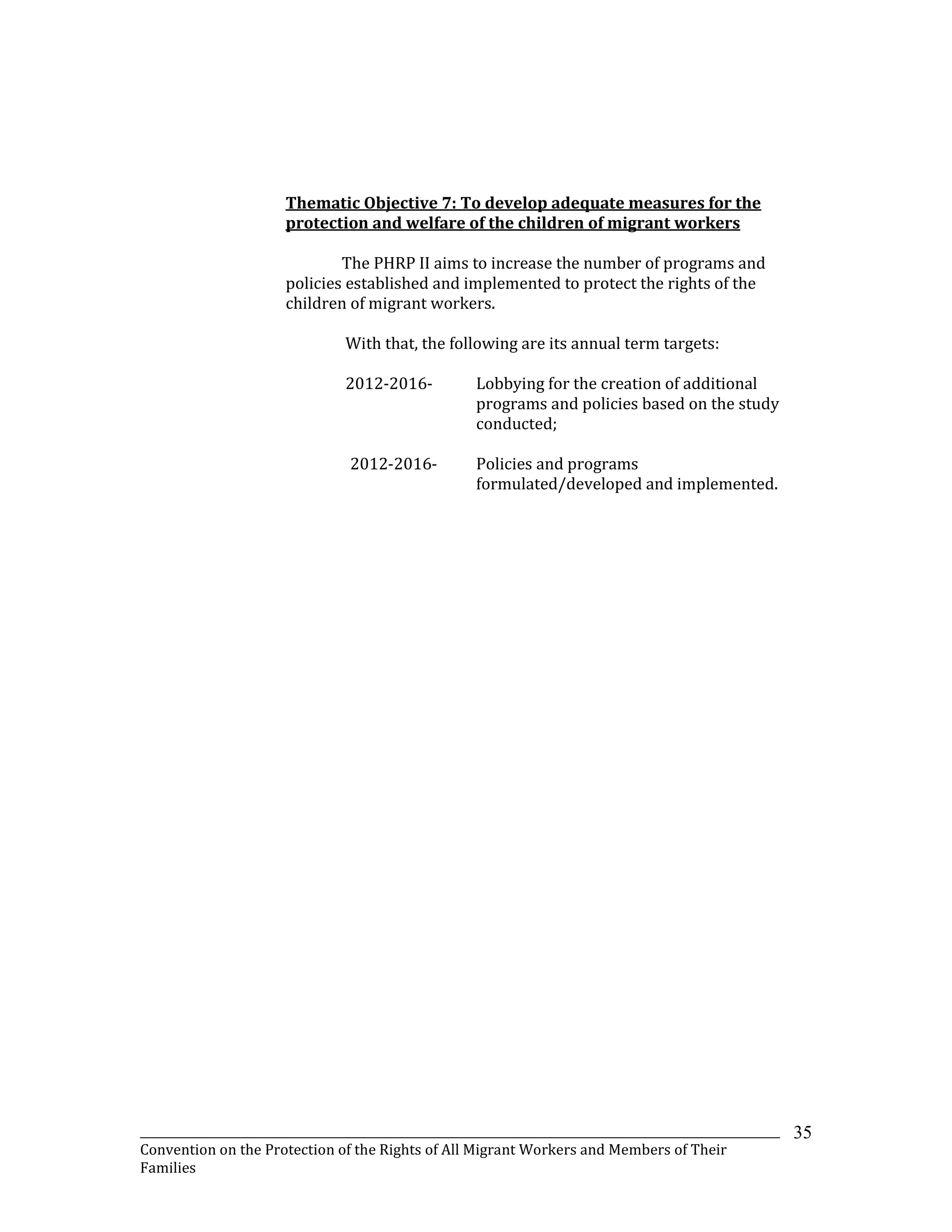
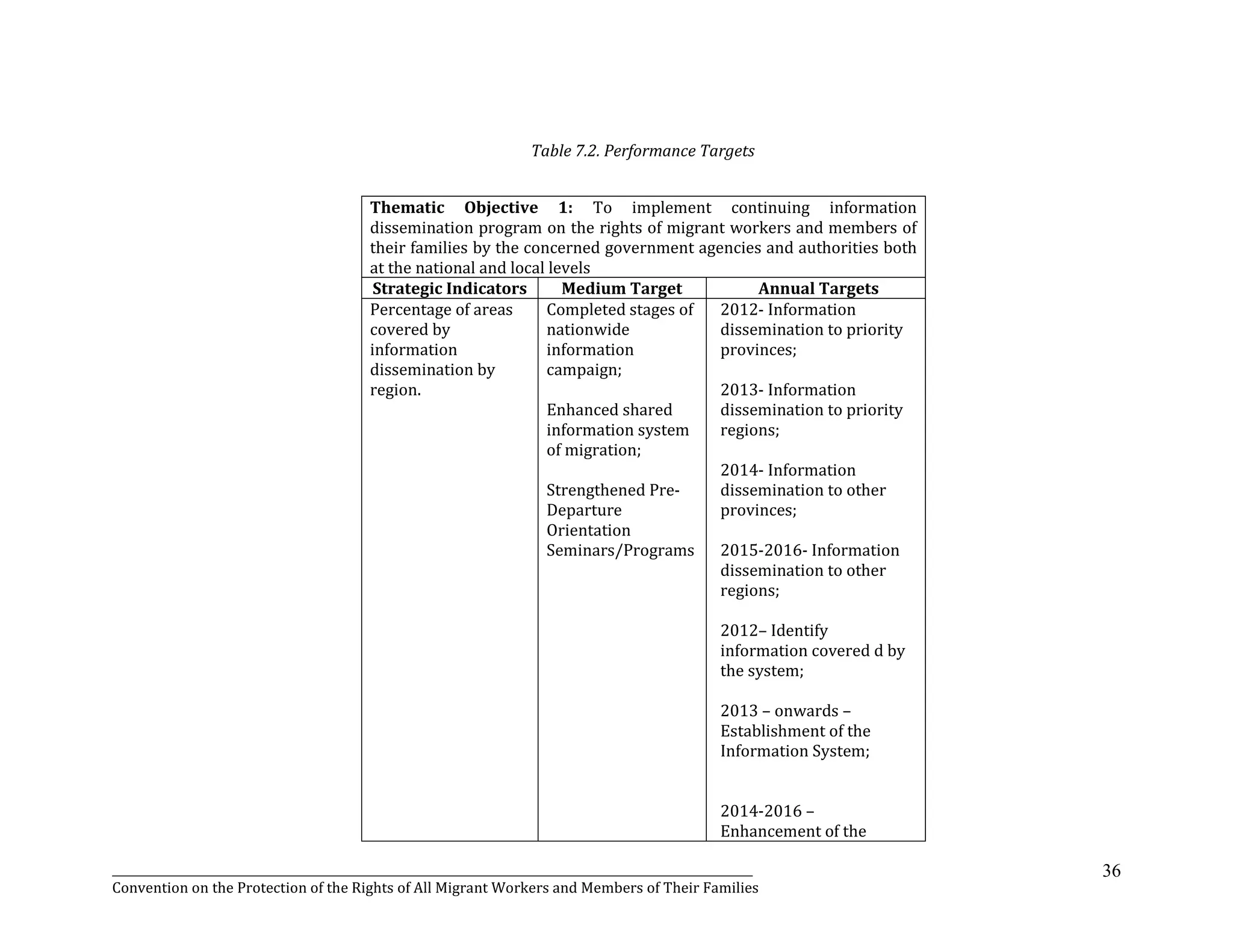
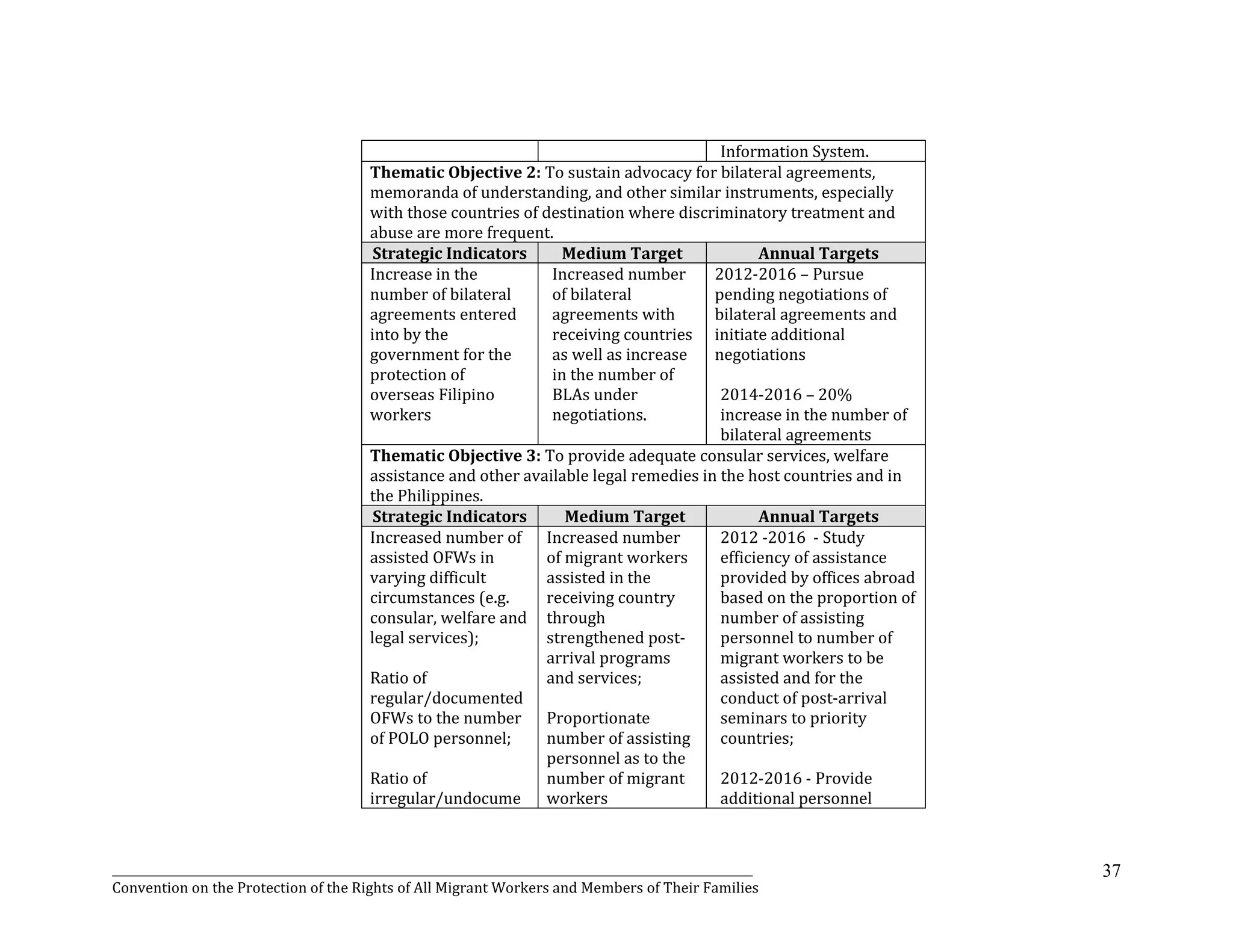
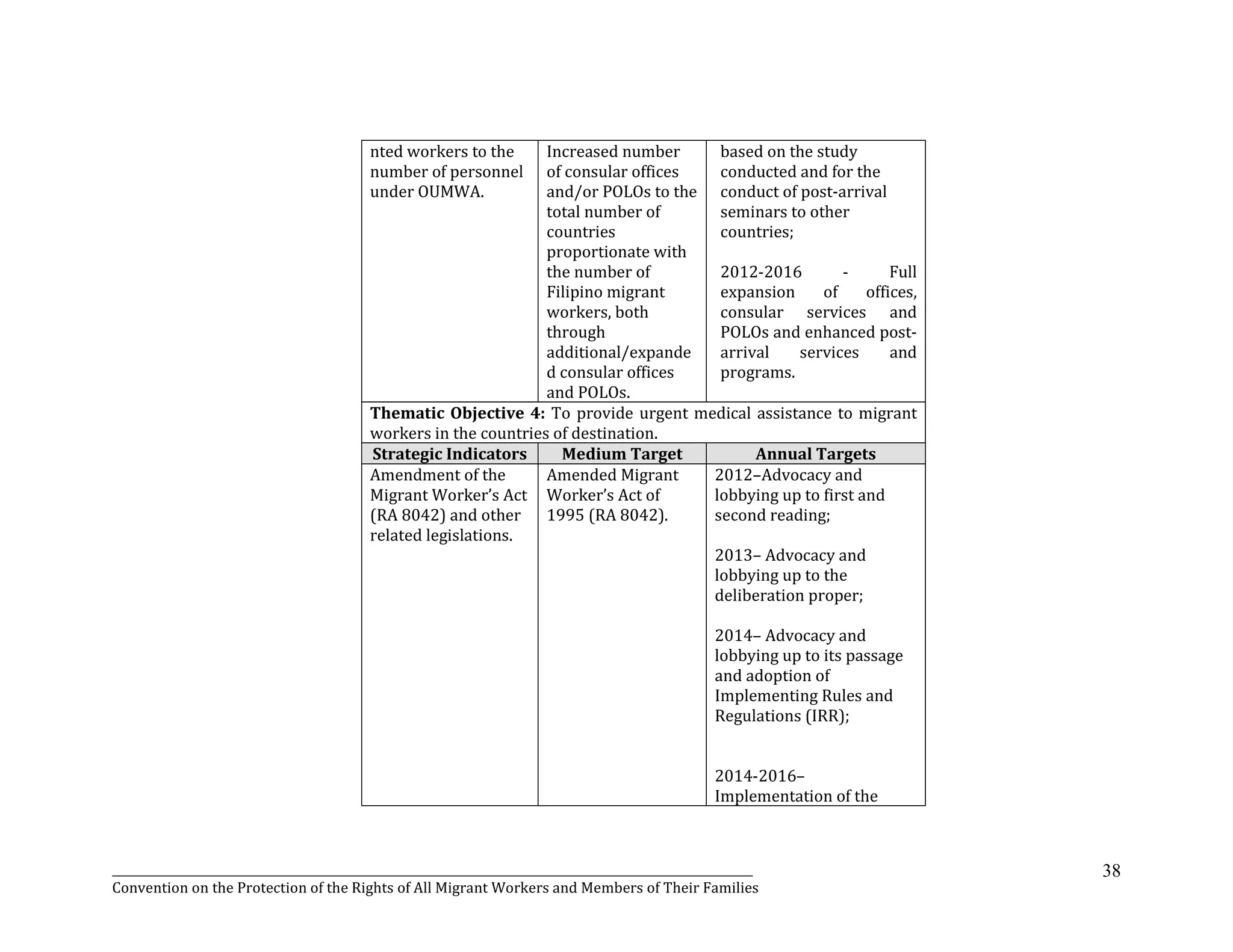
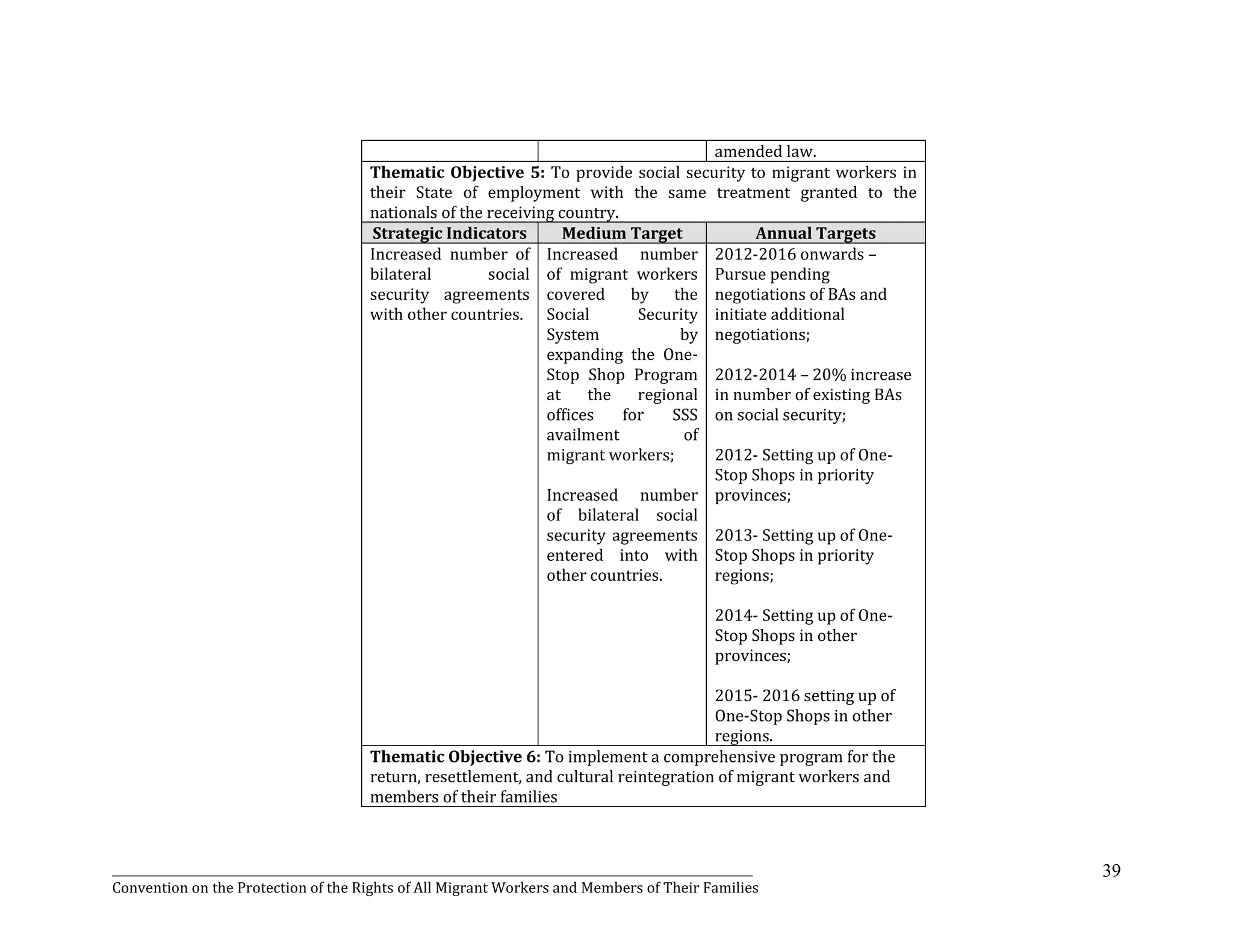
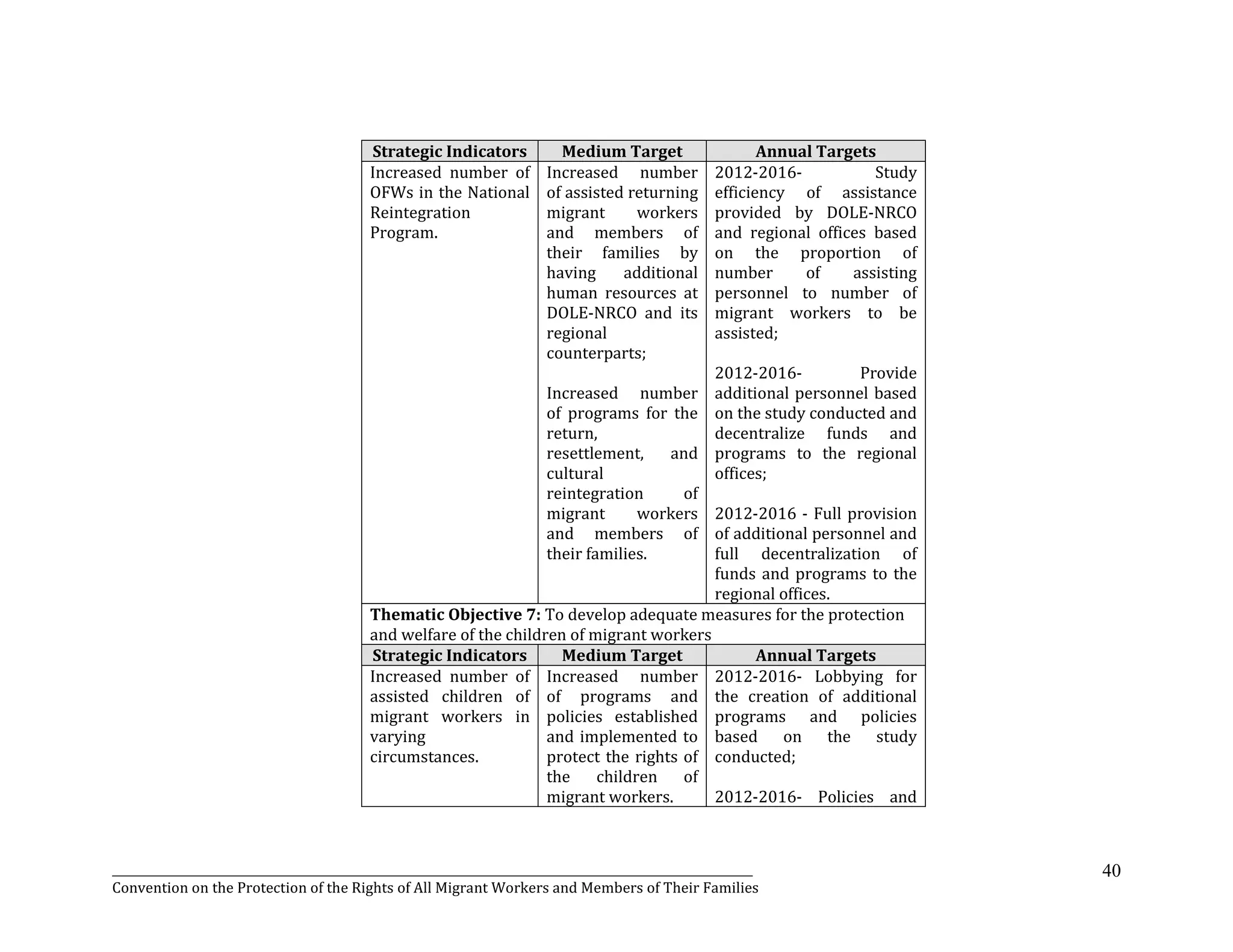

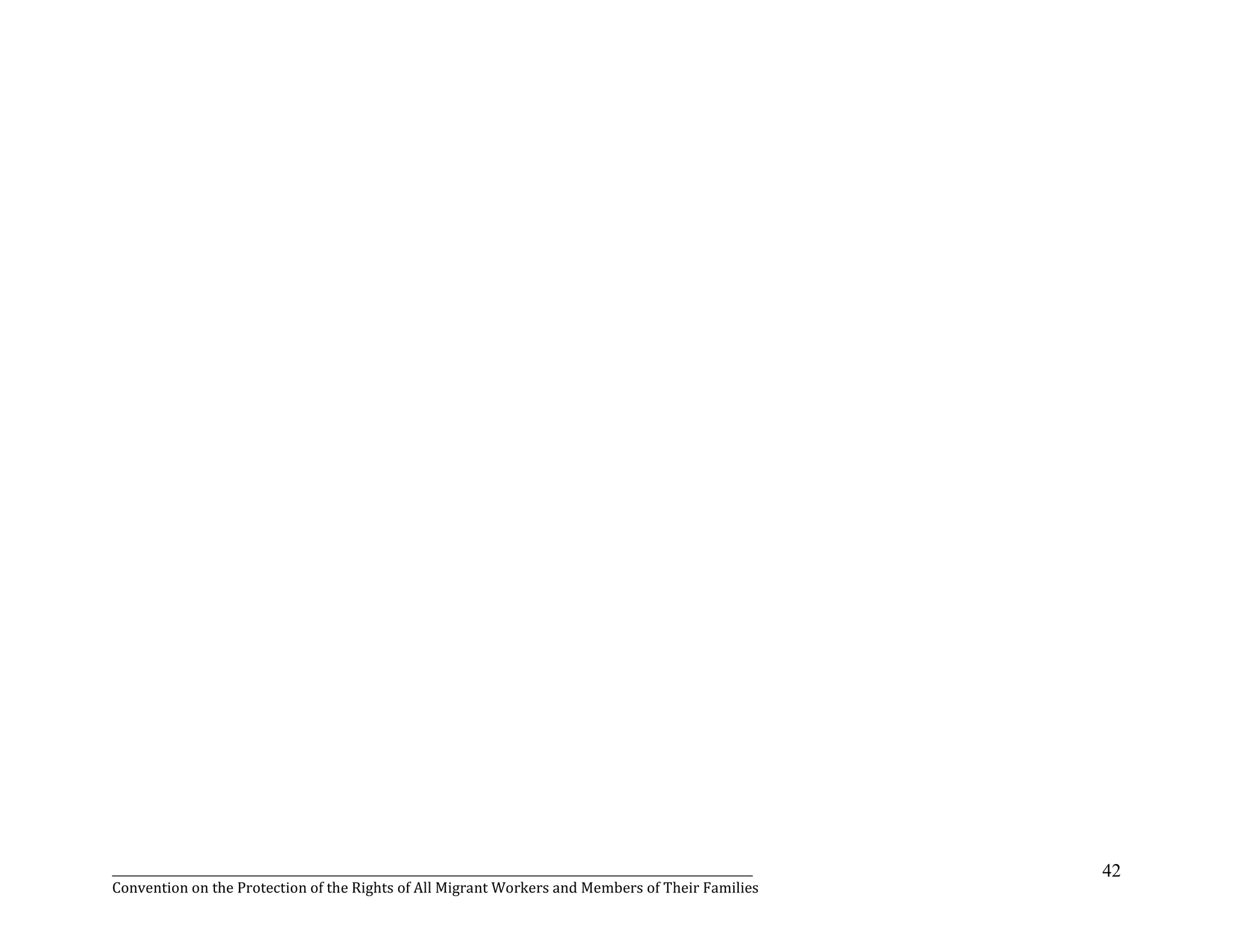
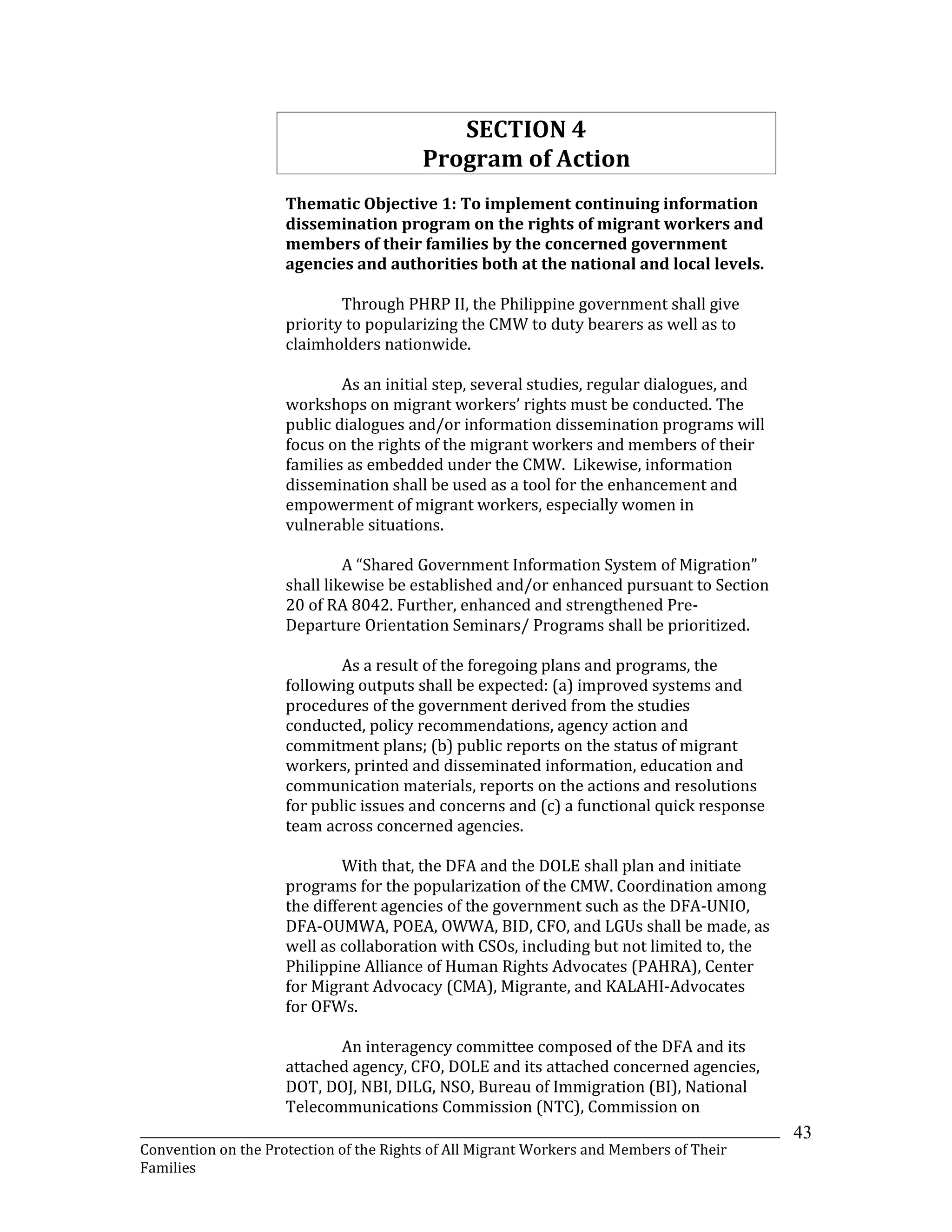
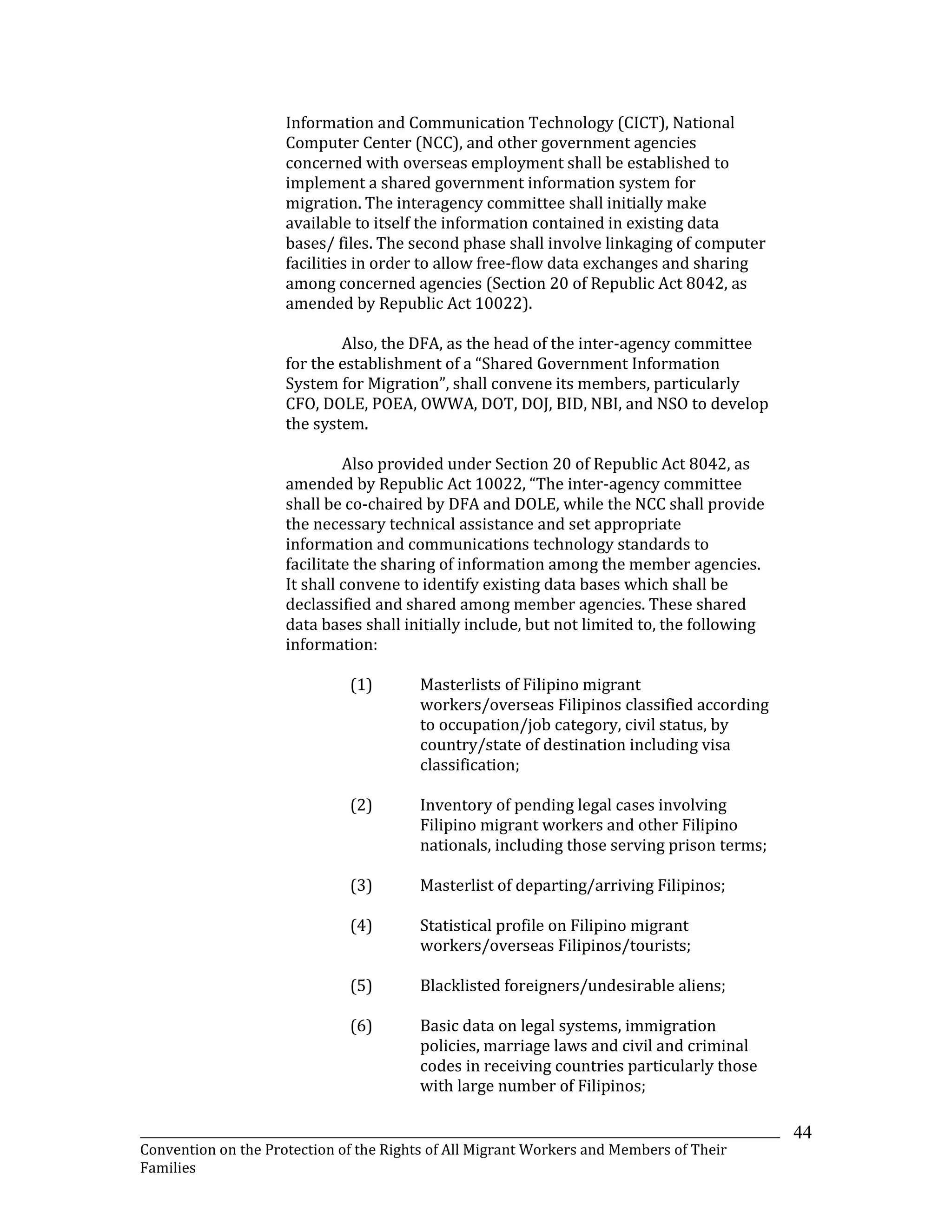
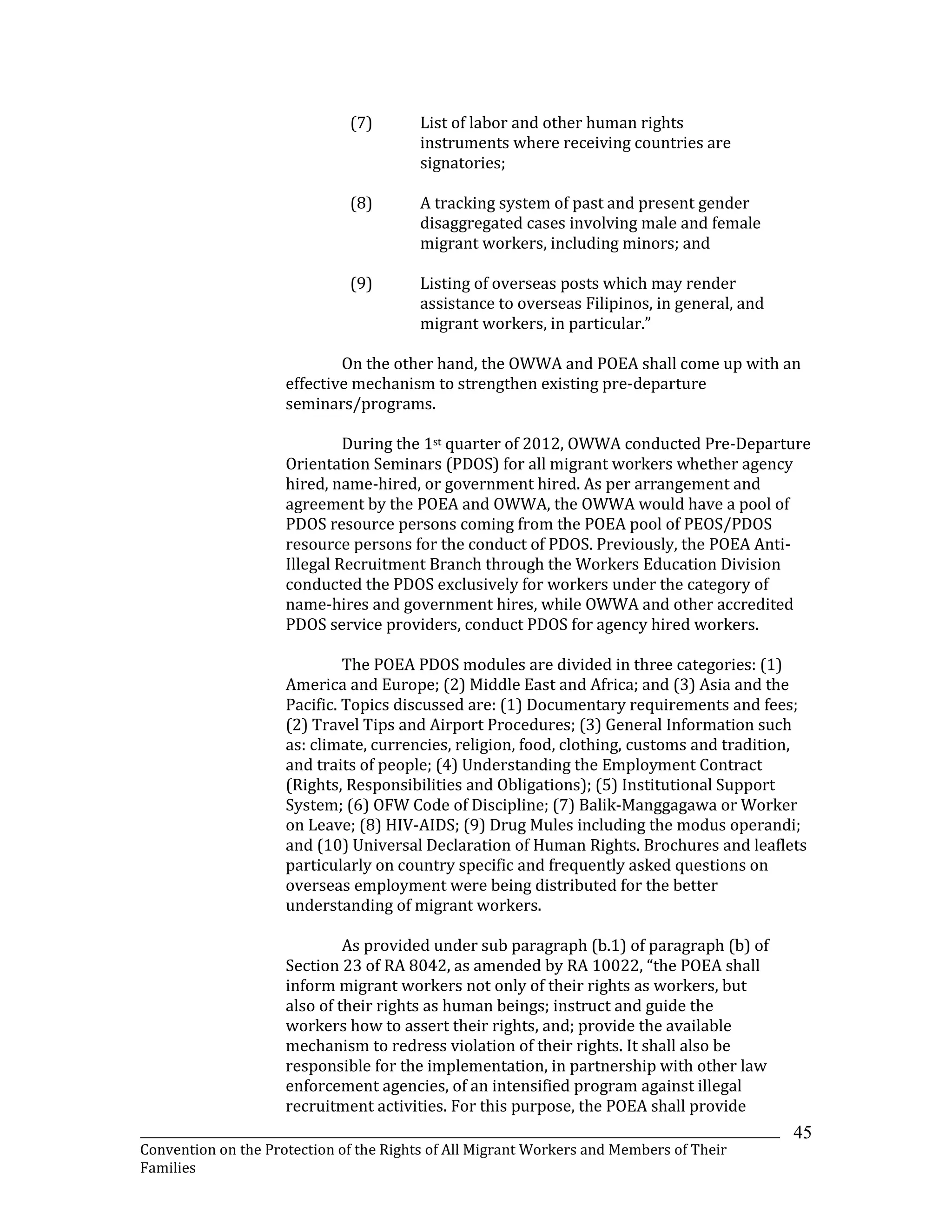
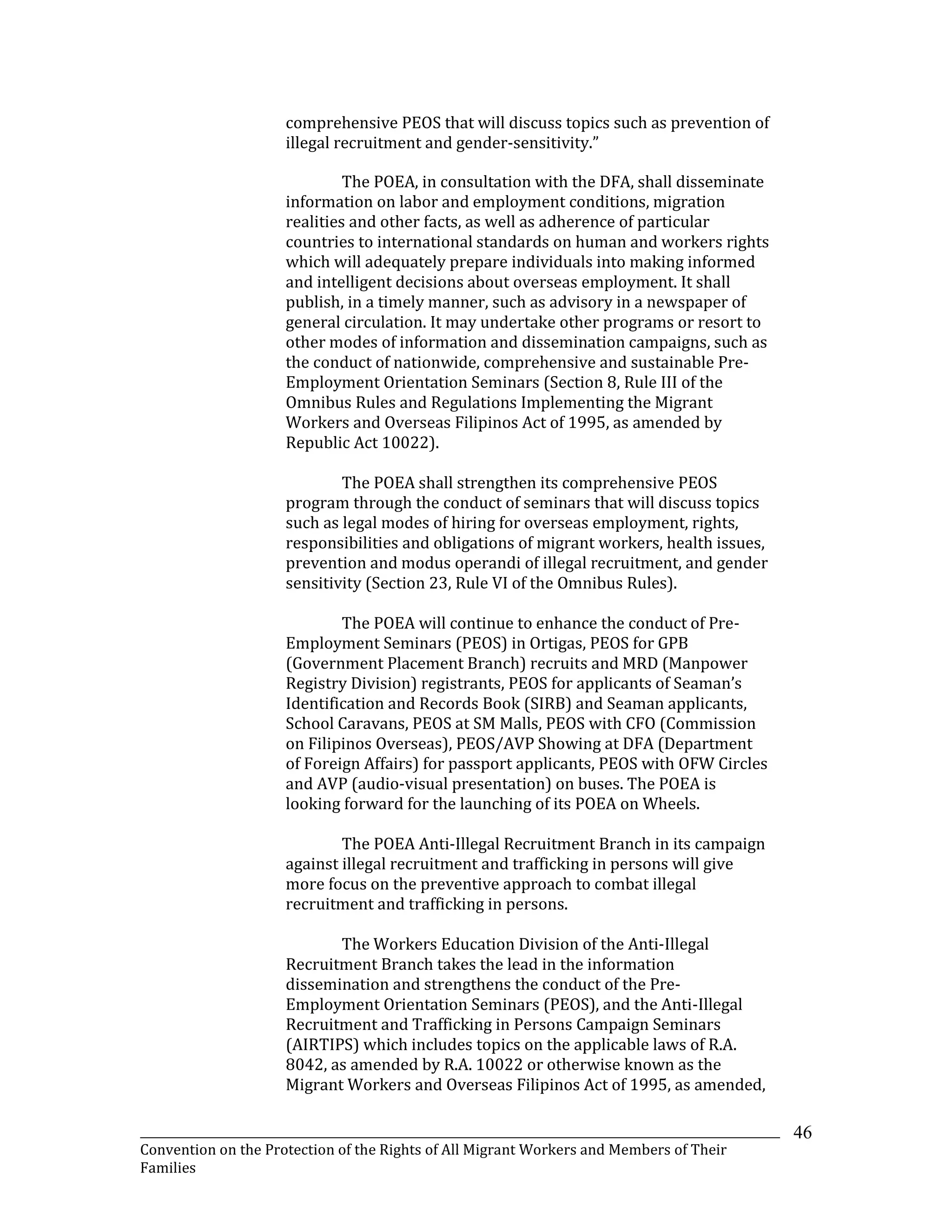
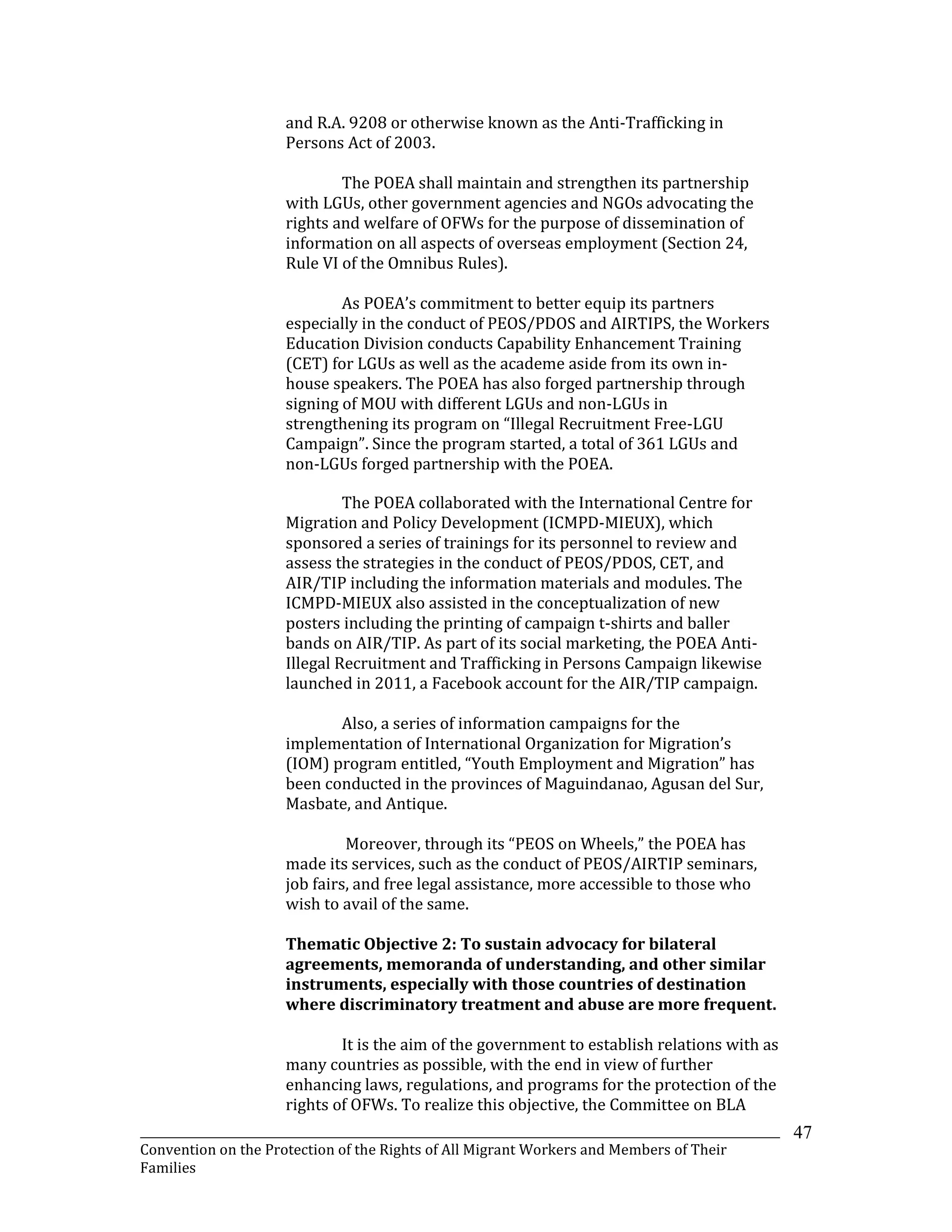
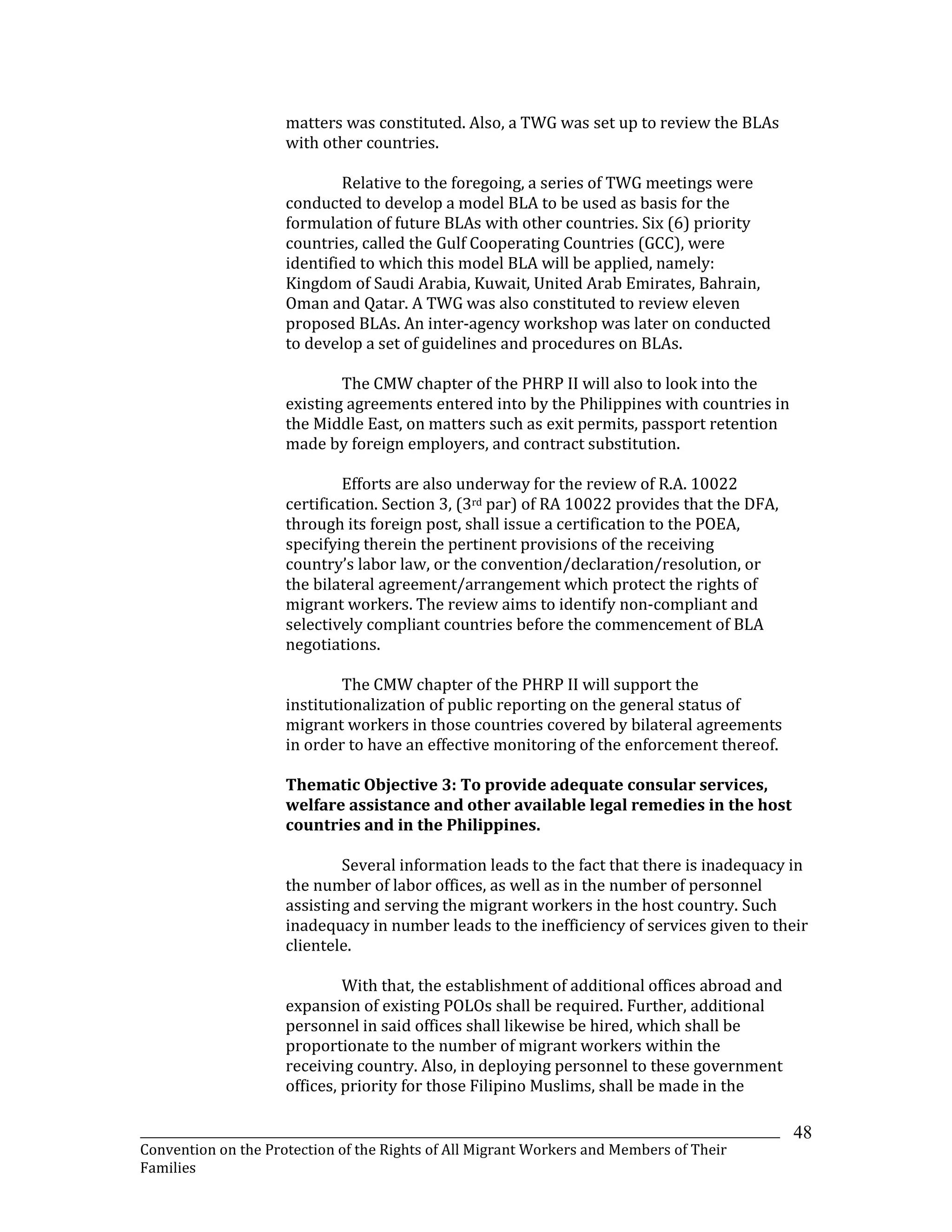
![_______________________________________________________________________________________________________________
Convention on the Protection of the Rights of All Migrant Workers and Members of Their
Families
49
Muslim countries, particularly those in the Middle East, for their
easy cultural integration.
Post arrival seminars shall be conducted immediately upon
arrival of the migrant workers abroad in the Philippine posts
and/or labor offices abroad. In line thereto, systems and procedures
in the delivery of services/assistance to migrant workers shall be
continuously improved.
The DFA and the DOLE-POLOs shall initiate in their
respective plans and programs for the provision of additional
posts/offices abroad and personnel abroad and shall coordinate
with one another for the continuous improvement of their systems
and procedures specifically the conduct of post arrival seminars.
Legal Assistant for Migrant Workers Affairs [Rule IX ]
The Legal Assistant for Migrant Workers Affairs under the
DFA shall be primarily responsible for the provision and over-all
coordination of all legal assistance services to Filipino Migrant
Workers as well as Overseas Filipinos in distress. In the exercise of
these primary responsibilities, he/she shall discharge the following
duties and functions:
(1) Issue the guidelines, procedures and criteria for
the provision of legal assistance services to
Filipino Migrant Workers;
(2) Establish close linkages with the DOLE, POEA,
OWWA and other government agencies
concerned, as well as with non-governmental
organizations assisting migrant workers, to
ensure effective coordination in providing legal
assistance to migrant workers;
(3) When necessary, tap the assistance of the
Integrated Bar of the Philippines (IBP), other bar
associations, legal experts on labor, migration
and human rights laws, reputable law firms, and
other civil society organizations, to complement
government services and resources to provide
legal assistance to migrant workers;
(4) Administer the Legal Assistance Fund for Migrant
Workers and to authorize its disbursement,
subject to approved guidelines and procedures,
governing its use, disposition and disbursement;
(5) Keep and maintain an information system for
migration;](https://image.slidesharecdn.com/chapter-7-cmw-chapter-160212080952/75/Chapter-7-CMW-Chapter-49-2048.jpg)
![_______________________________________________________________________________________________________________
Convention on the Protection of the Rights of All Migrant Workers and Members of Their
Families
50
(6) Prepare its budget for inclusion in the
Department of Foreign Affairs' budget in the
Annual General Appropriations Act, and;
(7) Perform such other functions and undertake
other responsibilities as may be useful, necessary
or incidental to the performance of his/her
mandate.
The Legal Assistance Fund created under the Act shall be
used exclusively to provide legal services for Migrant Workers and
Overseas Filipinos in distress in accordance with approved
guidelines, criteria and procedures of the DFA.
It shall be used inter alia for the following specific purposes:
(1) In the absence of a counsel de oficio or court-
appointed lawyer, payment of attorney's fees to
foreign lawyers for their services in representing
migrant workers facing criminal and labor cases
abroad, or in filing cases against erring or abusive
employers abroad, provided, that no amount shall
be disbursed for the appeal of cases except when
the penalty meted is life imprisonment or death
or under meritorious circumstances as
determined by the Undersecretary for Migrant
Workers Affairs;
(2) Bail bonds to secure the temporary release of
workers under detention upon the
recommendation of the lawyer and the foreign
service post concerned; and
(3) Court fees, charges and other reasonable
litigation expenses when so recommended by
their lawyers.
Establishment of Migrant Workers and Other Overseas Filipinos
Resource Center [Rule X (D)]
Migrant Workers and other Overseas Filipinos Resource
Center shall be established in countries where there are large
concentration of OFWs, as determined by the Secretary of DOLE. It
shall be established within the premises of the Philippine Embassy
or the Philippine Consulate, and under the administrative
jurisdiction of the former.
When the Migrant Workers and other Overseas Filipinos
Resource Center is established outside the premises of the Embassy](https://image.slidesharecdn.com/chapter-7-cmw-chapter-160212080952/75/Chapter-7-CMW-Chapter-50-2048.jpg)
